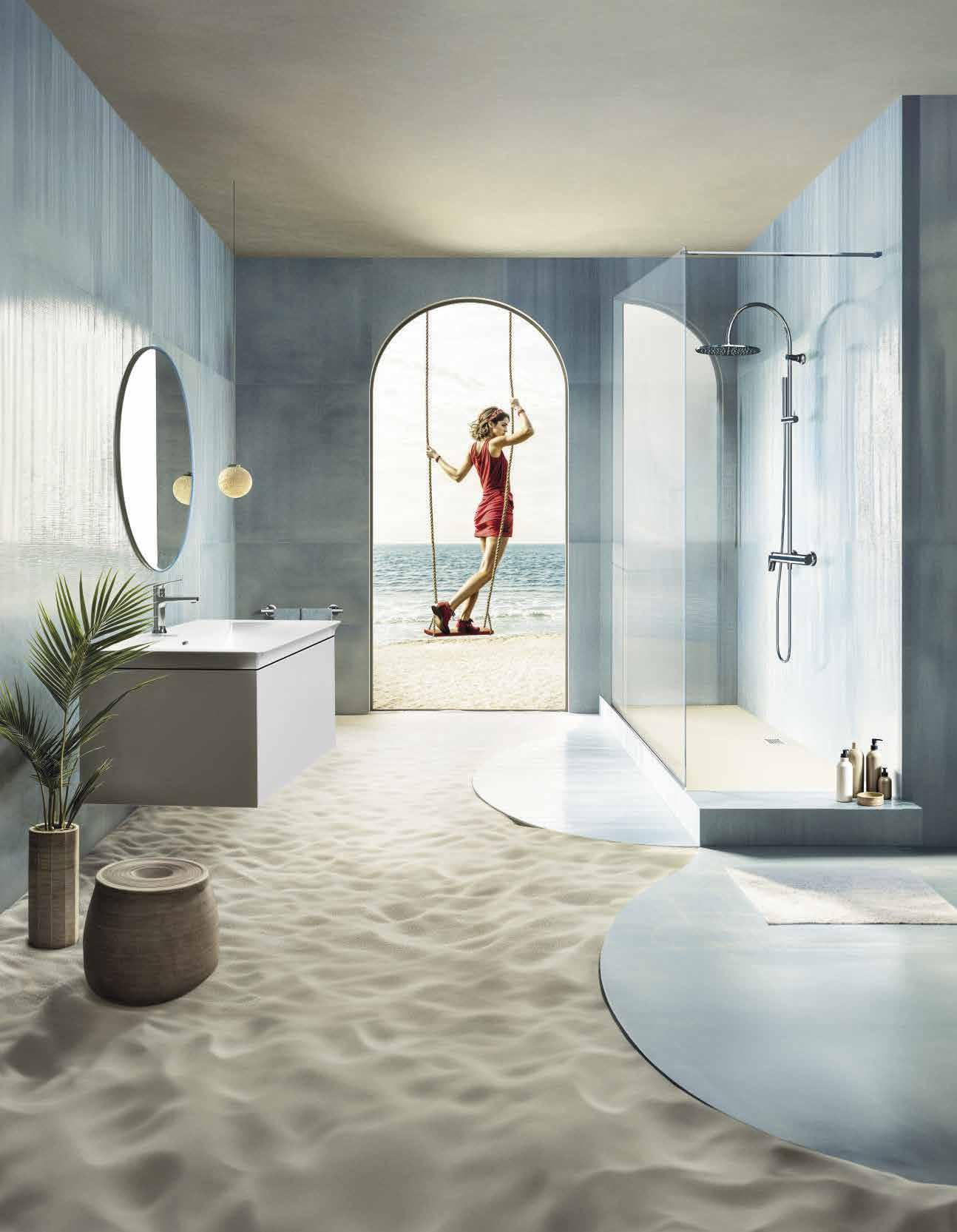
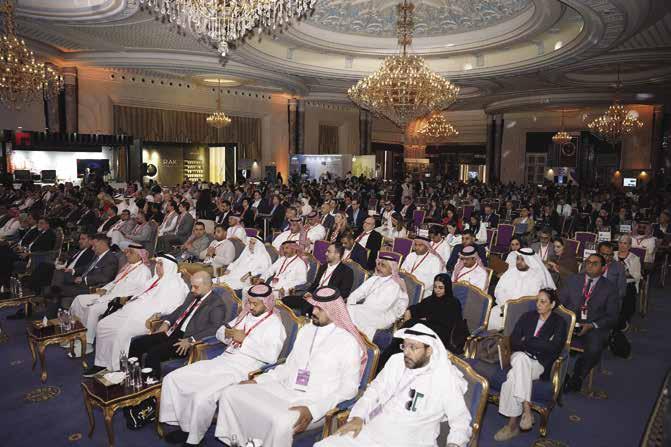

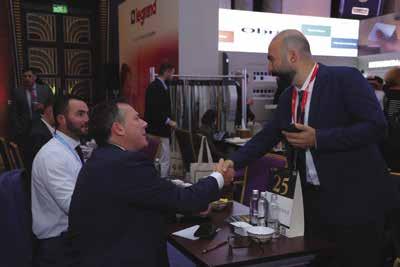

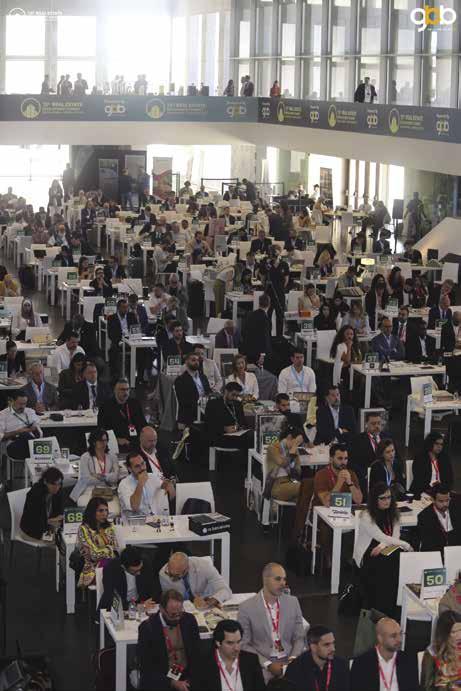

















INSIGHTS, PROJECTS, AND VISIONARIES SHAPING THE EVOLVING LANDSCAPE OF SAUDI ARABIA’S BUILT ENVIRONMENT.
As the dynamic landscape of Saudi Arabia’s construction and real estate sector evolves, this issue of Saudi Projects brings together thought leaders, groundbreaking projects, and transformative ideas that are shaping the Kingdom’s future.
Our cover story spotlights the powerhouse leadership driving BUNA Holding and its subsidiaries, BUNA Al Khaleej, EMCOTech, and DAC Group. Through in-depth interviews, we explore their commitment to excellence and sustainable, innovative development across the
In the world of interior design, AAID (Allen Architecture Interiors Design) stands out for its philosophy of designing with purpose. Grounded in integrity and respect for culture and environment, their approach offers a fresh perspective on creating spaces that resonate.
Events remain at the forefront of our industry, and this issue covers the 17th Real Estate Development Summit, where Saudi Arabia’s real estate pioneers share insights, spark collaboration, and push boundaries.
Smart cities remain key to Vision 2030, and we explore how technology is transforming urban development. From sustainability to digital connectivity, these initiatives are laying the groundwork for a future-ready Kingdom.
Our feature on Red Sea Global includes an exclusive interview with Rita Zeineddine, who shares her vision for designing the future at this prestigious giga project. We also bring you updates on LAHEQ and the luxurious NAMMOS Resort, underscoring the Red Sea’s role as a beacon of innovation and sustainable luxury.

Meanwhile, ROSHN Group’s recent milestone, surpassing one billion dollars in brand value and becoming Saudi Arabia’s most valuable real estate brand, speaks volumes about the sector’s strength. We also examine RESA Gulf RGS’s innovative B4B and P4P models that are redefining value creation.
This issue is a testament to the Kingdom’s unwavering ambition and the people and projects making it happen. I invite you to explore these stories and be inspired by the visionaries shaping the future of Saudi Arabia.
Rod Millington EDITOR
saudiprojects@tpg.media
www.saudiprojects.media
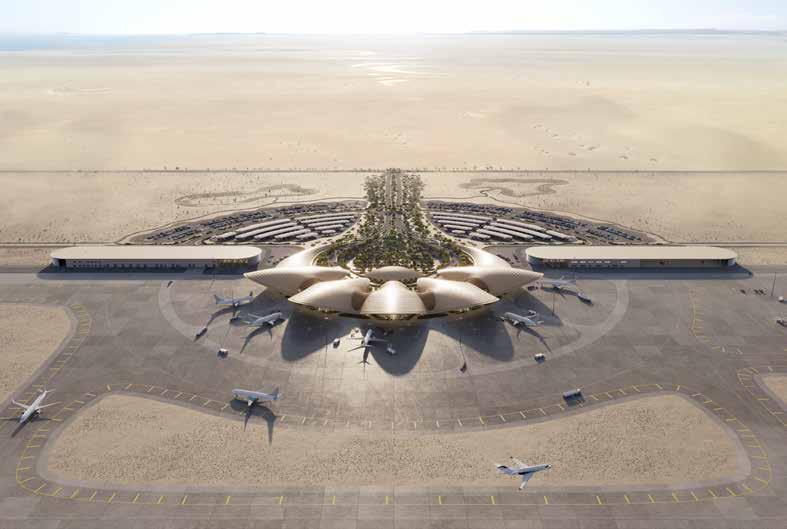
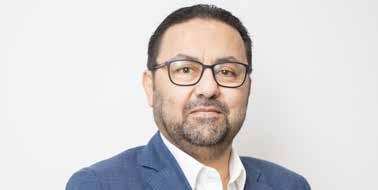



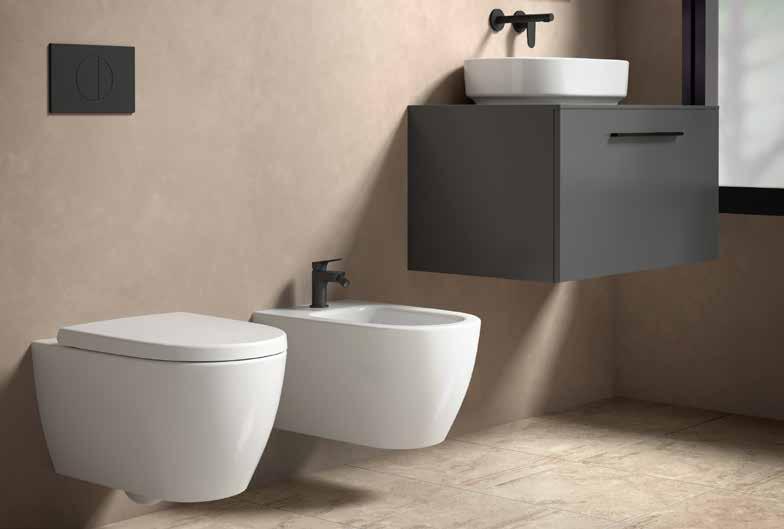
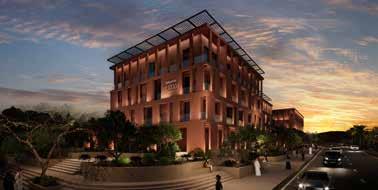
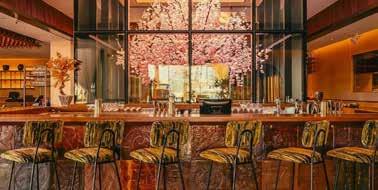



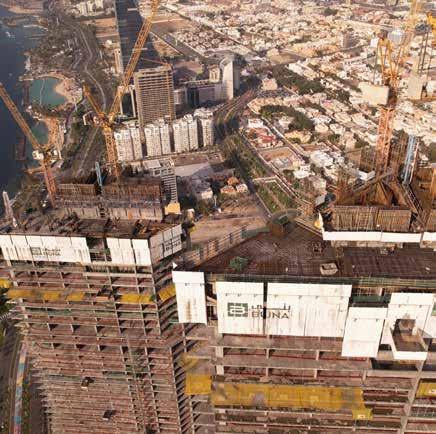

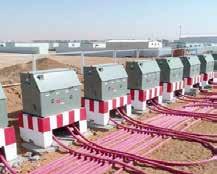
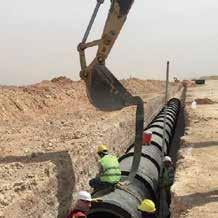
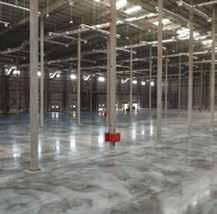
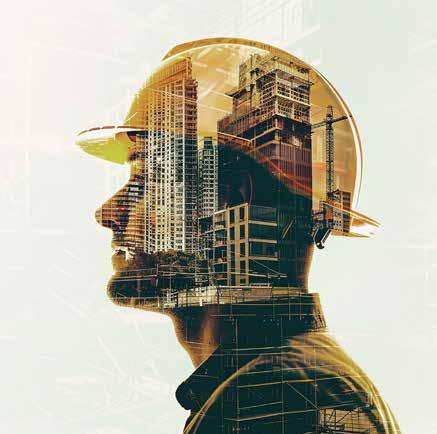
Our commitment to excellence is evident in every project we undertake, from high-rise buildings to mixed-use developments.
With a team of highly qualified professionals and a portfolio that includes subsidiaries like ALIGN Consultancy, BUNA, TAAM, and DAC Group, BUNA offers comprehensive services that encompass every facet of construction and project management.
Our recent collaboration with SCG International to introduce green construction technologies, such as Ultra High-Performance Concrete (UHPC) and 3D printing, underscores our dedication to innovation and sustainability, key pillars of Saudi Arabia’s Vision 2030. Partner with BUNA Holdings and be part of building a sustainable and innovative future for Saudi Arabia.
To explore our capabilities or connect with our team visit.
https://buna.sa info@bunaholding.com +966 12 658 6686

Maram Al Johani serves as the Acting Chief of Staff and Secretary General to the PIF Board of Directors, playing a key role in driving the Public Investment Fund’s ambitious agenda. She leads strategic planning, data and committee governance, and the Project Management Office, ensuring effective oversight and alignment with PIF’s long-term goals. Al Johani joined PIF in 2017 after a tenure at PricewaterhouseCoopers, bringing a wealth of experience in governance, data

Saad Alkroud is the newly appointed Head of the Local Real Estate Investment Division at the Public Investment Fund, where he will oversee the development and management of PIF’s domestic real estate and infrastructure investment portfolio. With a career at PIF dating back to 2016, Alkroud has served in key roles including Head of Stakeholder Management and Chief of Staff. In these positions, he managed PIF Board and Committee affairs, international

Accuracy has announced the appointment of Basel Tachwali, a seasoned architect and construction technology specialist, to its senior team. With over a decade of experience in modular construction, digital integration, and sustainability, Basel brings a wealth of expertise to the firm. His notable projects include The Coastal Village Residence by The Red Sea Global, which earned accolades for sustainability and innovation.
analysis, and advisory services. Since 2021, she has headed PIF’s Data and Committees Governance and Advisory Department, developing best practices and fostering collaboration across the organization. Her deep understanding of governance and strategic planning underpins PIF’s global leadership and strengthens its mission to transform Saudi Arabia’s economy and support its portfolio companies’ growth and innovation.
relations, and relationships with Saudi entities to deliver strategic initiatives and objectives. His experience includes supervising corporate strategy, managing the PIF Project Management Office, and supporting the establishment of new companies. As Head of the Local Real Estate Investment Division, Alkroud will drive sustainable growth and play a pivotal role in shaping landmark developments that support Saudi Arabia’s economic diversification.
Previously, Basel served as the Continuous Improvement Manager at DuPod, where he led advancements in hybrid modular manufacturing. He also held an advisory role at Dubai Municipality, focusing on regulating construction innovations. Recognized as Young Talent of the Year by Design Middle East in 2021 and featured in the Middle East’s Most Influential Architects Powerlist in 2022, Basel's appointment underscores Accuracy's commitment to driving innovation in the construction sector.
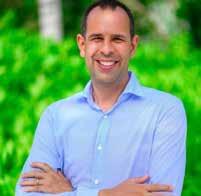
Six Senses Hotels Resorts Spas has appointed Benjamin Kreuz as the General Manager of Six Senses Southern Dunes, The Red Sea, the first resort to open within the Red Sea Global’s luxury development in Saudi Arabia. Kreuz brings over 20 years of experience in luxury hospitality, having held leadership positions at international hotels
and resorts. His appointment comes as Six Senses Southern Dunes continues to establish itself as a leader in sustainable luxury. Kreuz's focus will be to elevate the guest experience while upholding Six Senses' commitment to sustainability and cultural preservation. His leadership is set to reinforce the resort’s position as a premier destination in the region.
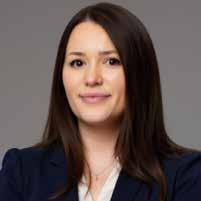
Hyatt has appointed Briana Swift as Regional Vice President of Development for Saudi Arabia, marking a strategic move to bolster its presence in the Kingdom. Previously overseeing Northern Europe, Briana was instrumental in Hyatt’s expansion, including brand entries into Scandinavia, Malta, and the Greek Isles. In her new role, based in Riyadh, she will lead development efforts aligned with Saudi Arabia’s Vision 2030, focusing on
projects like Hyatt Place AlUla, Grand Hyatt The Red Sea, and Miraval The Red Sea. Swift joined Hyatt in 2017 and has a decade of experience in hospitality development. She holds a Master’s in International Hospitality Management from the University of Surrey and dual Bachelor’s degrees from Boston University. Recognized for her leadership, she received the 2024 ISHC Young Leader Award at IHIF.
AlUla and Almosafer joined forces to expand experience bookings across Saudi Arabia.
In a major step toward boosting visitor access and global reach, AlUla, the iconic heritage and luxury destination in northwestern Saudi Arabia, entered a groundbreaking partnership with Almosafer Activities—the Kingdom’s first dedicated tours and activities platform.
This marked AlUla’s first-ever distribution partnership, where curated experiences from the Royal Commission for AlUla (RCU) were made bookable through Almosafer Activities’ advanced platform. The collaboration, part of a joint venture between Almosafer (a Seera Group company) and Asia’s leading experiences platform Klook, enabled both companies to promote and sell AlUla’s offerings to domestic and international travelers alike.

Pioneering partnership to showcase Saudi Arabia’s authentic hospitality globally.
Almosafer, Saudi Arabia’s leading travel company and part of Seera Group, has partnered with the Hotel Management Company “Adeera,” a Public Investment Fund (PIF) company. This strategic agreement is designed to highlight and promote authentic Saudi Arabian hospitality to domestic and international travelers, supporting the Kingdom’s Vision 2030 goals.
As part of the newly signed MoU, Almosafer becomes Adeera’s first global travel agency partner.

Landmark contract boosts Saudi energy infrastructure and sustainability initiatives.
NesmaKent Energy Company (NKJV), a joint venture between Nesma & Partners (N&P) and Kent, has signed a landmark contract with Aramco to kickstart phase one of the National EPC Champion Initiative. This milestone marks the first Project Management Consultancy (PMC) contract under the program, underscoring NesmaKent’s pivotal role in advancing Saudi Arabia’s energy infrastructure.

Driving innovation, growth, and collaboration in Saudi Arabia’s real estate sector.
ROSHN Group, Saudi Arabia’s leading multi-asset real estate developer and a Public Investment Fund (PIF) company, has launched ROSHNEXT, its dedicated innovation arm. This dynamic program is designed to create human-centric experiences that drive growth, boost collaboration, and set new benchmarks in the real estate sector. ROSHNEXT aims to accelerate innovation by fostering strategic partnerships, adopting advanced technologies, and rapidly turning new ideas into real-world solutions. Through this initiative, ROSHN Group is reinforcing its vision to lead meaningful innovation and transformation across the real estate industry.
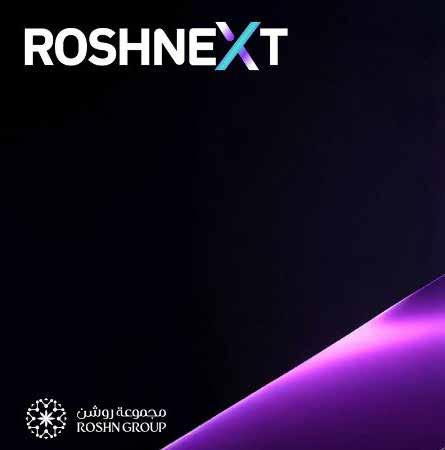
Saudi and global leaders convene to boost governance and collaboration.
PIF brings together more than 1,000 board members and executives from its portfolio companies around the world for the second edition of the PIF Directors’ Gathering.
The event brought together directors and executives from Saudi Arabia and beyond to align on priorities between PIF and its portfolio companies and exchange insights to enrich the PIF ecosystem.
The Directors’ Gathering focused on optimizing board performance and fostering collaboration among PIF’s portfolio companies and their stakeholders.


Setting a new standard for aviation comfort and luxury in Saudi Arabia.
PIF-owned Riyadh Air, Saudi Arabia’s new national airline set to take flight later this year, is revolutionizing aviation travel with the launch of its exceptional cabin interiors. The airline’s Boeing 787 fleet will feature a four-class configuration: Business Elite, Business, Premium Economy, and Economy— redefining luxury and comfort in the skies.
As a fresh airline with no legacy to inherit, Riyadh Air’s innovative cabin designs blend luxury, comfort, and cutting-edge technology to create a new standard for passengers.
Strengthening partnerships with Europe and global investors.
PIF has announced the opening of a new subsidiary company office in Paris, further expanding its global presence and strengthening ties in France, a key international market. This new office highlights PIF’s commitment to working closely with local partners, leading businesses, and institutional investors.
French President Emmanuel Macron, PIF Governor H.E. Yasir Al-Rumayyan, and other senior officials and business figures will attend the opening ceremony, which coincides with the annual “Choose France” event in Paris.
PIF is a long-term investor in some of the world’s most innovative and transformational industries, businesses, and markets. The new Paris office will support PIF in building and deepening partnerships across the region.

Between 2017 and 2024, PIF invested $84.7 billion across Europe, contributing $52 billion to Europe’s GDP and creating more than 254,000 direct and indirect jobs. This includes $8.6 billion invested in France alone, adding $4.8 billion to France’s GDP and generating 29,000 jobs in the country.
The opening of the Paris office aligns with PIF’s strategy to drive global economies and lead Saudi Arabia’s economic transformation. As one of the world’s most impactful investors, PIF has created over 1.1 million direct and indirect jobs both in Saudi Arabia and globally. PIF is committed to building new partnerships with leading international institutions.
Previously, PIF has established subsidiary company offices in New York, London, Hong Kong, and Beijing. Today, it has approximately 220 portfolio companies worldwide.
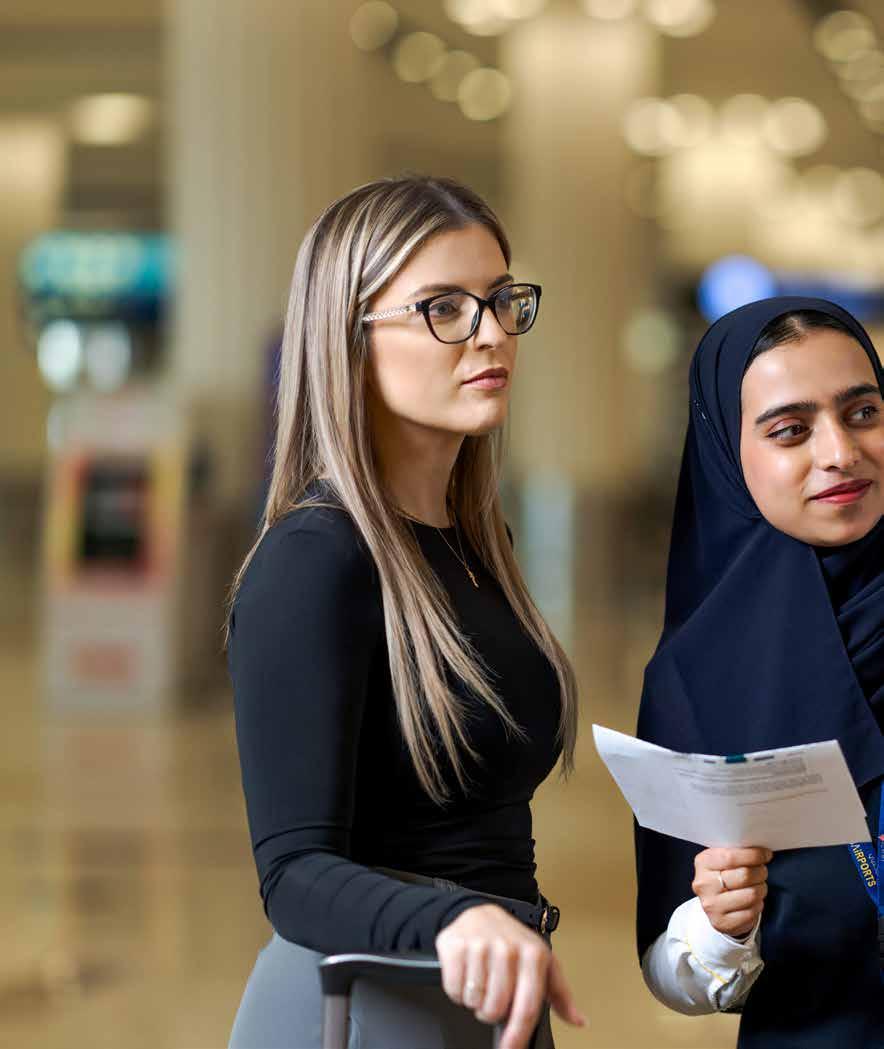
DEVELOPING LOCAL TALENT IS KEY TO ACHIEVING THE KINGDOM’S AVIATION TRANSFORMATION GOALS.

By Samantha Rowles, Managing Director of Mobility & Emergency Services, Serco Middle East
While the headlines spotlight mega-terminals, multibillion-dollar projects, and recordbreaking passenger forecasts, the real story of Saudi Arabia’s aviation transformation is unfolding behind the scenes.
This isn’t just a physical overhaul, it’s a mindset shift. The Kingdom is investing not only in new airports but in building national capabilities. Ultimately, the future of Saudi aviation won’t be defined by steel and concrete, but by the people who make it work. And the public sector is playing a critical, though often unsung, role in this evolution.
Saudi Arabia’s Vision 2030 sets ambitious goals: to become a global logistics and tourism hub, connecting 250+ destinations and welcoming 330 million travelers annually. The Kingdom is making significant strides toward this vision, with landmark projects like King Salman International Airport in Riyadh and expansions in Abha, Jeddah, and Taif.
But scale alone won’t guarantee success. Longterm impact depends on sustainability, service quality, and local capability and this is where knowledge transfer becomes indispensable.
One of the most transformative developments is the focused upskilling of Saudi nationals across all aviation sectors. From air traffic controllers and terminal managers to digital engineers and safety officers, the Kingdom is building a workforce to lead from the front.
This is where the public sector’s role becomes vital. Organizations like Serco, with deep regional experience, are enabling this transformation by embedding international best practices into local operations. The model is simple yet powerful:
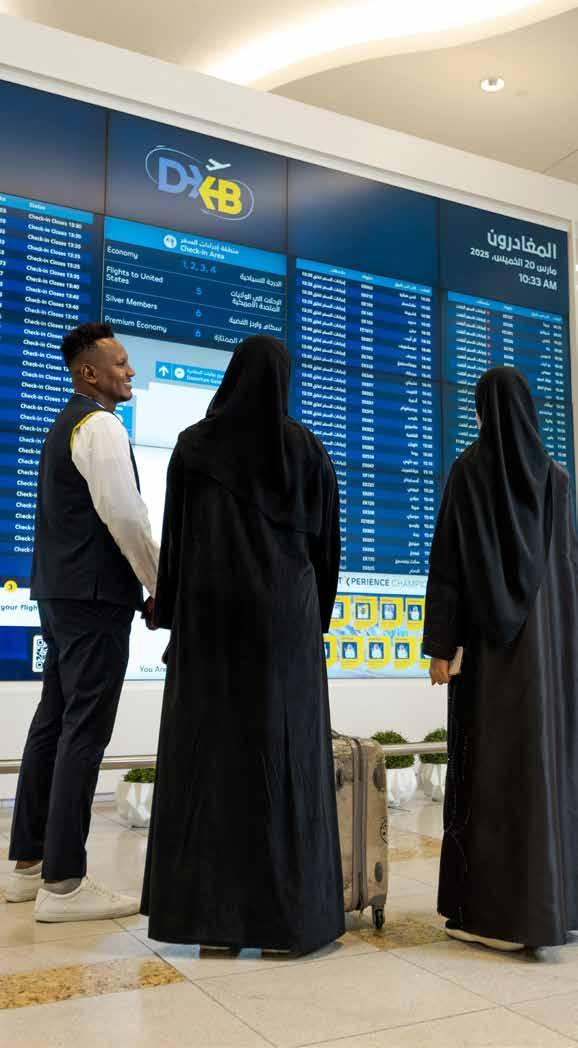

Train, Transform, Transfer. This ensures that knowledge is passed on effectively, operations evolve with innovation, and Saudi nationals take the reins with confidence.
Local teams are learning directly from global experts through tailored training that emphasizes not only technical skills but also leadership, safety culture, and long-term operational excellence.
Saudi airports are embracing a quiet digital revolution. From AI-powered predictive maintenance and biometric check-ins to advanced analytics for flight scheduling and baggage handling, technology is becoming integral.
Yet behind every smart system is a smarter team. Public sector partnerships with universities, training centers, and global experts ensure Saudi talent can manage,
enhance, and lead in this tech-driven space. The digital transformation isn’t just happening, it’s being localized.
Saudi Arabia’s net-zero goal by 2060 places a clear expectation on aviation to act responsibly. Sustainability isn’t being treated as an add-on, it’s being built in. Take King Salman International Airport, aiming for LEED Platinum status, powered by renewables, and designed with low-carbon materials.
But sustainability requires more than design, it demands operational change. That means training teams to manage green energy systems, minimize waste, and oversee ecofriendly ground handling. Again, the public sector is at the heart of this transformation.
For seasoned professionals in the region, the speed of change in Saudi Arabia is impressive. But more remarkable is the intent, building fast, yes, but building wisely. Growth is being engineered to be inclusive, resilient, and led by Saudi nationals.
Today, the public sector is no longer just a service provider. It’s a strategic enabler, creating the partnerships, policies, and programs that empower the private sector while ensuring that local systems and people grow stronger.
Travelers may never notice the hours of training, global expertise, or digitized systems that ensure smooth journeys, but that’s the goal. The most profound transformations are often invisible.
Saudi Arabia’s airports of the future are rising today, built not just in steel and glass, but in skilled people, smart systems, and a clear purpose.
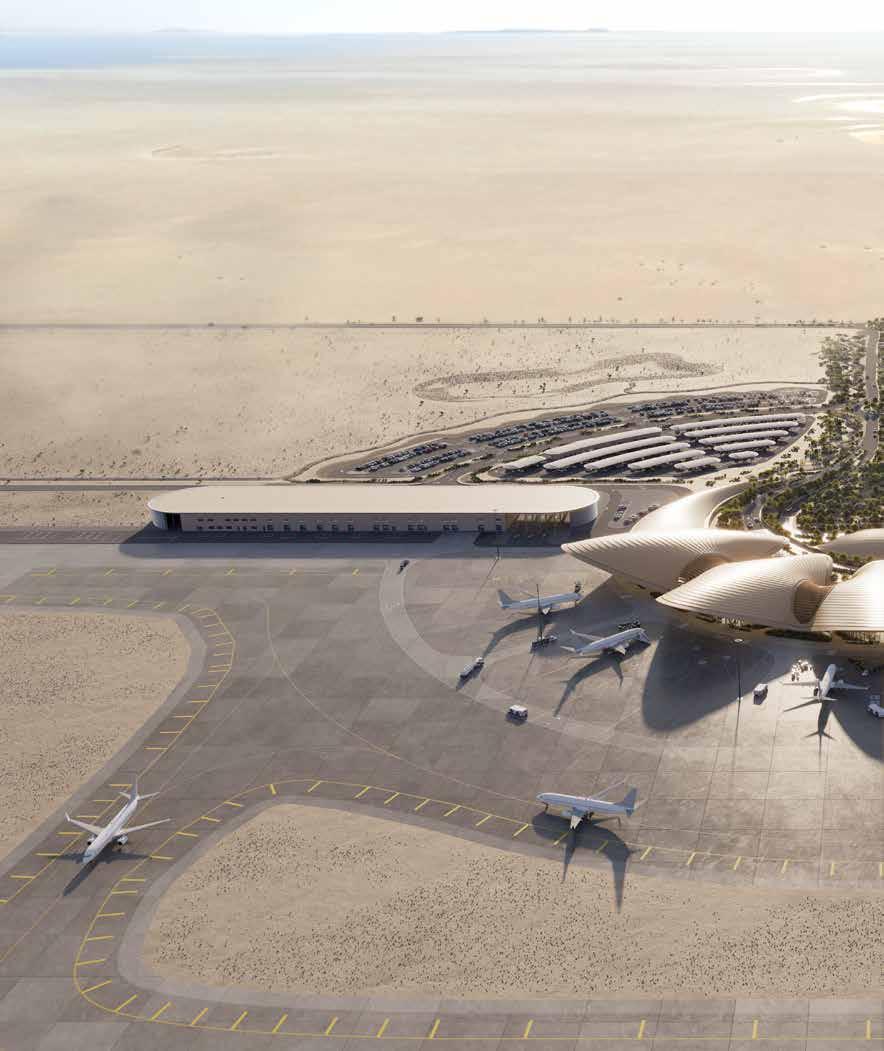
Strategic Investments in Ports, Power, and Transportation are Propelling The Kingdom Toward Vision 2030.

s Saudi Arabia accelerates its journey toward Vision 2030, infrastructure development stands as the Kingdom’s cornerstone for economic transformation and global integration. From aviation and logistics to renewable energy and smart mobility, Saudi Arabia is reshaping its physical and digital landscape to support a thriving, sustainable future.
Transportation infrastructure is a key pillar in Saudi Arabia’s Vision 2030 goals, with billions invested in improving mobility and logistics.
Air Travel: In 2024, Saudi airports handled 128 million passengers, a 45.8% increase since 2016. Expansion projects at King Khalid International Airport in Riyadh and King Abdulaziz International Airport in Jeddah are scaling up capacity to meet surging demand.
Rail & Metro: The Riyadh Metro, scheduled for completion in 2025 at a cost of $22.5 billion, will revolutionize urban travel. The Haramain High-Speed Railway is already enhancing intercity connections, reducing congestion and emissions.
Road Networks: Massive upgrades in road infrastructure are streamlining trade routes and enabling smoother transport of goods across the Kingdom and beyond.
“These infrastructure projects are not just constructions; they are the pillars of our nation’s future,” said a senior official from the Ministry of Transport.
ANCHORING GLOBAL TRADE
Strategically positioned between three continents, Saudi Arabia is strengthening its global shipping profile.
Port Expansion: The Saudi Ports Authority (Mawani) reported that ports handled 320.78 million tonnes of cargo in 2024—a 14.45% yearon-year increase. Key developments include:
A $79 million logistics zone at Dammam Port.
Ongoing enhancements to King Abdullah Port and Jeddah Islamic Port.

128 million passengers utilized Saudi airports in 2024—up 45.8% since 2016
A national goal to exceed 40 million container capacity annually.
These projects aim to streamline international shipping routes and integrate port infrastructure with 20 new logistics hubs across the country.
“Saudi ports are becoming central nodes in the global supply chain,” commented a Mawani spokesperson. “Efficiency, scale, and connectivity are our guiding principles.”
As the Kingdom shifts toward renewable energy, key infrastructure players are working to meet rising demand and ensure long-term sustainability.
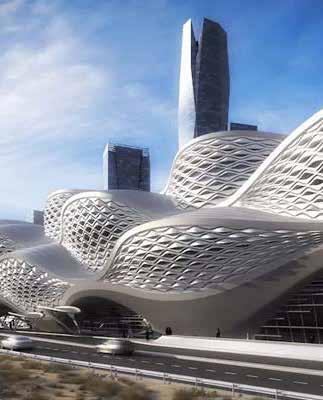
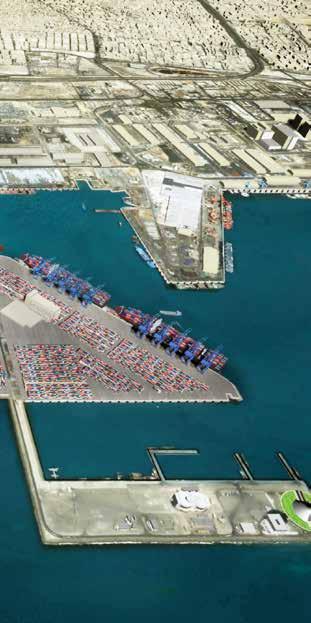
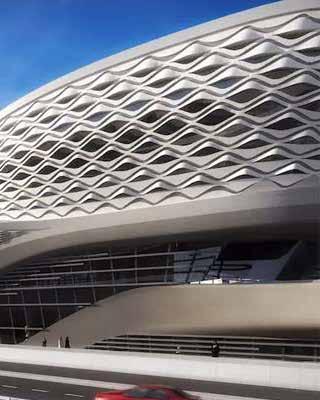
Al-Babtain Power and Telecommunication Co. is advancing national power infrastructure through major contracts:
A SAR390 million ($104 million) deal with Larsen & Toubro for the 500kV HVDC Interconnection Project.
A SAR777.2 million ($207.2 million) contract with Hyundai Engineering & Construction for similar initiatives.
These high-voltage systems will support energy transmission and enhance grid stability, particularly as solar and wind farms come online under Vision 2030’s renewable energy targets.
Water Infrastructure: Advanced desalination and water treatment plants are being built to secure supplies for growing urban centers and agriculture.
Digital Connectivity: With the rollout of 5G and establishment of new data centers, Saudi Arabia is positioning itself as a regional tech and innovation hub.
“We are investing in tomorrow’s infrastructure today—balancing resilience, sustainability, and digital readiness,” said an executive from Al-Babtain.
A hallmark of Saudi Arabia’s infrastructure success is the strong collaboration between public institutions and private enterprise. Global firms like AtkinsRéalis are contributing to sustainable development and engineering solutions across projects. These partnerships amplify innovation, reduce costs, and ensure world-class execution.
“Participating in Saudi Arabia’s transformation is a once-in-a-generation opportunity,” said an executive at a leading construction firm. “The scale and ambition here are unparalleled.”
This infrastructure renaissance is not just about building bridges, roads, and ports—it’s about building a resilient, connected, and diversified future for the Kingdom. As Saudi Arabia advances toward 2030, its bold infrastructure agenda continues to set new standards for progress in the region and beyond.
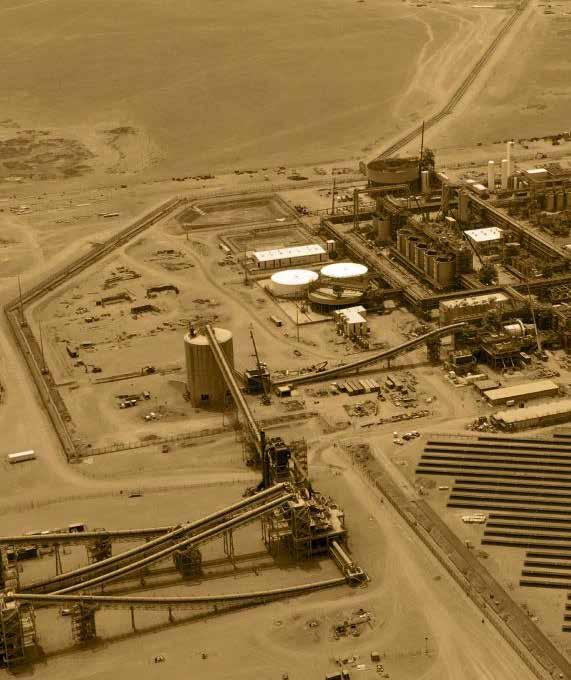
PUBLIC INVESTMENT FUND IS TURNING THE KINGDOM INTO A GLOBAL HUB FOR CRITICAL MINERALS.

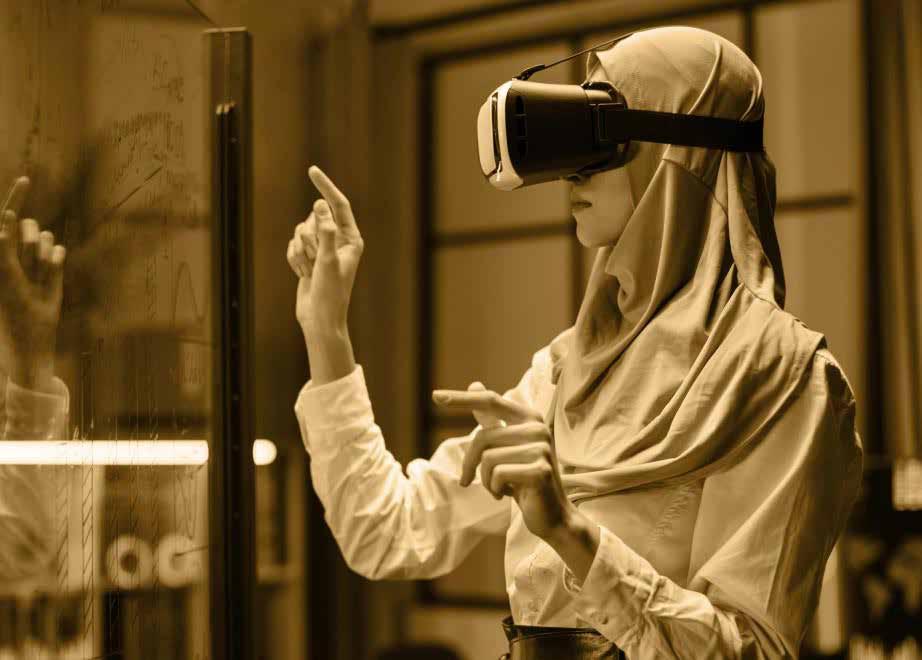
As the global energy landscape shifts toward renewables, the demand for critical minerals is surging. Technologies like solar panels, wind turbines, and electric vehicles require far more raw materials than traditional fossil fuel systems, up to ten times more, according to the International Energy Agency. To meet global climate targets, production of minerals such as lithium, cobalt, and rare earths must increase up to six-fold by 2040.
Recognizing this opportunity, Saudi Arabia’s Public Investment Fund (PIF) is taking bold steps to position the Kingdom as a major player in the global mining sector.
“PIF is an impactful investor and a key driver of Saudi Arabia’s economic diversification,” says
Muhammed AlDawood, Head of Industrials and Mining Sector, MENA Investments at PIF. "It’s a global challenge—and we’re thinking globally.”
Over the past decade, PIF-backed mining firm Ma’aden has diversified beyond oil into gold, bauxite, and copper. Now, it is focused on unlocking the mineral potential of the Arabian Shield—an area rich in resources critical to the green energy transition.
“Ma’aden is now one of the world’s top spenders on exploration in a single country,” says Robert Wilt, CEO of Ma’aden. “We believe there are significant undiscovered resources here. Our mission is to find and develop them responsibly.”
To accelerate discovery and development, Ma’aden is investing in advanced technologies such as AI, digital twin simulations, and robotics. These tools not only increase efficiency but reduce the typical 10-year timeline from exploration to production.
In a major move, Ma’aden partnered with US-based Ivanhoe Electric, acquiring a 9.9% stake for $126.5 million. Together, they will explore 48,500 square kilometers, an area larger than Denmark—for strategic minerals like copper, nickel, and silver.
Ma’aden is also funding education and workforce development programs to train the next generation of Saudi mining professionals.
“We’re serious about preparing Saudi youth for leadership in the mining sector,” says Wilt.
Mining is just the start. PIF’s strategy extends across the value chain, exploration, refining, and manufacturing—to build a sustainable and globally competitive mining ecosystem.
“As Saudi Arabia diversifies its economy, it’s our role to provide the essential metals,” Wilt says. This effort supports Vision 2030’s goal of producing half of the country’s electricity from renewables by the end of the decade. That clean energy can, in turn, power costefficient processing industries like green steel.

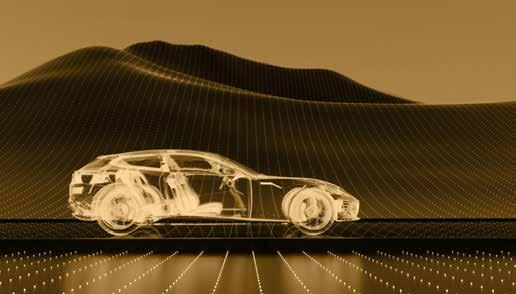
In 2023, PIF acquired Saudi Iron and Steel Company (Hadeed) and entered a joint venture with Aramco and Baosteel to build a steel plate manufacturing facility. Meanwhile, PIF’s push into the automotive sector, hosting manufacturers like Lucid, Ceer, and Hyundai—creates demand for domestically processed metals, closing the loop in the industrial value chain.
With rising concerns over concentrated supply chains, PIF is positioning Saudi
Arabia as a reliable source of minerals for both Eastern and Western markets.
In 2024, Manara Minerals, a joint venture between PIF and Ma’aden, acquired a 10% stake in Vale Base Metals for $2.5 billion. The deal gives the Kingdom access to copper, nickel, and cobalt operations in Brazil, Canada, and Indonesia. Vale plans to invest $25–$30 billion in new projects over the next decade.
These moves support PIF’s vision of a 'minerals super region' spanning Africa, the Middle East, Central Asia, and South Asia. PIF and
Ma’aden are also committed to sustainability, targeting net zero by 2050, in alignment with Saudi Arabia’s 2060 climate goals.
To attract foreign investment, Saudi Arabia has overhauled its mining regulations and launched incentives to create a business-friendly environment. In 2024 alone, the government announced $182 million in exploration incentives and issued 33 new mining licenses.
Former Anglo American CEO Mark Cutifani, now chairman of Vale Base Metals, said at the Future Minerals Forum in Riyadh: “This is a historic opportunity to build a sustainable mining industry from the ground up. Moments like this are rare.”
AlDawood adds, “PIF is in it for the long haul. We’ve proven our commitment and will continue to invest in building a resilient, forward-looking mining sector.”
With strong leadership, innovative technology, and long-term investment, Saudi Arabia is redefining its place in the global minerals economy, fueling the world’s transition to clean energy.

TRANSFORMING URBAN DEVELOPMENT IN SAUDI ARABIA.
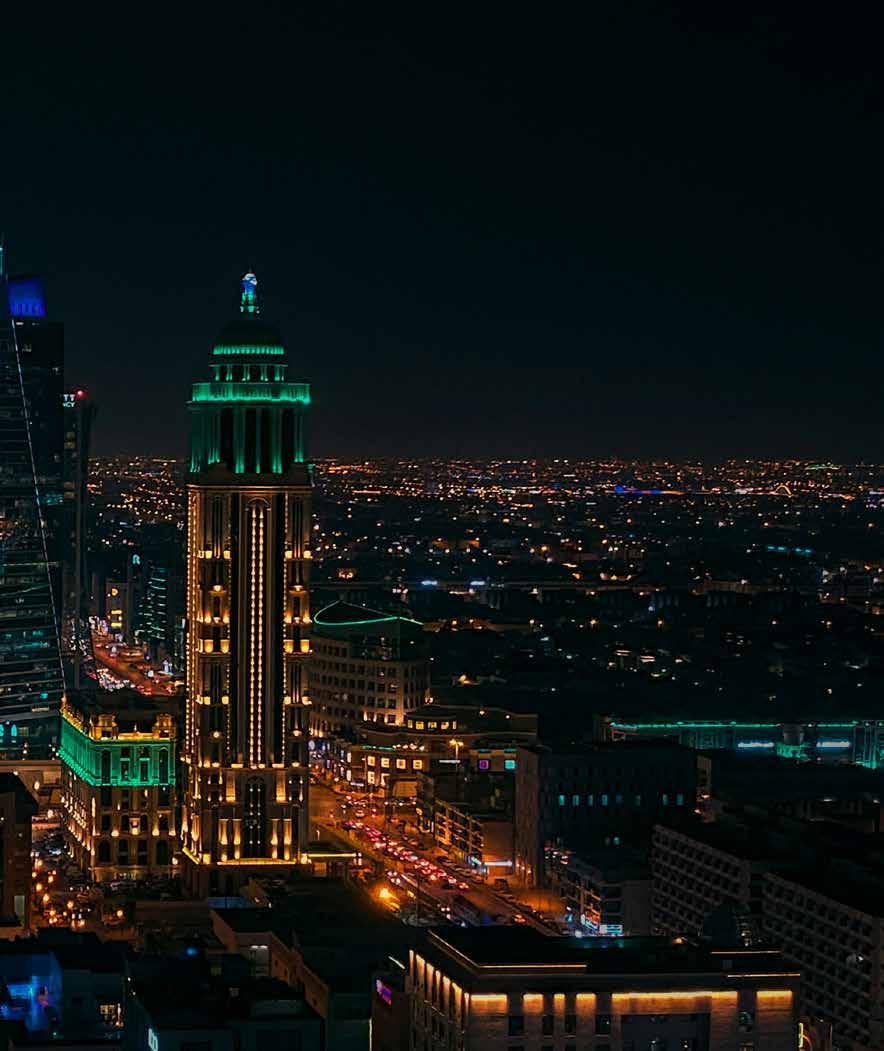
s Saudi Arabia accelerates its Vision 2030 ambitions, Smart Cities have emerged as key pillars driving the Kingdom’s transformation into a global leader in innovation, sustainability, and economic diversification. These forward-thinking urban developments seamlessly integrate technology with infrastructure, offering enhanced quality of life, greater connectivity, and new economic opportunities. Pioneering projects like NEOM, Riyadh Smart City, and Jeddah Economic City are setting new global standards for urban planning, sustainability, and digital innovation, positioning Saudi Arabia at the forefront of the smart urban revolution.
Smart Cities are urban centers where cuttingedge technology and digital infrastructure converge to enhance the quality of life for residents and visitors. They leverage data, connectivity, and innovative solutions to optimize urban operations, improve resource management, and foster sustainability.
Saudi Arabia’s commitment to Smart Cities aligns with the broader Vision 2030 agenda. The Kingdom envisions these technologically advanced urban hubs as catalysts for economic diversification, environmental sustainability, and enhanced livability. Several key factors contribute to the significance of Smart Cities in Saudi Arabia:
Economic Diversification: Smart Cities promote economic diversification by attracting technology companies, startups, and innovationdriven industries. They serve as hubs for research and development, entrepreneurship, and knowledge-based industries.
Environmental Sustainability: Sustainability is a core pillar of Smart Cities in Saudi Arabia. These cities prioritize eco-friendly infrastructure, renewable energy sources, efficient waste management, and reduced carbon emissions.
Quality of Life: Smart Cities prioritize the well-being of residents. Advanced
transportation systems, smart healthcare, and digital education are some of the elements that enhance the quality of life.
Infrastructure Optimization: Infrastructure in Smart Cities is designed for maximum efficiency. Intelligent transportation systems reduce congestion and improve mobility, while smart grids enhance energy distribution.
Digital Innovation: Innovation and technology are central to Smart Cities. These cities provide a platform for testing and implementing emerging technologies, such as 5G networks, Internet of Things (IoT) sensors, and artificial intelligence (AI) solutions.
TRANSFORMATIVE IMPACT ON URBAN LIVING IS MULTIFACETED
Mobility: Smart Cities offer efficient and sustainable transportation options, reducing traffic congestion and pollution.
Safety: Advanced security systems and surveillance enhance public safety.
Connectivity: High-speed internet and seamless connectivity enable remote work and digital services.
Resource Efficiency: Smart resource management reduces waste and energy consumption, benefiting the environment.
Economic Growth: The influx of technology companies and startups drives economic growth and job creation.
NEOM
NEOM is arguably Saudi Arabia’s most ambitious Smart City project, positioned at the intersection of innovation, sustainability, and economic diversification. Stretching across
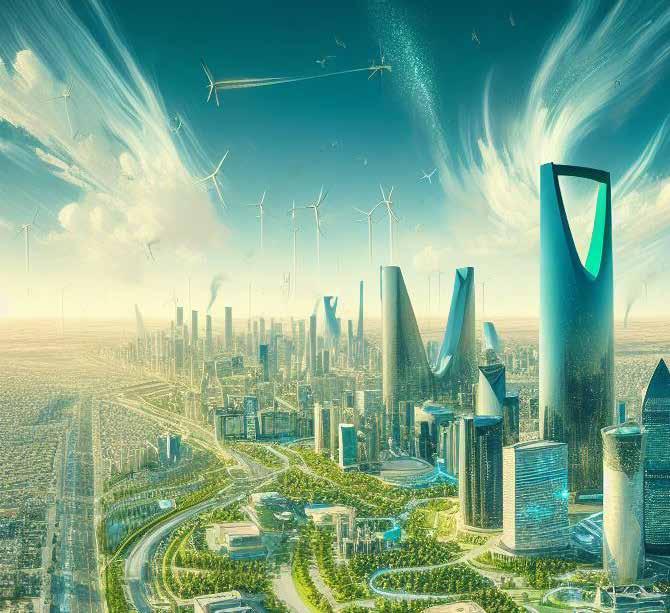
Riyadh’s Smart City program includes initiatives for smart transportation, digital healthcare, and e-government services
26,500 square kilometers in the Kingdom’s northwest, NEOM is a centerpiece of Saudi Vision 2030, aiming to redefine urban living and establish the region as a global hub for futuristic industries. The project includes The Line, a revolutionary linear city without cars or streets, designed around ultra-efficient public transport and walkable communities. NEOM’s commitment to renewable energy, advanced robotics, biotechnology, and digital infrastructure reflects a bold approach to addressing the environmental and societal challenges of tomorrow. With an estimated investment of $500 billion, NEOM aspires to be a magnet for international investors, entrepreneurs, and innovators, offering a highly connected, AI-driven ecosystem. By focusing on sectors such as energy, water, food, mobility, and health, NEOM is setting new benchmarks for smart urban development worldwide.
Riyadh, the capital of Saudi Arabia, is undergoing
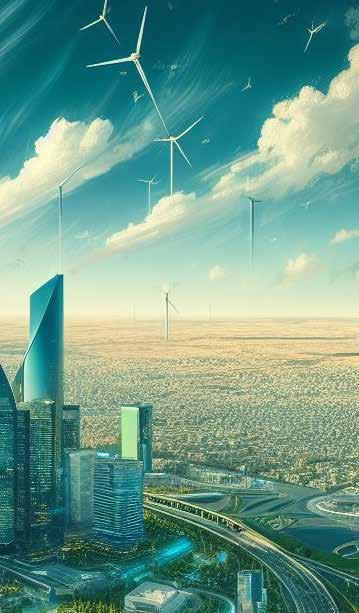
NEOM is a flagship Smart City project with a focus on innovation, sustainability, and economic diversification

a major transformation under its Smart City initiative, positioning itself as one of the most digitally advanced cities in the world. The Riyadh Smart City program integrates cuttingedge technology across urban infrastructure, transportation, healthcare, education, and governance. Smart transportation systems are a cornerstone of this vision, with autonomous vehicles, intelligent traffic management, and a state-of-the-art metro system reshaping urban mobility. Digital healthcare platforms are being expanded to offer telemedicine services and smart hospitals equipped with AI diagnostic tools. In addition, the city is enhancing e-government services to provide citizens with seamless access to public resources, boosting transparency and efficiency. Sustainability is also a key focus, with green building standards and smart grids contributing to reduced carbon footprints. Riyadh’s commitment to becoming a smart, livable, and sustainable city is further supported by massive investment initiatives, including the Green Riyadh project, one of the world’s largest urban afforestation programs.
Jeddah Economic City is set to redefine the economic landscape of Saudi Arabia’s western region through its bold integration of smart technologies and sustainable design. Covering an area of 5.3 million square meters, the city is envisioned as a dynamic economic and business hub, anchored by the iconic Jeddah Tower — the future tallest building in the world. Technology and innovation are at the heart of Jeddah Economic City's development strategy, with
plans for smart energy grids, automated waste management, and integrated digital services across public and private sectors. The city is designed to attract multinational corporations, tech startups, and research institutions, offering an ecosystem that fosters entrepreneurship and knowledge-based industries. Connectivity and ease of movement are priorities, supported by smart transportation networks and proximity to King Abdulaziz International Airport. By blending innovation with lifestyle amenities, Jeddah Economic City aims to contribute significantly to Saudi Arabia’s economic diversification efforts, providing a model for future urban developments across the Kingdom.
The rise of Smart Cities in Saudi Arabia is not just a vision for the future but a tangible commitment to transforming urban living. These cities hold the promise of economic diversification, environmental sustainability, and enhanced quality of life for residents and visitors. As Saudi Arabia continues to invest in Smart City initiatives, it positions itself as a leader in the global movement toward urban innovation and progress. Smart Cities are not just a concept but a reality that is shaping the Kingdom’s urban landscape and its future.

SPECIALIZED DESIGN & BUILD CONTRACTOR DELIVERING INNOVATIVE, COST-EFFECTIVE SOLUTIONS ACROSS SAUDI ARABIA.

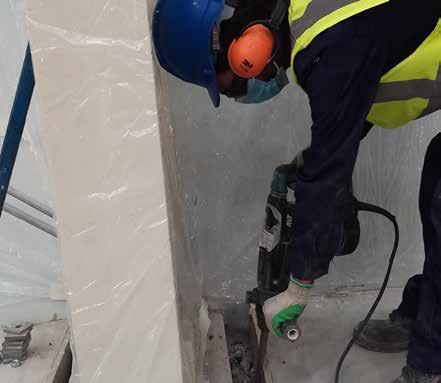
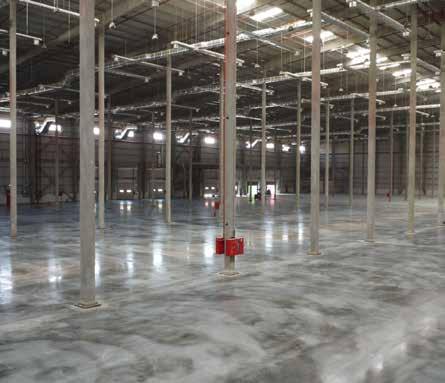
Our strength lies in our international expertise combined with a robust local presence.
This synergy enables us to meet and exceed client expectations, ensuring projects are completed within budget and on schedule.
DAC Group is committed to contributing to the Kingdom’s Vision 2030 by shaping the future of construction with excellence and innovation.

https://dhamangroup.com
info@dacgroupsa.com
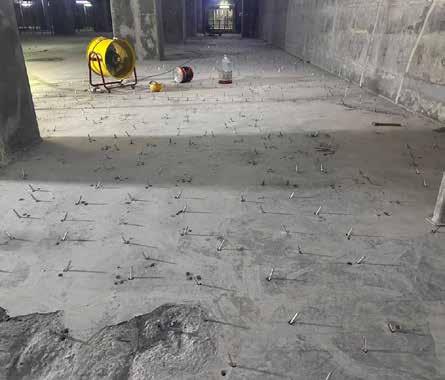

Second edition expands focus on intelligent, future-ready urban development solutions.

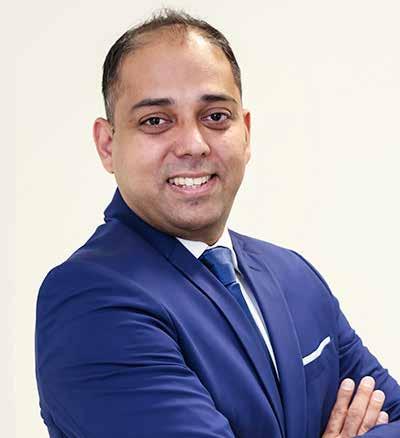
Saudi Arabia Accelerates Smart City Development with the Return of Smart Cities Saudi Expo
As the International Monetary Fund (IMF) names Saudi Arabia the fastest-growing economy in the G20, the Kingdom of Saudi Arabis continues its rapid urban transformation, now home to an urban population of nearly 85%. This demographic shift is reshaping the national infrastructure landscape, calling for more intelligent, integrated, and future-oriented urban planning.
Against this backdrop, the Smart Cities Saudi Expo returns for its second edition from 15 to 17 September 2025 at the Riyadh International Convention & Exhibition Center. Organized by dmg events and held alongside the Global Infrastructure Expo, under the patronage of the Riyadh Infrastructure Projects Center (RIPC).
The event aims to support Saudi Arabia’s Vision 2030 ambitions by providing a platform for cognitive and intelligent urban solutions.
These innovations are already being realized through projects such as NEOM, one of the Kingdom’s flagship giga-projects backed by the Public Investment Fund (PIF).
Representing a bold vision for the cities of tomorrow, NEOM integrates artificial intelligence, robotics, and human-centered design to create digitally sustainable and responsive urban environments. Its progress underscores Saudi Arabia’s leadership in smart city innovation and the strategic relevance of the Smart Cities Saudi Expo.
Muhammed Kazi, Senior Vice President of Construction at dmg events, stated: “Following its successful debut, the second edition of Smart Cities Saudi Expo continues to align
with the Kingdom's ongoing development of large-scale projects to accommodate its rapidly growing urban population in line with Vision 2030. “The event’s co-location with the Global Infrastructure Expo will provide international companies the opportunity to enter the Saudi market and showcase cutting-edge technologies and solutions. It also offers buyers access to the materials, services, and innovations needed for both current and future projects.”
The event will span seven key product sectors, giving buyers a comprehensive look into smart city planning and development:
Digital Economy
Urban Mobility & Transport
Smart Building & Infrastructure
Smart Governance
IT & Telecoms
Sustainability & Environment
Safety & Security
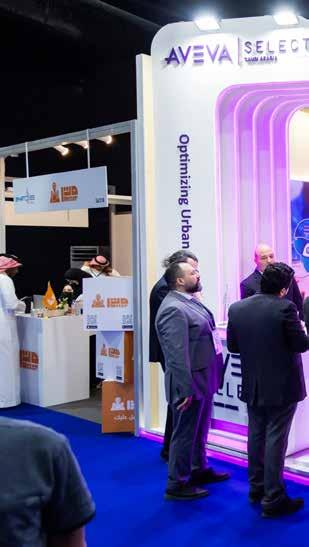
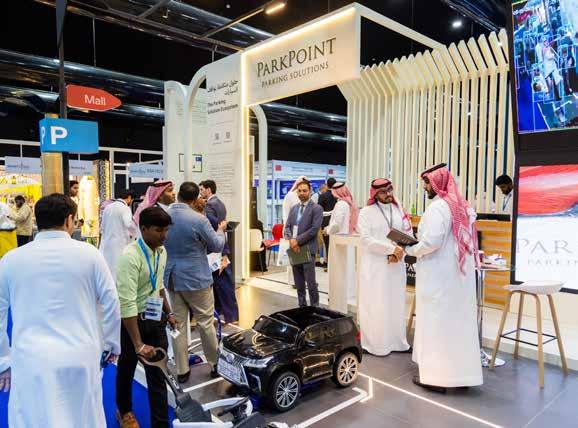
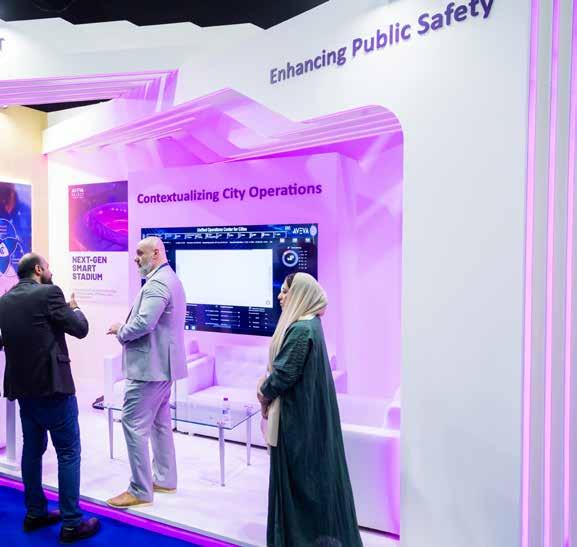
Solutions on display will include intelligent traffic management systems, autonomous vehicles, smart parking, building automation, smart lighting, surveillance and analytics, emergency response systems, citizen engagement platforms, digital identity solutions, and more.
Also returning is the Smart Cities Saudi Summit, bringing together senior government officials, municipal leaders, developers, contractors, master planners, urban designers, and consultants. The summit will explore the latest global advancements in smart city technology, featuring international case studies and critical discussions on local adoption.
Vision
“Smart Cities Saudi Expo highlights how technology and innovation are vital in shaping the cities of tomorrow,” Kazi concluded. “It plays a key role in advancing Saudi Arabia’s goals of building smart, sustainable, and resilient urban spaces.”
Seven key product sectors featured onsite giving buyers a comprehensive look into smart city planning and development
IN THIS EXCLUSIVE SAUDI PROJECTS INTERVIEW, FABIEN TOSCANO, CEO OF ALULA DEVELOPMENT COMPANY (UDC), SHARES HOW HE IS LEADING EFFORTS TO TRANSFORM ALULA INTO A PREMIER GLOBAL DESTINATION THROUGH SUSTAINABLE, STRATEGIC DEVELOPMENT.

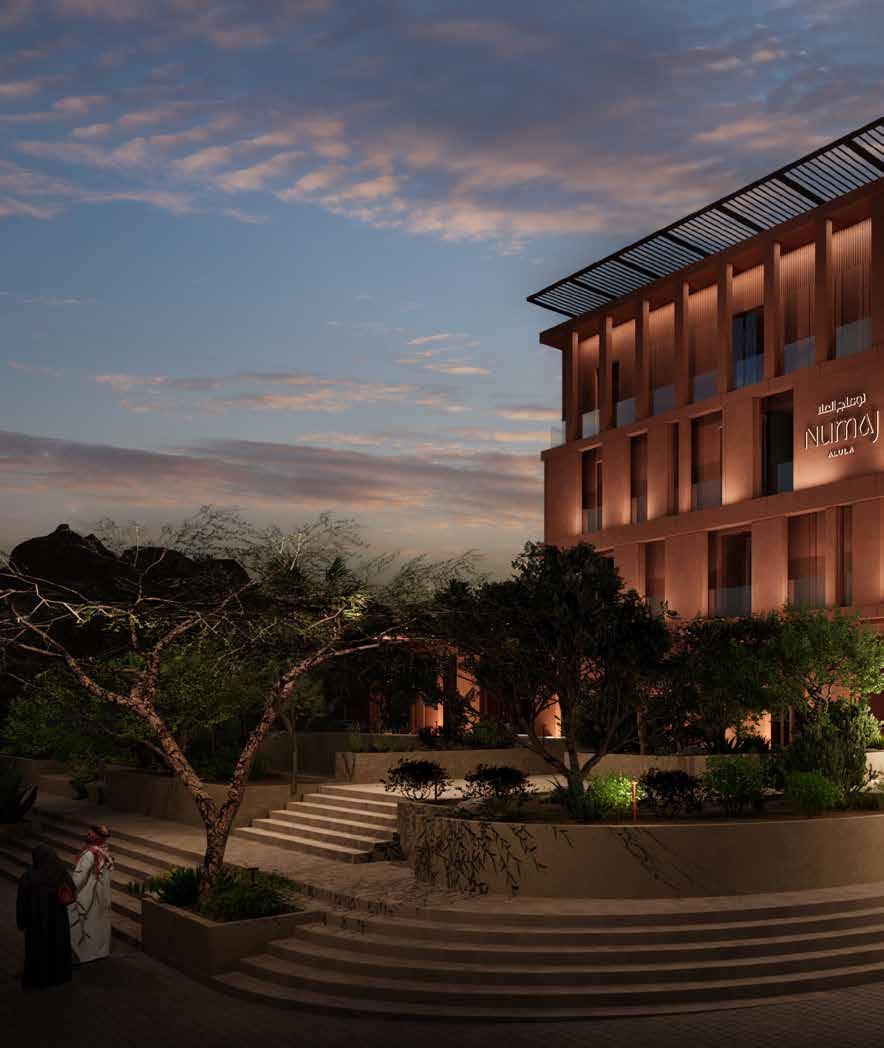

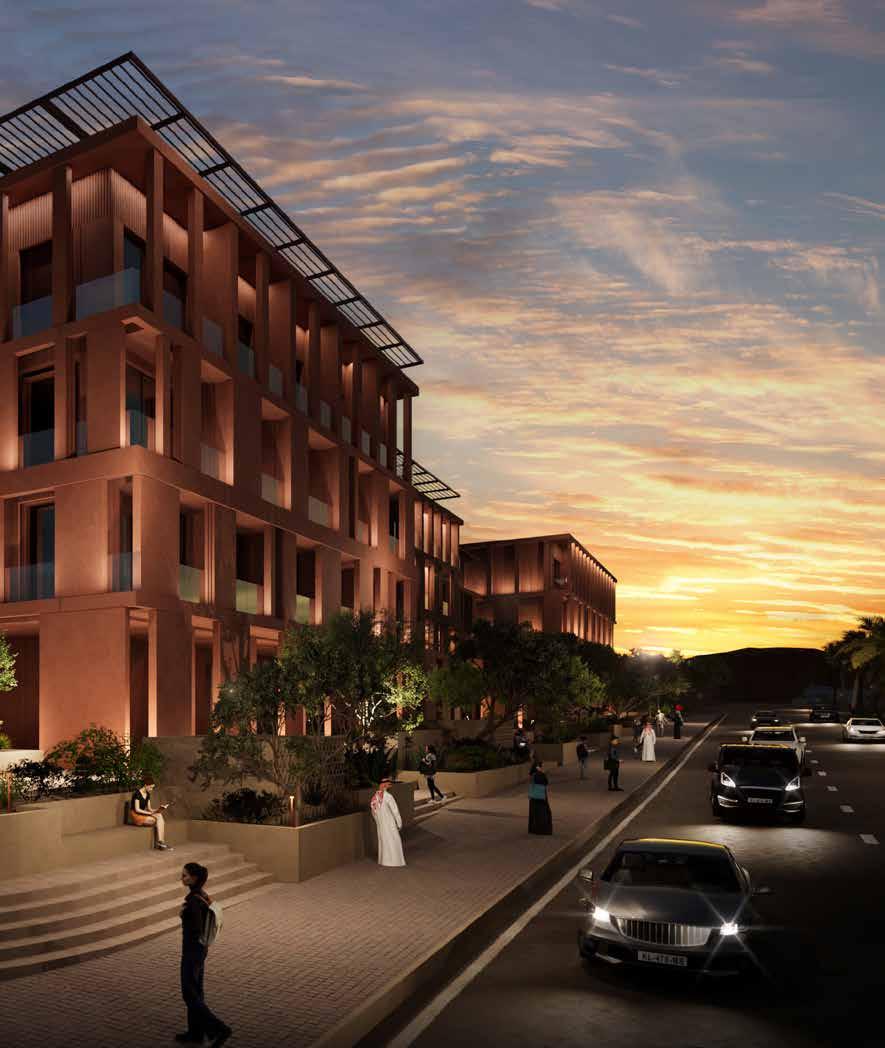
s Saudi Arabia accelerates its vision 2030 agenda, AlUla has emerged as a focal point for cultural preservation and sustainable tourism. At the helm of this transformation is Fabien Toscano, CEO of AlUla Development Company (UDC), a Public Investment Fund (PIF) entity established in 2023 to spearhead the region's development into a premier global destination.
SAUDI PROJECTS: You joined AlUla Development Company in September 2023 - what inspired you to take on this role, and how has this journey been so far?
FABIEN TOSCANO: I was inspired by the opportunity to be part of a truly transformative story where heritage, nature, and innovation intersect. AlUla goes beyond just another destination, it’s a living museum, and leading AlUla Development company means contributing to a vision which honors the past while building a sustainable future. Since joining, the journey has been both energizing and rewarding. We've made significant progress in shaping the buildup of AlUla, yet maintaining its rooted cultural identity.
The experience has been incredibly inspiring, especially working alongside a diverse range of entities and partners who share a unified vision for transformation. Collaborating across public and private sectors, from experts to global hospitality leaders has reinforced the importance of synergy.
SAUDI PROJECTS: AlUlaI’s rapidly becoming one of Saudi Arabia’s most iconic tourism destinations, what Is your strategic vision for positioning AlUla on the global tourism map?
FABIEN TOSCANO: As a PIF company, our vision is to elevate AlUla into a global benchmark for cultural tourism and luxury hospitality, fully aligned with the ambitions of Vision 2030. At AlUla Development Company, we’re redefining what it means to develop a destination by placing AlUla ’s legacy at the heart of modern regeneration. Through immersive architecture, world-class hospitality, and carefully planned infrastructure, we aim to



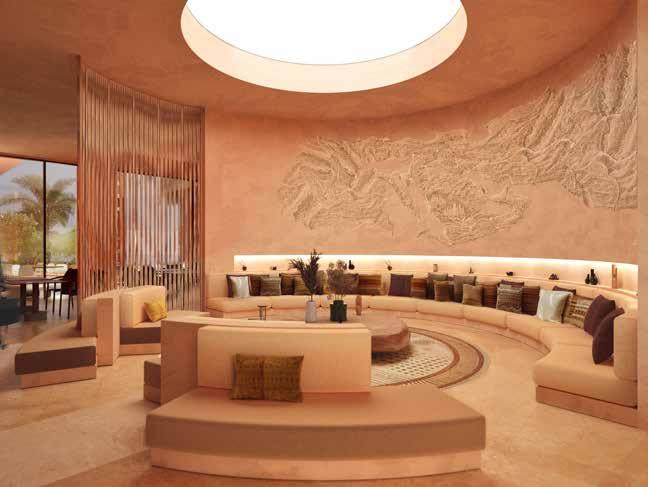
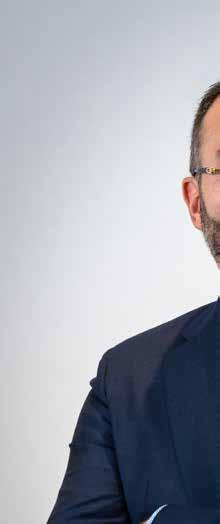

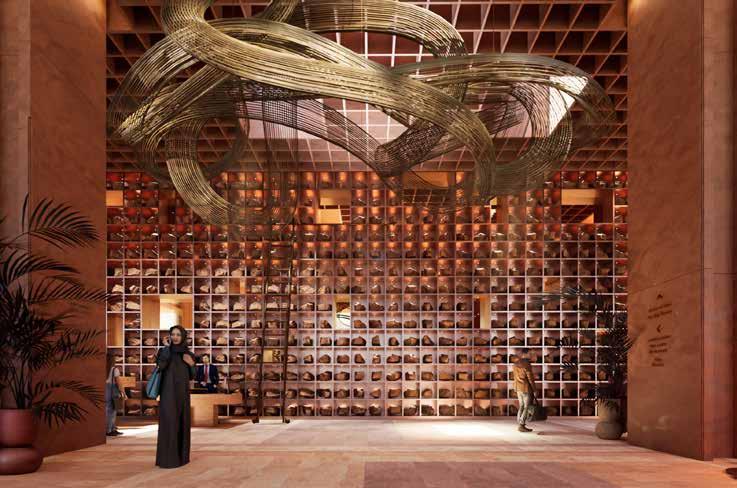
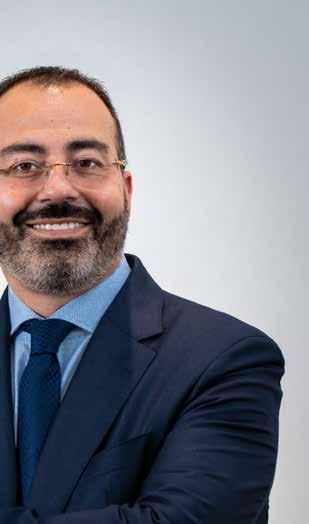
make AlUla more than a place to visit, but also a place to live, invest, and frequently return to.
Our growing portfolio reflects this commitment. We own and operate flagship assets such as Our Habitas AlUla, Banyan Tree AlUla, Maraya, Cloud7 Residences and Dar Tantora The House Hotel, and are currently developing an iconic project, the ‘Autograph Collection Hotel by Marriott’ designed under the concept “NUMAJ: A Tapestry of the Land”.
Each project we undertake is a strategic step in transforming AlUla into a sustainable, heritage-driven destination that supports Saudi Arabia’s national transformation goals.
SAUDI PROJECTS: As a participant at Arabian Travel Market 2025, what message are you hoping to deliver to international travel and tourism stakeholders?
FABIEN TOSCANO: The main message we are looking to convey at ATM 2025 is that UDC is open for partnerships. We are building for
the long-term with a focus on sustainability, cultural preservation, and smart development. As a PIF company aligned with Vision 2030, we’re inviting like-minded partners to join us in shaping the future of AlUla.
This year’s participation offers an invaluable opportunity to showcase our flagship developments, including unveiling the design for the Autograph Collection Hotel by Marriott - a project underdevelopment that blends modern luxury with deep cultural roots. More than this, ATM is a space to build meaningful connections, stay ahead of industry trends, and engage with visionary minds across the global tourism ecosystem. It’s a chance for us to introduce our journey and be introduced to new ideas, collaborators, and perspectives that will shape the next phase of AlUla’s evolution.
SAUDI PROJECTS: How is AlUla Development Company balancing heritage preservation with modern infrastructure and hospitality development?


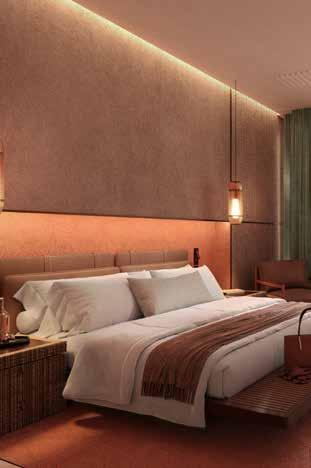
FABIEN TOSCANO: We follow a heritagefirst approach, ensuring each and every project respects and reflects AlUla’s identity, its patterns, materials, and storytelling. Preservation is not an afterthought - it’s embedded in every line we draw.
A prime example is the iconic Maraya building designed by GioForma, the world’s largest mirrored building and a stunning architectural marvel that seamlessly blends into the surrounding desert landscape. The name Maraya means “mirror” in Arabic, fittingly so as the structure is covered with nearly 10,000 mirrored panels to reflect the natural beauty of the Ashar Valley.
The Autograph Collection Hotel by Marriott will be another standout, as we just unveiled at ATM, this is also being designed by GioForma. The design concept, “NUMAJ – A Tapestry of the Land,” is deeply rooted in AlUla ’s geological forms, traditional engravings, and desert textures. The layout prioritizes indoor-outdoor fluidity, inspired by historic AlUladwellings. Mushrabia-style screens,
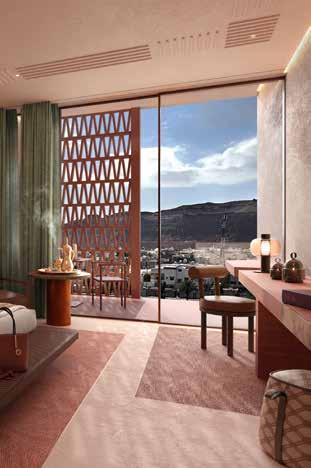
engraved motifs, and locally sourced materials create a luxurious yet culturally grounded experience. And of course, the lighting design respects AlUla ’s Dark Sky policy, preserving the natural nighttime atmosphere.
Through a meticulous approach, we ensure that modern hospitality never comes at the expense of cultural integrity but rather enhances and elevates it.
SAUDI PROJECTS: With cultural tourism being central to AlUla’s appeal, how are you working to create immersive experiences that authentically reflect the region’s history and identity?
FABIEN TOSCANO: Using storytelling through architecture, we embed AlUla’s story into every guest experience from engraved mushrabia motifs to rock galleries. We aim to make every stay in AlUla a dialogue between the visitor and the land.
The design narrative reflects AlUla’s ancient soul through contemporary expression. The guest experience is thoughtfully choreographed to foster a sense of place and meaning.
More than luxury, we offer connection. Weaving heritage into the hospitality experience spikes visitor curiosity.
SAUDI PROJECTS: What investment opportunities exist for international partners and businesses looking to become part of AlUla’s growth story?
FABIEN TOSCANO: We offer a robust portfolio of opportunities across hospitality, residential, and commercial sectors tailored for longterm strategic investors. Our alignment with the Public Investment Fund (PIF) and the Royal Commission for AlUla ensures stability, while our phased development model allows partners to enter at the right scale and time.
SAUDI PROJECTS: Finally, what are your top priorities for 2025 and beyond as you lead AlUla Development Company into its next phase of evolution?
FABIEN TOSCANO: Our focus is on executing our flagship developments, deepening strategic partnerships, and expanding our community engagement model. We’re legacies. A cornerstone of this next phase is the successful delivery of the Autograph Collection Hotel by Marriott a transformative project that embodies our heritage-first, design-led development philosophy.
Set to open in 2027, the Autograph Collection will be AlUla’s first Marriott-branded property and a milestone in positioning the region as a world-class destination.
It will also be home to AlUla Central’s first 5-star spa, signature dining experiences, and an immersive guest journey that appeals to both leisure travelers and business visitors. With five F&B outlets, multiple pools, a gym, and a full-service conference facility, the property is designed to meet global standards while honoring the local context. Importantly, it is being built with sustainability at its core targeting LEED Gold certification through features like greywater irrigation, UV-resistant glazing, and dark-sky-compliant lighting.
For us, this project is more than a hotel, it’s a cultural landmark and a symbol of what regenerative tourism in Saudi Arabia can look like. By 2025 and beyond, our goal is to make AlUla a global blueprint for heritage-driven development and to elevate the Kingdom’s standing as a hub for authentic, sustainable travel experiences.
IOT TECHNOLOGY IS TRANSFORMING INDUSTRIAL SAFETY AND EFFICIENCY WITH REAL-TIME INSIGHTS AND AUTOMATION.
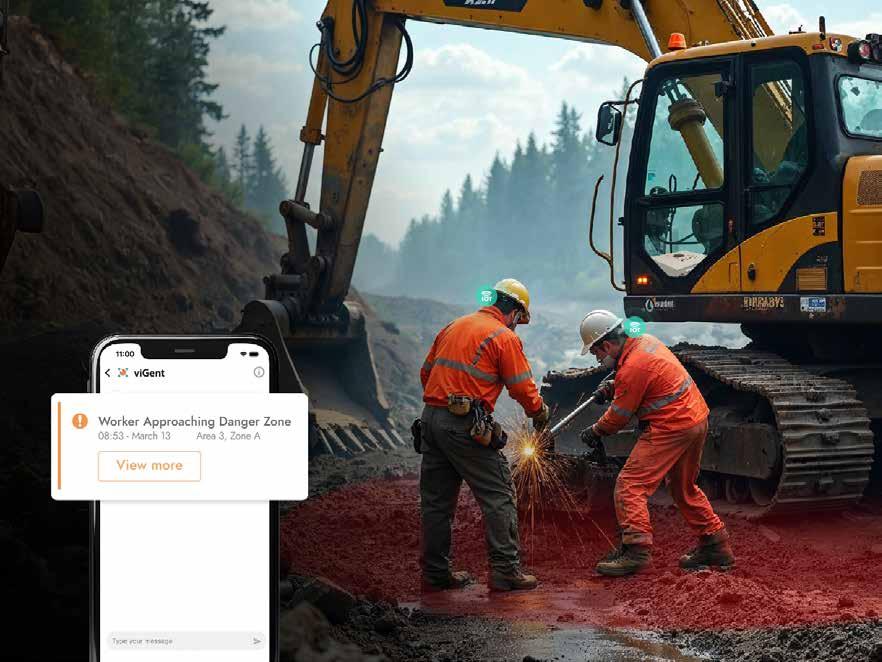
Imagine a worksite where machines can talk, sensors work from dawn till dusk and beyond, and safety isn’t just a guideline – it’s seamlessly incorporated into daily operations.
Welcome to the IoT-powered industrial revolution! From preventing accidents to calibrating workflows in real time, IoT is the unseen force making worksites sharper, safer, and smarter. The future of industrial worksites isn’t just automated – it’s intuitive.
Brute force and heavy machinery alone no longer define industrial worksites. They are gradually evolving into intelligent and cognitive ecosystems. AI anticipates risks,
IoT listens in, and Vision AI Agents keep their digital eyes wide open. Together, this AI triad forms an unstoppable force, heading off hazards before they strike and transforming workplaces into smart, accident-proof zones.
The integration of Vision AI Agents and IoT is revolutionizing industrial safety by combining real-time perception with intelligent decisionmaking. IoT sensors act as the nervous system, continuously collecting data on workers movements, environmental conditions and machinery status. At the same time, Vision AI Agents function as site’s eyes, leveraging advanced computer vision and deep learning to detect safety violations, operational
Combining realtime perception with intelligent decisionmaking
inefficiencies, and hazardous conditions. This synergy fosters a strategic approach to risk management by predicting possible threats, detecting irregularities, and generating automated responses before incidents occur.
By combining Vision AI Agents with IoTdriven data streams, industrial jobsites are transforming into intelligent and self-governing environments. For instance, the Object Detection
Agents can identify early signs of mechanical stress and IoT sensors can monitor temperature fluctuations in heavy machinery. Similarly, AI driven automation can instantly alert operators, adjust operational guidelines, or even trigger shutdown protocols to prevent potential accidents in case a potential failure is detected. This fusion of sensor intelligence, AI powered automation and real-time video analytics ensures that safety measures are predictive, reducing human error, minimizing downtime, and fostering a truly smart industrial ecosystem.
While AIoT (AI + IoT) enhances jobsite awareness, integrating with Generative AI takes safety and efficiency to the next level. The fusion creates intelligent systems that don’t merely monitor, but predict, adapt, and respond. IoT sensors collect real-time data on environmental conditions, worker behaviour, and equipment status; while Generative AI translates this data into actionable insights through natural language prompts.
Consider this: Want to detect overheating machinery before it fails? Just prompt: “Identify equipment showing early signs of overheating and suggest preventive actions.”
Need to enhance worker safety near hazardous zones? Try: “Track worker movement near high-risk areas and recommend real-time safety measures.”
Looking for optimized workflow efficiency? Ask: “Analyse IoT data and suggest ways to reduce idle time in production lines.”
Gary Ng, CEO of viAct, remarked, “AIoT and Generative AI are not just adding intelligence to industrial worksites; they are redefining them. By turning raw sensor data into real-time, actionable insights, we are moving beyond passive monitoring to predictive prevention. Imagine a site where machines anticipate failures before they happen, and safety protocols adjust dynamically to risks as they emerge.
This is the future of industrial safety—automated, intuitive, and always one step ahead.”
By combining real-time awareness of AIoT with the adaptability of Generative AI, industrial worksites evolve into self-learning environments where risks are prevented before they arise. Operations run smoothly, and safety is no longer reactive – it’s instinctive.
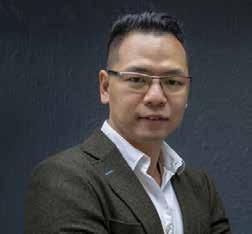
This AIoT revolution is not just limited to a single region. Industries globally are adopting this connected intelligence. Saudi Arabia is at the leading edge of this transformation. The Kingdom is rapidly adopting smart technologies to boost industrial operations, particularly in high-risk sectors like construction, oil & gas and manufacturing, pursuant to Vision 2030 objectives.
IoT-powered sensors and connected devices rigorously monitor critical factors such as risks of fire, exposure of hazardous material, equipment performance and air quality. From real-time gas leak detection in petrochemical plants to AI-driven predictive maintenance in heavy industries, IoT is minimizing accidents, reducing downtime, and giving way to smarter decision-making.
With AIoT and Vision AI Agents working in sink, industrial jobsites are automating safety while
maximizing efficiency. Wearable IoT devices help track worker fatigue and exposure to extreme temperatures, a vital factor in Saudi Arabia’s harsh climate. IoT connectivity enabled smart CCTV systems detect unsafe behaviors and instantly alert supervisors. The IoT-enabled digital twins provide real-time site analytics, ensuring agile operations with minimal risks in mega infrastructure projects like the Red Sea Project and NEOM. As Saudi Arabia is advancing towards Industry 4.0, IoT is not simply a tool; it is the core of a safer, smarter, and more resilient industrial landscape.
The era of connected intelligence has arrived, redefining how industrial worksites function. With AIoT and Vision AI Agents working in sync, safety is no longer a checklist – it’s an instinctive, built-in feature, that evolves with every data point. Worksites are no longer places where machines hum and people sweat; they are evolving into high-tech, self-regulating ecosystems, where machines don’t just operate – they anticipate, adapt, and protect.
As industries worldwide dive headfirst into smart automation and embrace smart automation, one thing is clear: IoT isn’t just making worksites safer and smarter; it is reshaping the very foundation of industrial operations. The future doesn’t belong to those who merely follow protocols; it belongs to those who let AIoT take the wheel, as in this new world safety isn’t a rigid rule – it’s an unstoppable force, hardwired into the very fabric of industrial operations.
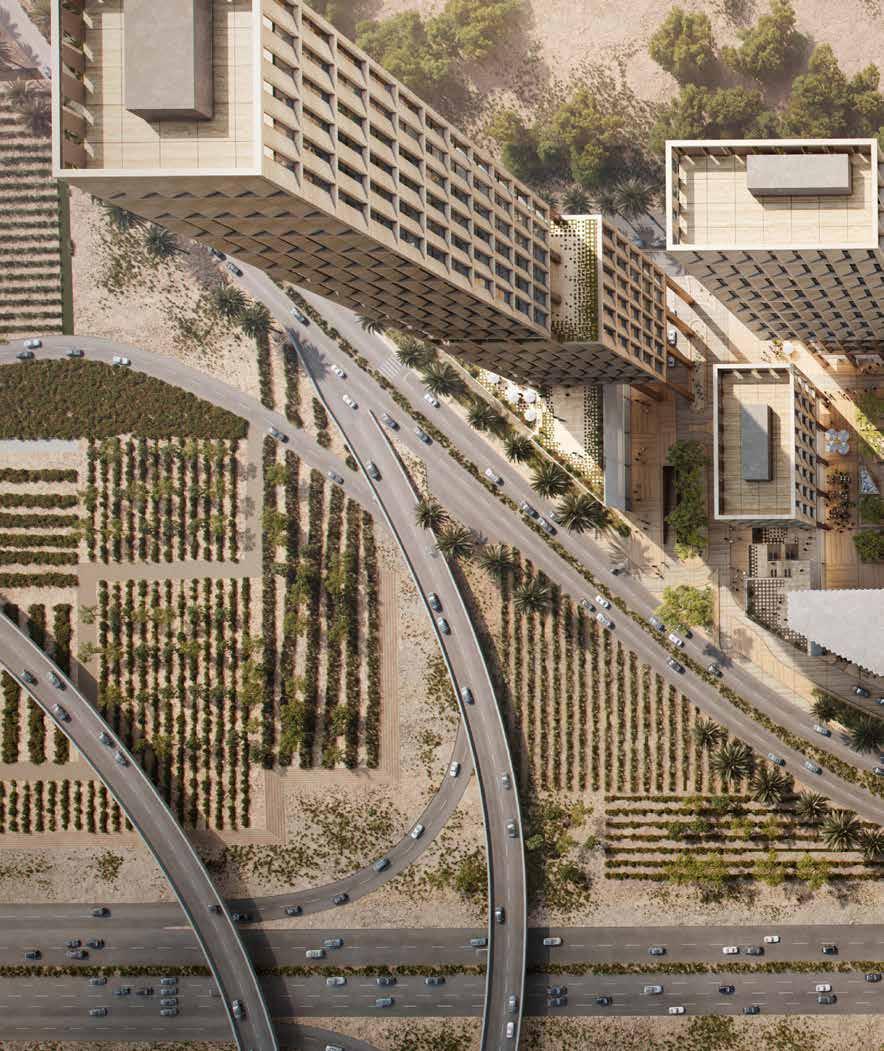
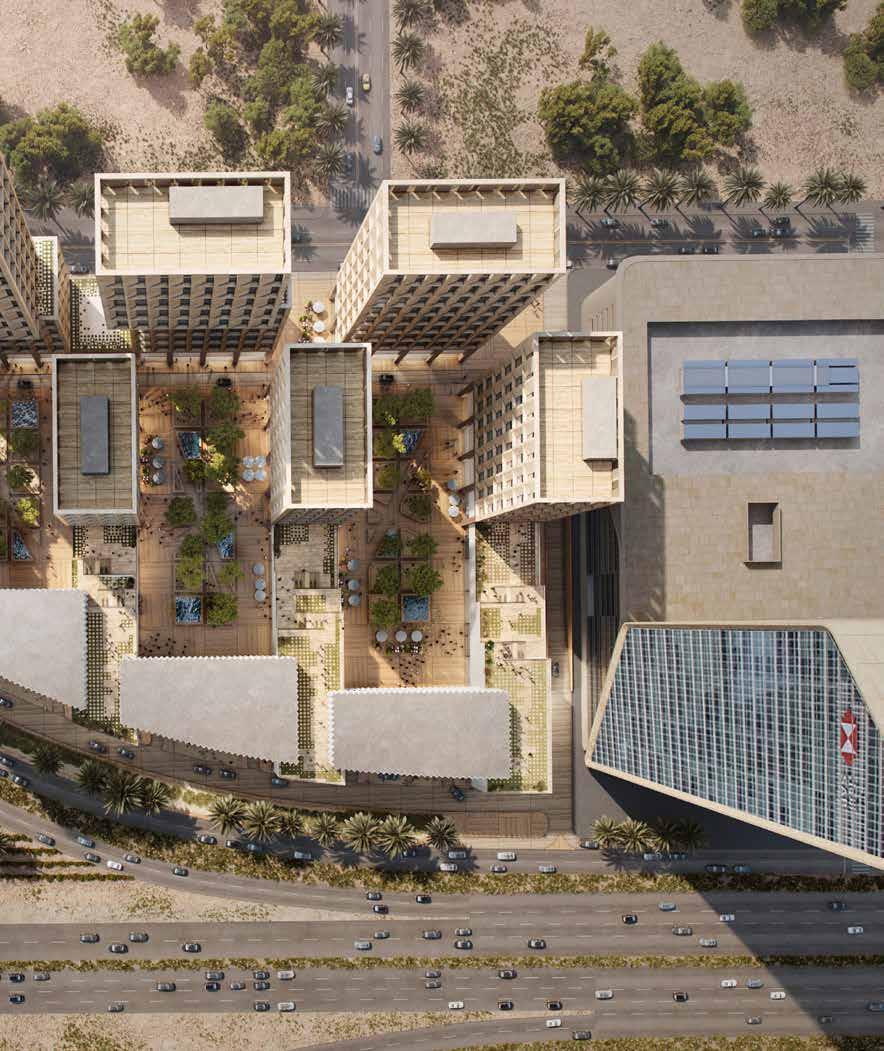
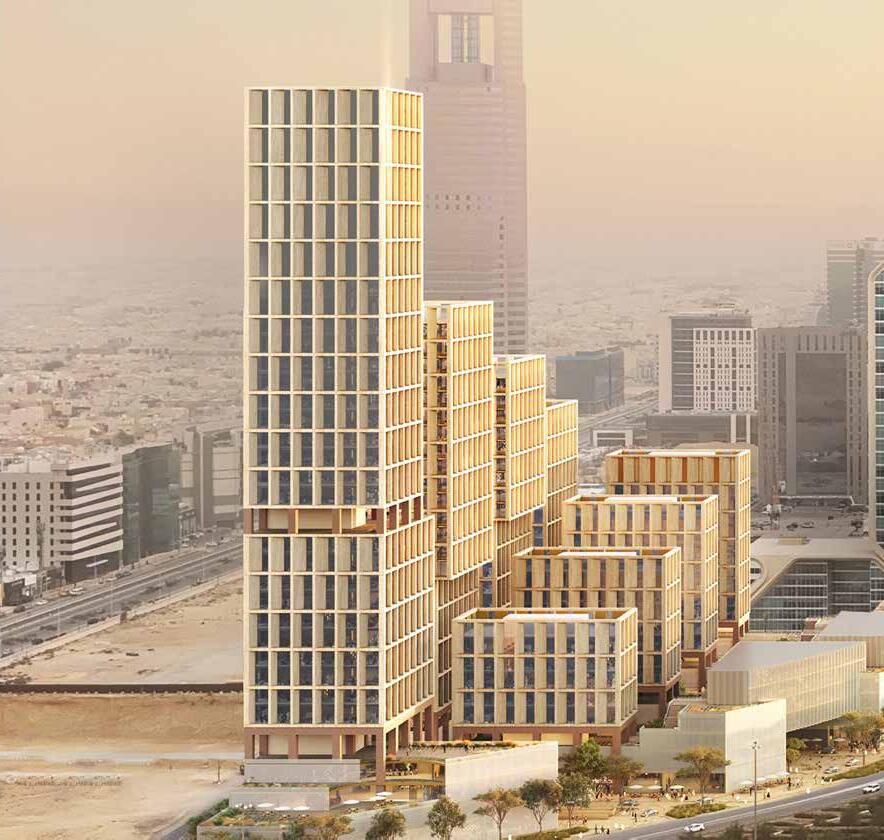
James Cubitt MENA (JC MENA), a premier architectural and engineering consultancy, proudly announces its appointment as the Lead Design Consultant for the Kings’ Square project, an iconic new development by Albasateen Real Estate Company. Located at the strategic intersection of King Salman Road and King Fahad Road, Kings’ Square
is set to redefine urban luxury, connectivity, and sustainable development in the region.
Spanning over 207,000 square meters of built up area, Kings’ Square is designed to be a vibrant, integrated urban hub, offering state-of-the-art commercial and residential spaces, expansive green public areas, and
future-ready infrastructure. With concept design by globally acclaimed OMA Architects, the project is positioned to become a gateway to the capital’s north and a symbol of Riyadh’s forward-thinking urban evolution.
James Cubitt MENA will lead the master planning, design development, and engineering

solutions, ensuring the project’s vision is realized with innovation, functionality, and architectural excellence at its core.
“We are honored to be entrusted with this significant responsibility. It is a major project in a strategic location, shaping the North Riyadh landscape,” said Mohamed Abushady, CEO of
Engineered to precision with the vision of OMA
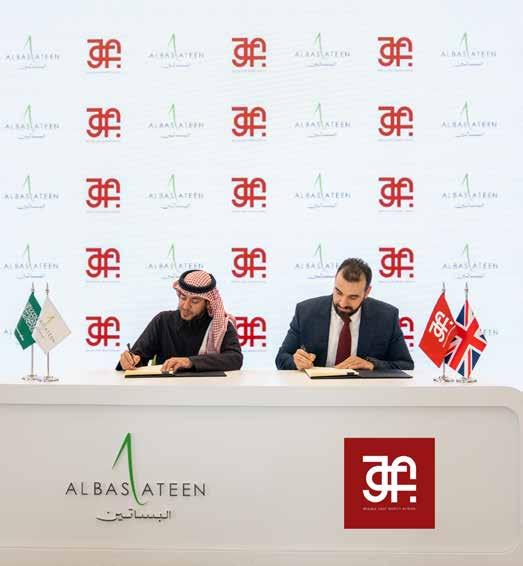
James Cubitt MENA. “The Kings’ Square Project represents a transformative development that aligns with our commitment to creating sustainable, forward-thinking urban spaces. We look forward to collaborating closely with Albasateen, OMA Architects, and all stakeholders to deliver a world-class architectural marvel.”
Through thoughtful design and meticulous planning, JC MENA will integrate Kings’ Square seamlessly into the city’s fabric, offering an exceptional experience for both residents and visitors. The development is envisioned to become a landmark of innovation, sustainability, and vibrant urban living.
James Cubitt MENA is a leading architectural, engineering, and supervision consultancy with a strong presence across the Middle East and North Africa. With 25 years of regional
expertise, the firm is recognized for delivering innovative, sustainable, and high-quality design solutions across commercial, residential, hospitality, healthcare, and education sectors.
Combining creative vision with technical excellence, James Cubitt MENA is committed to shaping the future of urban living through collaboration, sustainability, and design innovation.
JAMES CUBITT MENA
+966 53 974 2217
VISIT WEBSITE
EMAIL US
By Emma Burdett | Founder, WILD Talent.
Saudi Arabia stands on the cusp of unprecedented transformation. With Vision 2030 driving bold reform across every sector, the Kingdom is rapidly evolving into a global economic force. New industries are rising, giga-projects are reshaping infrastructure, and international partnerships are flourishing. Talent is at the heart of this movement, however, the way we define, develop, and position leaders must evolve too.
One critical truth is becoming harder to ignore: we cannot build the future of this region while half the leadership potential remains unseen and underutilised.
The progress is there. Saudi women’s labour force participation has surged from 17% in 2017 to over 36% by 2022 (GASTAT), with representation continuing to climb. Yet boardroom diversity tells a different
story. According to the World Bank, women still hold under 2% of board seats in the Kingdom, a stark contrast to the global average of over 20%. While women are entering the workforce in record numbers, too few are reaching the top or influencing policy, strategy, and public perception.
The issue isn’t a lack of capability, it's a systemic gap in visibility, positioning, and leadership development. Many women are highly qualified, deeply capable, and strategically minded, yet remain out of sight when key decisions are made about advancement, promotion, or representation.
This lack of visibility has measurable consequences.
A 2023 LinkedIn report revealed that women in the MENA region are twice as likely as
men to avoid posting thought leadership content or promoting their achievements online. In a digital economy where presence equals opportunity, this reluctance directly impacts their career growth. Fewer speaking invitations, fewer board appointments, and fewer opportunities to be recognised as credible, senior-level decision-makers.
At the same time, executive visibility is emerging as a core currency of leadership. In today’s competitive landscape, people follow leaders who are known, trusted, and present. The ability to articulate one’s vision, speak with authority, and build a compelling leadership brand is what drives influence and opportunity.
The ability to articulate one’s vision, speak with authority, and build a compelling leadership brand is what drives influence and opportunity
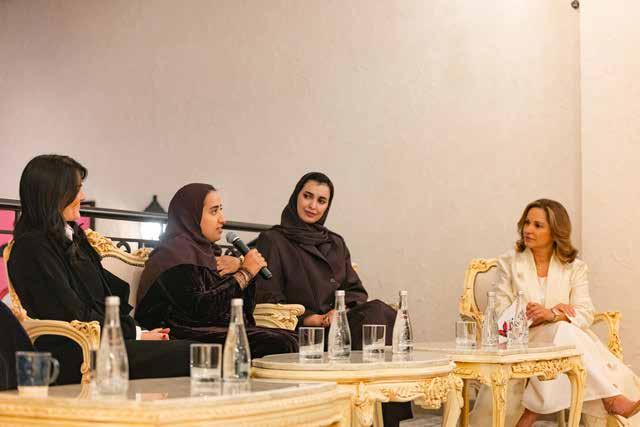

According to research by McKinsey, companies with women in top leadership roles are 25% more likely to achieve above-average profitability.
But that doesn’t happen by accident. Women don’t rise into these roles without intentional investment from their companies and themselves.
Boston Consulting Group found that organisations with structured leadership programs for women are 2.5 times more likely to close the executive gender gap. And Deloitte reports that women who receive targeted coaching and development are 80% more likely to stay and advance internally.
The takeaway is clear: companies that invest in female visibility and leadership development create stronger talent pipelines, higher retention rates, and more resilient organisations.
But despite the data, the private sector still hesitates to make this investment consistently; especially in industries like construction, real estate, law, and finance. Leadership branding, communication training, and executive presence are too often dismissed as optional, when in fact, they are decisive.
From my work through WILD Talent, I’ve seen what happens when companies take visibility seriously. Women step into rooms with greater confidence. They speak with impact. They are shortlisted for board roles, invited to panels, recognised by peers, and increasingly called upon to lead both visibly and authentically. Female leaders are important role models for future generations of talent.
We help companies move beyond checkboxes and into strategic alignment: placing and positioning women for maximum impact and longevity. Not only do our clients see stronger results, they also future-proof their leadership culture, ensuring their organisation reflects the ambition of the country it operates in.
Here’s what that looks like in practice:
Developing public speaking confidence to increase influence across stakeholders Crafting a leadership brand that communicates expertise and trustworthiness Supporting visibility through thought leadership and digital positioning Building presence in high-stakes meetings, boardrooms, and investor conversations Providing access to board-readiness pathways through coaching and succession planning
These elements are are essential leadership infrastructure for a thriving national economy. When you elevate women to lead visibly, you send a message to the market, to your people, and to the world.
Saudi Arabia has no shortage of ambitious, intelligent, and capable women. What’s needed now is a commitment from both public and private sectors to help these women become strategically visible, confidently prepared, and boardroom-ready.
Because the future doesn’t belong to those who work quietly behind the scenes. It belongs to those who are seen, heard, and trusted to lead.
If your organisation is serious about futureready leadership, now is the time to act. Attracting and retaining exceptional female
talent is not only good for business, it is essential for driving innovation, increasing performance, and building long-term growth.
At WILD Talent, we support companies in unlocking the full potential of their female workforce, from early talent through to executive and board-level roles, with a strong focus on visibility, leadership branding, and executive presence.
If you’re ready to build a stronger, more inclusive leadership team, we’d love to hear from you.
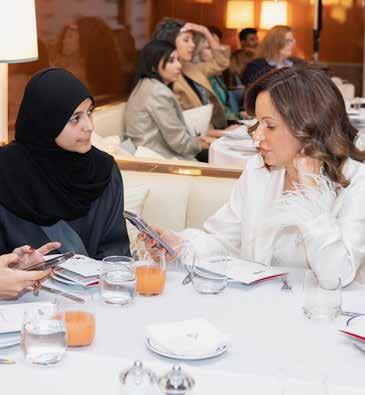
RGS is redefining value creation through B4B and P4P innovation and collaboration.



n the dynamic landscape of industrial services, RGS stands out as a beacon of innovation and strategic foresight. Specializing in scaffolding, specialist access, insulation, fireproofing, and waterproofing, RGS has embarked on a transformative journey, embracing the principles of Businessfor-Business (B4B) and People -for- People (P4P) to redefine its value proposition.
Traditionally operating under a Business-toBusiness (B2B) model, RGS recognized the limitations of transactional relationships. The shift to a B4B approach signifies a commitment to deeper, more collaborative partnerships. Unlike B2B, which focuses on the exchange of goods and services, B4B emphasizes mutual value creation and long-term cooperation.
Ash T. Arshad, General Manager of RGS, articulates this shift: "Our transition to a B4B model is about more than just business transactions; it's about aligning our goals with those of our clients to achieve shared success."
This paradigm shift enables RGS to offer customized solutions, co-develop strategies, and engage in joint marketing efforts, fostering a sense of partnership rather than mere service provision.
An essential layer within the B4B framework is P4P—People for People. B4B success is not just about company-to-company collaboration; it’s about person-to-person connections at every customer touchpoint.
P4P emphasizes the need for teamwork, customer-centric thinking, and a culture where well-skilled, competent people can take ownership of their responsibilities and support the wider team in winning together. Complementing the B4B model, RGS has integrated a system to ensure that employee incentives are directly tied to measurable outcomes such as project efficiency, safety compliance, and client satisfaction.
Arshad emphasizes the importance of this approach: "By aligning our team's rewards with performance metrics, we cultivate a culture of accountability and excellence."
RGS's commitment to innovation is evident in its comprehensive service offerings:
Scaffolding and Specialist Access: Utilizing advanced technologies and materials to provide safe and efficient access solutions for complex industrial projects.
Insulation: Implementing cuttingedge insulation techniques to enhance energy efficiency and reduce operational costs for clients.
Fireproofing and Waterproofing: Employing state-of-the-art materials and application methods to ensure structural integrity and longevity.

By integrating these services, RGS offers a one-stop solution, streamlining project management and ensuring consistency across all phases of construction and maintenance.
Central to RGS's transformation is the emphasis on client engagement and feedback. The B4B model encourages active collaboration with clients, involving them in the solution development process and valuing their insights post-implementation.
Ash notes: "Our clients are partners in innovation. Their feedback drives our continuous improvement and ensures that we meet their evolving needs."
This approach not only enhances client satisfaction but also fosters innovation, as real-world insights inform service enhancements and new offerings.
RGS's strategic transformation positions it for sustainable growth in the competitive industrial services sector. By fostering deep client relationships and aligning employee incentives with performance, RGS creates a resilient business model adaptable to market changes.
Looking ahead, RGS is implementing plans to leverage data analytics and digital tools to further refine its services and expand its reach. The integration of technology will enable real-time monitoring, predictive maintenance, and enhanced decision-making capabilities.
RGS's journey from a traditional service provider to a forward-thinking, client-centric organization exemplifies the transformative power of strategic innovation. By embracing B4B and P4P models, RGS not only enhances its service delivery but also builds enduring partnerships that drive mutual success.
As the industrial landscape continues to evolve, RGS stands as a testament to the benefits of reimagining business models to meet the demands of a dynamic market.
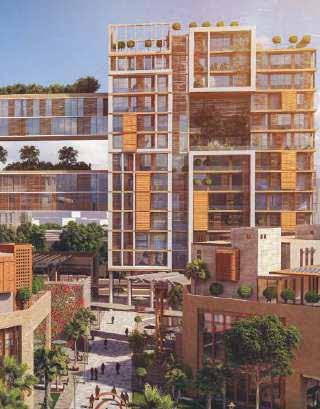
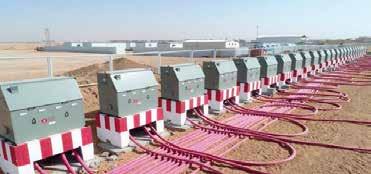
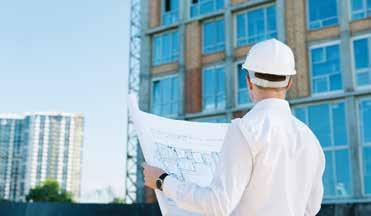
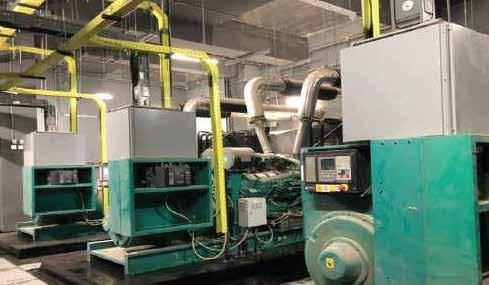
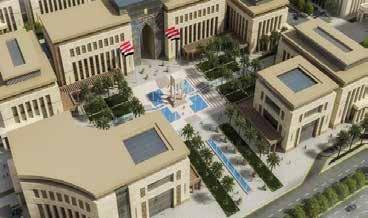
Expert MEP Contracting & Facility Management Solutions You Can Rely On.
Since 2003, EmcoTech has been delivering highperformance MEP contracting and facility management services across Saudi Arabia and the Middle East. From district cooling plants to commercial towers, educational institutions, hospitals, hotels, and industrial complexes, our reputation is built on quality, consistency, and client satisfaction.
We specialize in the complete spectrum of electromechanical systems design, supply, installation, and maintenance, ensuring your projects are powered efficiently from the ground up. Whether it’s a state-ofthe-art healthcare facility or a high-rise residential tower, we engineer environments that perform and endure.
At EmcoTech, we believe that long-term relationships are forged through reliability, transparency, and technical excellence. With decades of experience and a commitment to future-ready solutions, we’re proud to support the Kingdom’s transformation under Vision 2030.
Why EmcoTech?
• Proven expertise across diverse sectors
• End-to-end MEP and facility solutions
• Unmatched client focus
• Long-term operational reliability
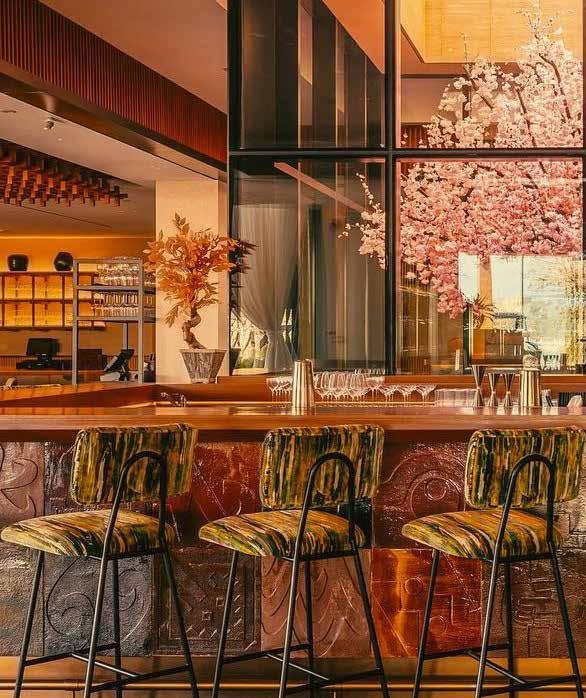
In this exclusive interview with Saudi Projects, Stuart Allen shares the story behind AAID’s journey of shaping Saudi Arabia’s skyline.
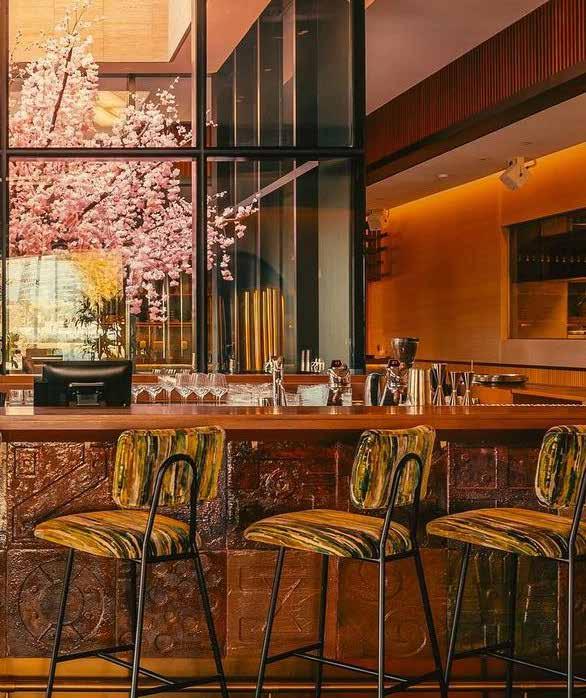
AAID’s unique design philosophy is contributing to Saudi Arabia’s ambitious future. From iconic projects and prestigious clients to navigating local challenges and opportunities, Stuart offers a compelling look at what it takes to design for a nation on the rise.
SAUDI PROJECTS: Stuart, could you begin by telling us a bit about your background and what led to the founding of AAID?
STUART ALLEN: Moving to the USA in my early teens and being educated in America has allowed me to call myself an expat for the majority of my life. While I’ve always been aware of my roots, I’ve embraced the influence of the places I’ve lived, which has guided my choices and career in an indirect but meaningful way.
Living and working all over the US helped me develop the ability to adapt across different markets and skillsets. From working on a ranch to touring with a band, these experiences taught me to evolve with my environment. When I eventually found my design career, I realised it had always been my calling, I just hadn’t seen it in front of me.
I’ve always pushed myself and challenged the boundaries of what I do. Sometimes it’s been unconventional, but struggle and hardship have fuelled my drive and determination. Founding AAID came through risk, persistence, and the dream of building a design studio I would want to be a part of, one rooted in integrity and a commitment to doing things the right way. That’s what I believe we’re about, and hopefully others see that too.
SAUDI PROJECTS: AAID has a strong and expanding presence in the GCC. When did you first begin working in Saudi Arabia, and what attracted you to the Kingdom?
STUART ALLEN: We began working in Saudi Arabia around 2011–2012, supporting a client from Abu Dhabi with their regional office in Riyadh. At the time, the industry was at a turning point, and there was an

Design rooted in local culture and global vision
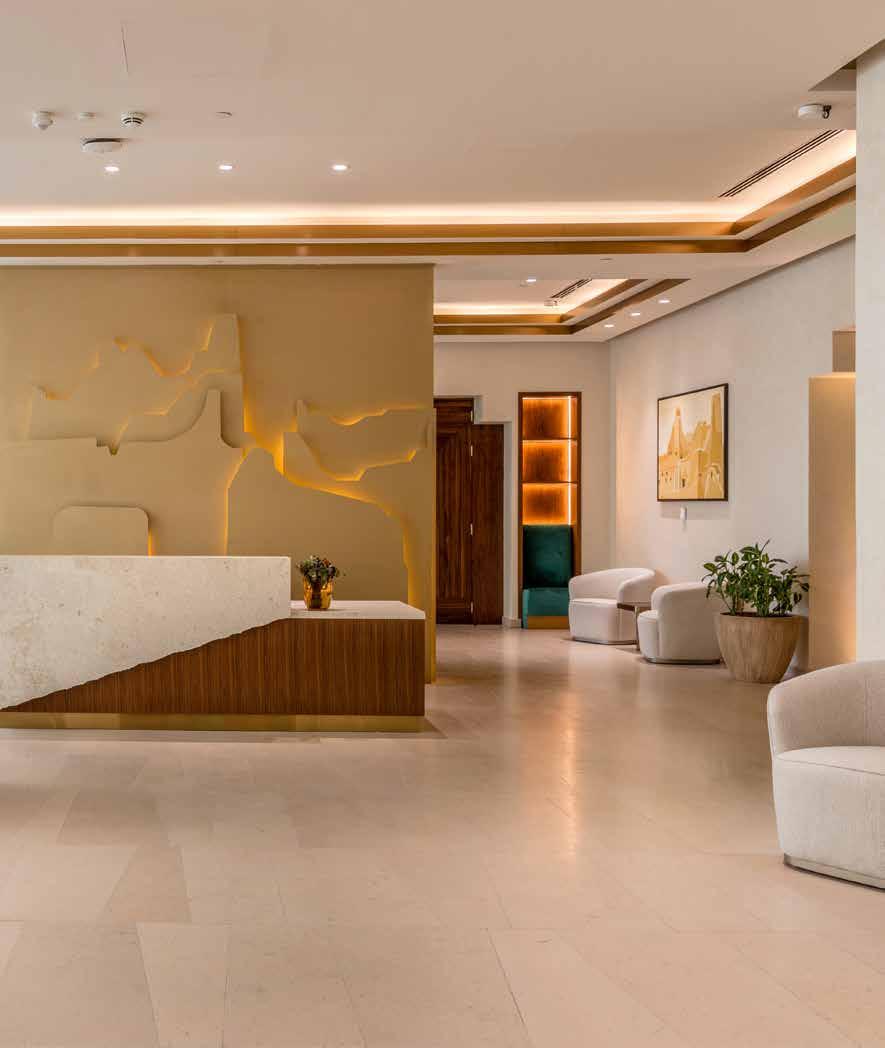
opportunity to make a real impact by elevating creative design standards and introducing international processes.
Even then, change was on the horizon in the Kingdom with innovation, diversification, and forward-thinking approaches were beginning to emerge. It felt like the right time to be involved in dynamic, creative work and to contribute meaningfully to a region in transformation.
SAUDI PROJECTS: How would you describe AAID’s design philosophy, and how is this reflected in your projects across Saudi Arabia?
STUART ALLEN: We have deep respect for the culture and environment we work in. We draw inspiration from the cultural characteristics of a place while also planning for the future. Our philosophy is rooted in form and function, ensuring designs are both beautiful and purposeful.
We integrate international design standards and forward-thinking practices that bring efficiency and creativity to each project. Wherever possible, we use locally sourced materials and aim to reflect both the diversity and heritage of the Kingdom. Our goal is to showcase the richness of Saudi Arabia in a way that’s authentic and inspiring.
SAUDI PROJECTS: What sets AAID apart from other design firms operating in the region, particularly in the fast-evolving Saudi market?
STUART ALLEN: I’m a firm believer in the design process, one that has been tested internationally through generations and movements. This process allows an idea to develop into a well-resolved, real-world solution that meets client needs and surpasses expectations.
Too often, we’ve seen this process overlooked. In Saudi Arabia, we make it a point to explain its importance and ensure every project is treated with the integrity it deserves.
SAUDI PROJECTS: Could you highlight some of the key projects or clients you have worked with in Saudi Arabia to date?
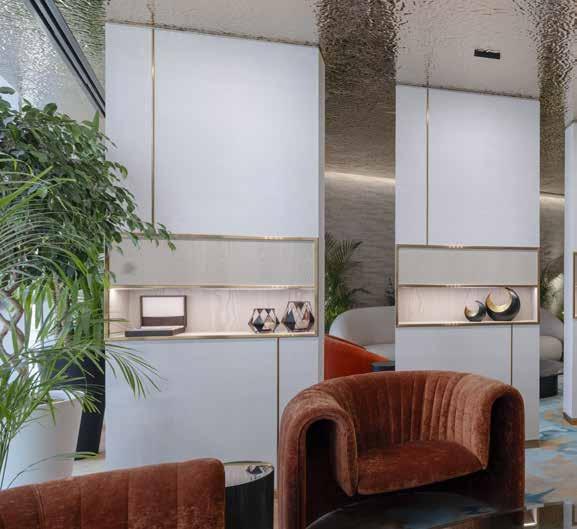
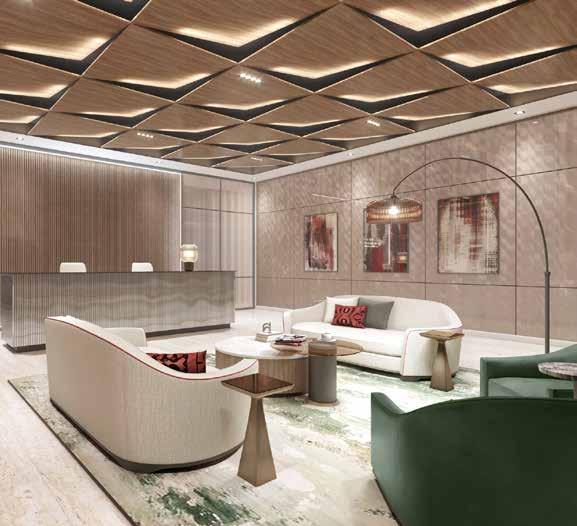
From Qiddiya to PIF - A growing client list

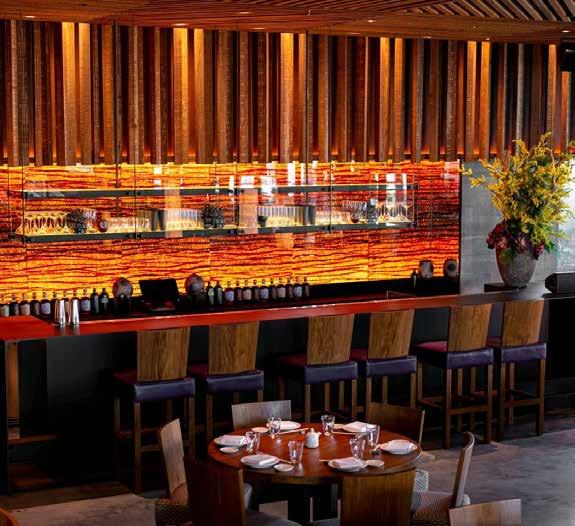
STUART ALLEN: Certainly. Some of our key projects and clients in the Kingdom include:
• Qiddiya & Seven HQ – 22,000 sqm office in Laysen Valley
• Dr. Sulaiman Al Habib HQ – 20,000 sqm
• PIF and subsidiaries – including SURJ (Sports Investment Co.) and VCM (Voluntary Carbon Market)
• KAFD – Development of building technical guides, tenant fit-out manuals, and tenant design reviews
• Ministry of Tourism HQ – Workplace strategy across 9 floors in 3 buildings; designed in collaboration with H.E. the Minister and Deputy Minister to reflect the Kingdom’s 13 regions
• Boston Consulting Group –4,300 sqm regional office
• Ernst & Young – 12,000 sqm regional office
• Bain & Company – 1,600 sqm regional office
SAUDI PROJECTS: Vision 2030 is transforming the built environment in Saudi Arabia. How is AAID aligning with the ambitions of this national initiative?
A decade of experience shaping Saudi spaces
STUART ALLEN: Vision 2030 is about showcasing Saudi Arabia’s culture and contributions to the world, both economically and culturally. It sets a powerful direction, encouraging international recognition and trade.
We’ve already seen the design industry respond. Global companies are establishing themselves in the region, demanding excellence in design. Where once international design firms were a requirement, the Kingdom is now setting the standard, with local talent and projects leading the way. We’re proud to be part of that evolution.
SAUDI PROJECTS: Have you faced any unique challenges or opportunities when designing for the Saudi market? How has AAID adapted?
STUART ALLEN: In the past, a key challenge was the lack of skilled labour and proper onsite management. However, the landscape has shifted quickly. With more international influence and higher standards, the region now aligns with global business practices.
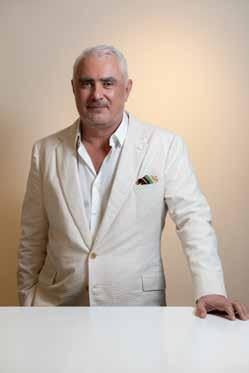
Another major shift is material availability. Previously, projects relied heavily on imports. Now, many suppliers have set up within the Kingdom, which has opened up opportunities for local sourcing. This evolution has been incredible, and we’re grateful to have spent over a decade growing alongside the Kingdom’s development.
SAUDI PROJECTS: From commercial interiors to residential design, AAID has a diverse portfolio. Which sectors are you seeing the most growth or interest in within Saudi Arabia?
STUART ALLEN: The commercial sector remains strong, particularly as more businesses enter the region. However, with the rise of mega projects, international events, and exhibitions, there’s huge demand for supporting infrastructure, particularly in hospitality and F&B.
These in turn drive demand for residential and retail spaces. We expect high-end residential design to see significant growth, shaped by the increasing diversity and opportunity within the Kingdom.
SAUDI PROJECTS: How do you see the future of architecture and interior design evolving in Saudi Arabia, and what role do you envision AAID playing in that journey?

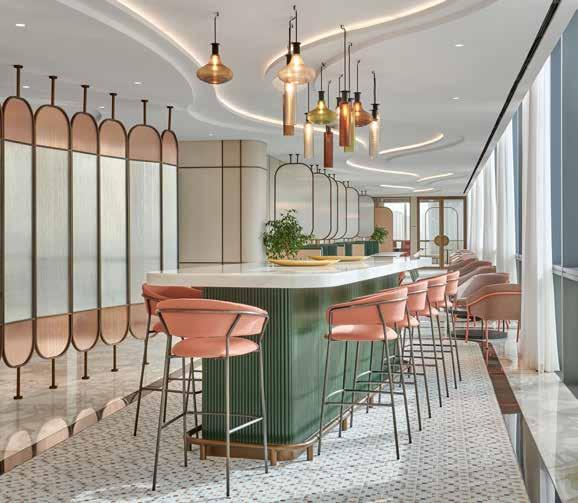

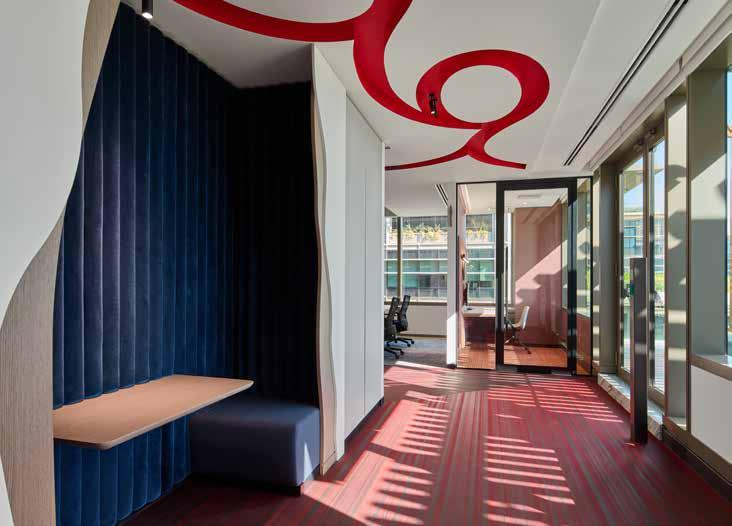

STUART ALLEN: Under Vision 2030, there’s a strong call for international collaboration to showcase the Kingdom’s heritage while embracing global influences. This is already visible in the architecture of Riyadh and the country’s mega projects.
At AAID, our role is to help tell that story and to merge modern innovation with cultural legacy. Through architecture and design, we aim to inspire residents and visitors alike, while proudly representing the Kingdom’s identity to the rest of the world.
SAUDI PROJECTS: Finally, what advice would you give to other international firms looking to establish themselves in Saudi Arabia’s design landscape?
STUART ALLEN: Respect the region and its history. Working in the Kingdom is a gift, an opportunity to collaborate with a proud and rich culture at an extraordinary moment of transformation.
It’s not just about offering expertise, it’s about listening, learning, and contributing meaningfully. Spend time in the region, get to know its people, and understand what drives its growth. The creativity that stems from cultural exchange can lead to truly inspiring work.
Saudi Arabia is a place of great pride and energy. Work with its people and be part of their journey.

In the fast-growing Saudi Arabian construction industry, a powerful social media presence is essential for businesses looking to establish authority, attract clients, and stay ahead of the competition. With over 20 years of experience in the Saudi construction sector, we understand the nuances of the market, industry trends, and what it takes to make an impact online.

WHY CHOOSE US?
1. Specialists in Saudi Arabia’s Construction Industry
We don’t just manage social media—we understand your business.
With two decades in the Saudi market, we:
Know the industry’s key players, trends, and challenges.
Understand B2B and B2C marketing for construction brands.
Develop strategies tailored to the region’s cultural and economic landscape.
2. Arabic & English Social Media Marketing
With Saudi Arabia’s diverse audience, and our multilingual expertise ensures:
High-quality content in both Arabic and English.
Localized campaigns that resonate with target customers.
Greater engagement and credibility across different demographics.
3. Industry-Focused Content Creation
Construction is visual, technical, and competitive. We create:
Branded graphics, videos & infographics to showcase expertise.
Site progress updates, project highlights & case studies.
SEO-optimized captions & industry insights to position your brand as a thought leader.
4. Targeted Audience Growth & Engagement
We don’t just post—we build an engaged audience through:
Community management & direct engagement with potential clients.
Lead generation strategies that turn engagement into business opportunities.
Consistent posting & real-time monitoring for maximum visibility.
5. Paid Advertising for Maximum ROI
We create high-performance campaigns for:
B2B lead generation on LinkedIn & Twitter.
Construction project promotion on Facebook & Instagram.
Targeted PPC campaigns for visibility & client acquisition.
6. Data-Driven Strategy & Performance Tracking
Detailed analytics & monthly reports to measure success.
Content calendars & campaign planning for seamless execution.
Optimization & continuous improvement based on data-driven insights.
EXCLUSIVE OFFER FOR MARCH 2025
Free onboarding.
1 x Free Month.
We will pay 10% of your fee to boost your content.
1 FREE post per month to our 163,000+ Linkedin Followers.
We will give you FREE advertising value on Saudi projects platform equal to the cost of your social media.
HOW WE WORK
Step 1: Consultation & Strategy Development – We assess your business goals, current social media presence, and competitors.
Step 2: Content Creation & Branding – Our team produces high-quality, engaging content that aligns with your brand.
10% PAID BY US TO BOOST YOUR CONTENT
1 FREE POST PER MONTH TO OUR 180,000+ SAUDI PROJECTS FOLLOWERS.
FREE ADVERTISING VALUE ON SAUDI PROJECTS PLATFORM
EQUAL TO THE COST OF YOUR SOCIAL MEDIA PACKAGE
1 X FREE MONTH
Step 3: Campaign Management & Engagement – We handle posting, interactions, and paid ad strategies for maximum reach.
Step 4: Performance Tracking & Reporting – We provide indepth insights and continuously refine our approach for optimal results.

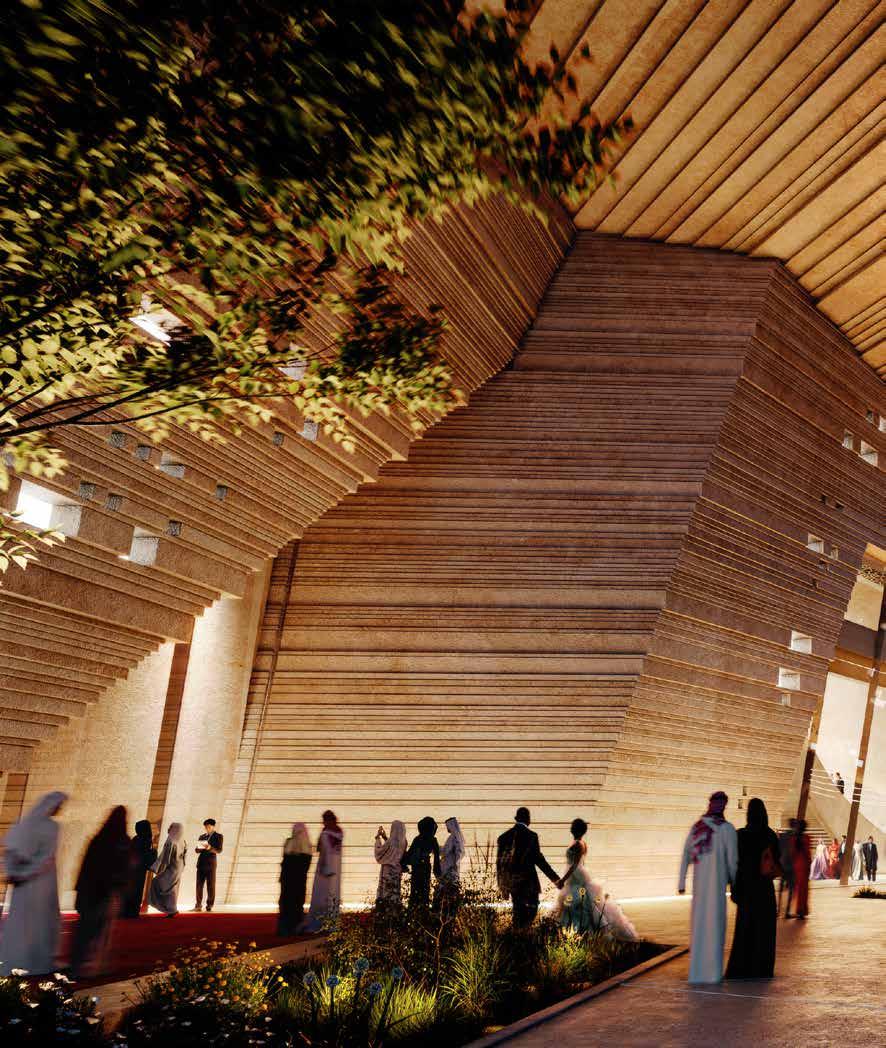
Major milestones reinforce Diriyah as a global hub for heritage, lifestyle, and education.

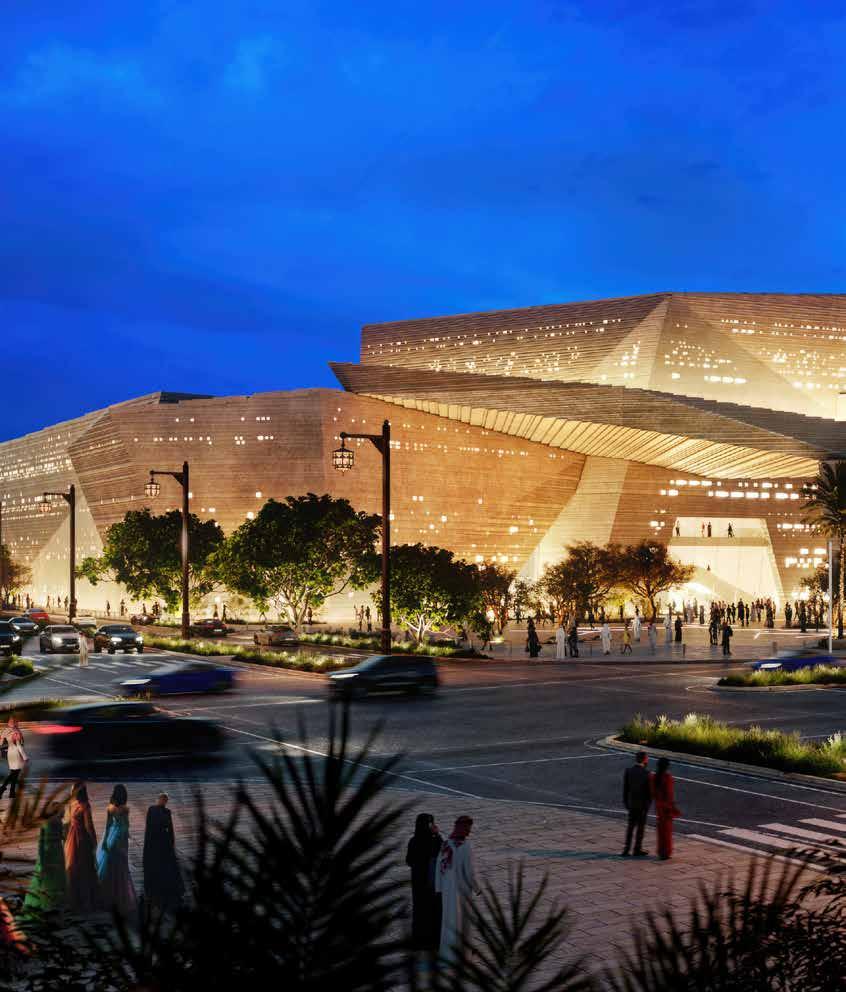
$1.4B Royal Diriyah Opera House underway
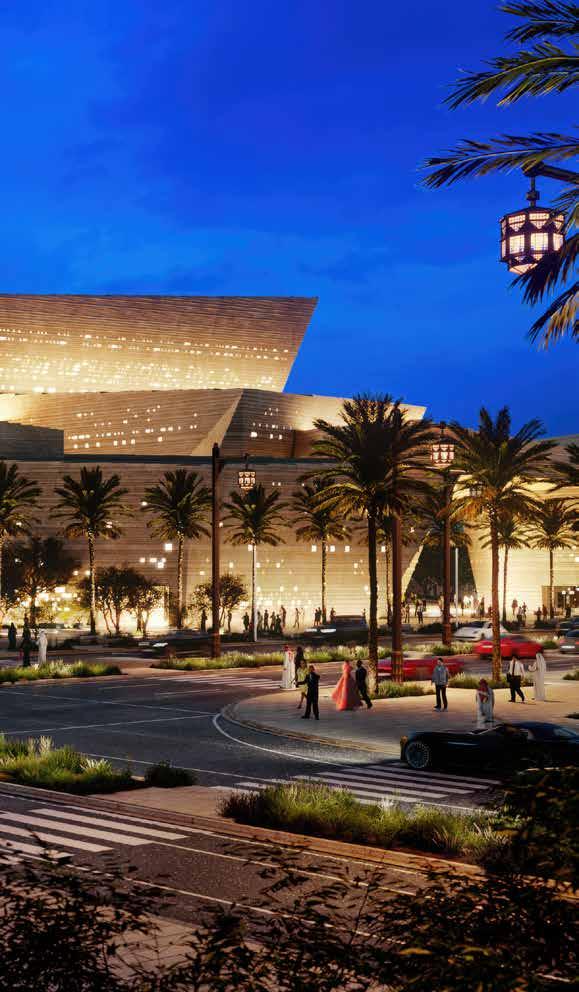
Diriyah Company continues to redefine the landscape of Saudi Arabia’s cultural and urban development, unveiling a series of iconic assets and cultural landmarks that reaffirm its role as a catalyst for heritage-driven transformation. With recent announcements spanning from luxury branded residences to large-scale infrastructure, lifestyle, entrainment, and cultural investments, the company is advancing its mission to turn Diriyah into a global destination and benchmark of elegance, authenticity, and opportunity.
Among the most significant announcements is the awarding of a SAR 5.1 billion ($1.4 billion) construction contract for the Royal Diriyah Opera House. This iconic cultural venue, set to become the largest opera house in the Kingdom, will serve as a new centerpiece for Saudi Arabia’s artistic and performing arts landscape. Designed by renowned Norwegian architectural firm Snøhetta, the opera house will blend contemporary design with traditional Najdi architecture. The venue will include a 2,000-seat main theatre, a studio theater, rooftop amphitheater, and multi-use performance spaces, all designed with sustainability in mind—featuring natural lighting, passive cooling strategies, and water conservation systems.
Diriyah Company is also laying the foundation for vital infrastructure and educational integration. In April 2025, the company announced the awarding of a SAR 4.225 billion ($1.13 billion) contract to relocate the utilities and administration offices of King Saud University as part of its broader masterplan. The joint venture comprised of China Railway Construction Corporation Limited Saudi Branch and China Railway Construction Group Central Plain Construction Co. Ltd., is set to deliver a full suite of modernized infrastructure. This includes a district cooling plant, sewage treatment facilities, LPG and diesel pumping stations, and advanced utility tunnels, in addition to administration offices, warehouses, and maintenance workshops.
This initiative emphasizes Diriyah Company’s alignment with Vision 2030 goals in enhancing educational institutions and enabling
world-class services for students and faculty. It also demonstrates the seamless integration of infrastructure within the urban and cultural fabric of Diriyah, reinforcing the area’s strategic importance as a hub for learning, heritage, and innovation.
In March 2025, Diriyah Company announced the Armani residences in Diriyah. This collection of 15 exclusive branded homes will be nestled within Diriyah Square, the beating retail heart of Diriyah, marking the debut of Armani’s residential footprint in Saudi Arabia. The homes, with interiors curated personally by Giorgio Armani, are a refined interpretation of Najdi design, offering a distinct sense of place while embracing the timelessness of Diriyah’s legacy and the elegance of Armani’s brand.
Armani residences will span three thematic collections: The Palm Residences, The Botanical Residences, and The Royal Penthouses. Ranging from 1,200 to 1,900 square meters. Each home includes formal and family living areas, threebedroom suites, libraries, private pools, and furnishings by Armani/Casa. Residents will also benefit from seamless access to the adjacent Diriyah Square and its premium, global and local retail offering, which includes over 400 retail & F&B options, a wellness center, business lounge, and in-residence services, all connected via dedicated underground access.
Along with their cultural and residential milestones, Diriyah Company also unveiled a transformative addition to its masterplan with the launch of the Media and Innovation District, announced at MIPIM 2025 in Cannes. Envisioned as a pioneering hub for the technology, media, and communications industries, the district will redefine how content is created, shared, and experienced in the region. Strategically located near the 20,000seat Diriyah Arena, the district will span over 250,000 square meters of office gross floor area, anchored by global media networks, creative agencies, and innovation-led enterprises.
Purpose-built for collaboration, the district will feature 450 residential units, more than 15,000 square meters of retail and dining space,

Armani
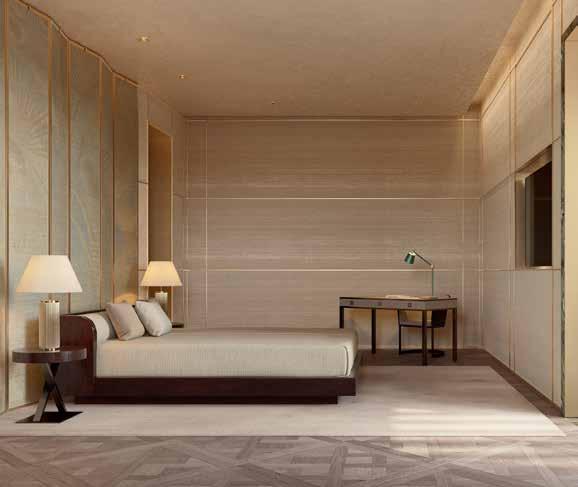



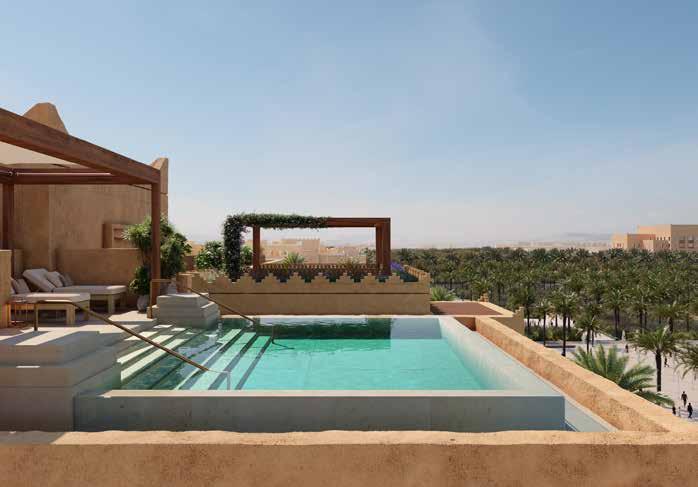
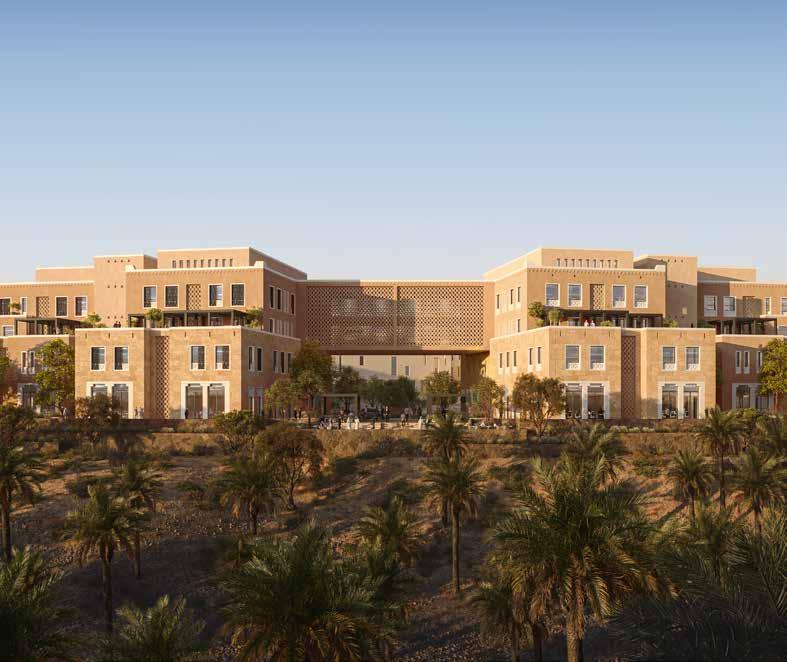
and will be home to the first Middle East property from the globally renowned 1 Hotels brand: The 1 Hotel Diriyah, designed with sustainable principles and local materials.
The Media and Innovation District is set to attract regional and international tech giants, broadcasting companies, and digital disruptors, all within an ecosystem designed to foster creativity, innovation, and transformative thinking. Office buildings will incorporate light-
filled, future-ready workspaces with advanced sustainability standards embedded from planning through to operation.
These major announcements reinforce Diriyah Company’s role in the wider Vision 2030 ecosystem: to create a city that is not only a beacon of Saudi heritage but also a world-class destination for culture, education, and lifestyle. The convergence of artistic expression, academic excellence, and luxury living in
one masterplan is a powerful statement of intent; a model of development that harmonizes tradition with progressand puts people first.
As Diriyah continues to attract global travelers and investors, these milestones provide a compelling glimpse into its future: a city born of history, thriving in modernity, and built with purpose.

Saudi Arabia's $9.8B entertainment hub advances toward 2025 launch.
KEY PROJECT HIGHLIGHTS:
Six Flags Qiddiya City: Construction is 89% complete. This $1 billion theme park will be the largest Six Flags globally, featuring 28 rides, including Falcon’s Flight—the world’s tallest, longest, and fastest roller coaster.
Aquarabia Water Park: At 84% completion, this $750 million venture will be Saudi Arabia’s first and the Middle East’s largest water park, boasting 22 rides, nine of which are world-firsts.
Golf Courses: Currently 77% complete, the golf facilities will span 1.6 million m², equivalent to 215 football fields, with 45% of landscaping finalized.
Prince Mohammed bin Salman Stadium: Scheduled for completion in 2029, this $1.1 billion stadium will seat 46,000 spectators and feature a retractable roof, pitch, and LED wall, making it the world’s first fully integrated venue of its kind.
Speed Park Formula 1 Circuit: Construction is underway for this FIA Grade 1 racetrack, with initial contracts valued at $1.9 billion. The circuit is expected to be ready by 2027.
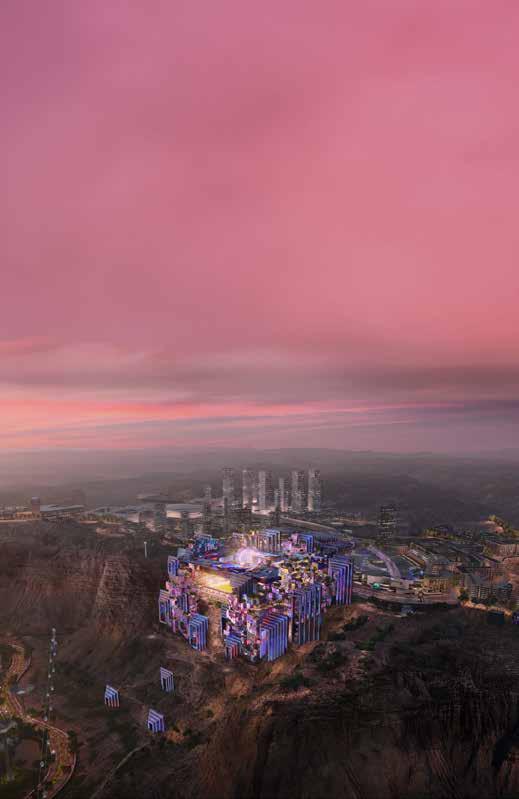
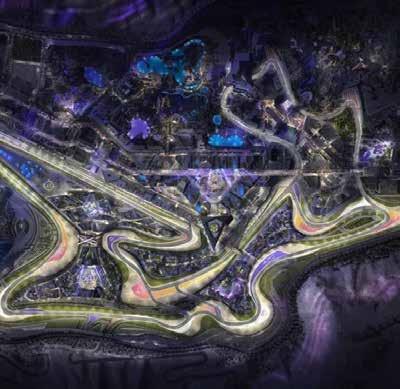
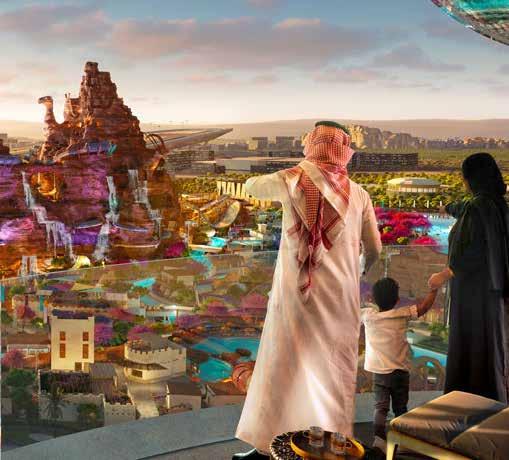
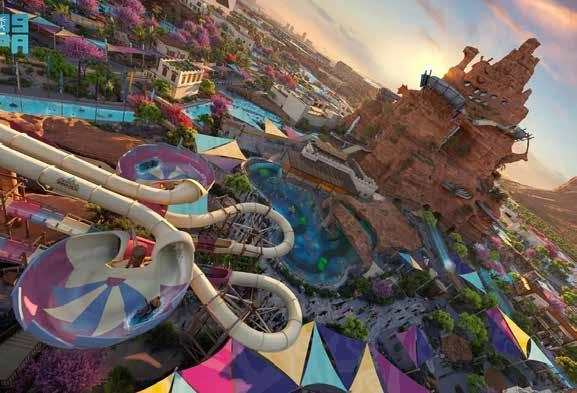
ABOUT QIDDIYA INVESTMENT COMPANY (QIC): QIC is spearheading the development of Qiddiya City, aligning with Saudi Arabia’s Vision 2030 to create a diversified economy and a global destination for entertainment, sports, and culture.
Inside the minds of leaders transforming construction, engineering, and energy in Saudi Arabia.
As Saudi Arabia continues its ambitious journey of economic diversification and infrastructure growth under Vision 2030, few organizations are as central to this transformation as Buna Holding. Established as a leading construction and management services organization, Buna Holding has become a cornerstone of the Kingdom’s thriving built environment and industrial landscape.
With a robust portfolio that includes Buna Al Khaleej, Emcotech, and DAC, Buna Holding has built a reputation for delivering excellence across construction, engineering, and energy services. The group’s integrated capabilities, grounded in innovation and a deep understanding of local market needs, position it as a key player in Saudi Arabia’s dynamic construction and development ecosystem.
In this special feature, Saudi Projects sits down with the management team and visionary leaders of Buna Holding and its four pioneering companies. We explore their insights into sustainable growth, their commitment to driving innovation, and how they’re tackling the Kingdom’s most complex and high-impact projects. From cutting-edge engineering to next-generation energy solutions, their stories reveal the passion and dedication that underpin Buna Holding’s mission to shape the future of Saudi Arabia’s construction and industrial sectors.
Learn more about Buna Holding's dynamic leadership team:, click on each profile for the full story.
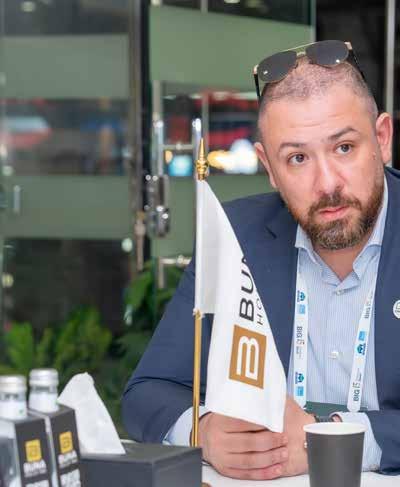

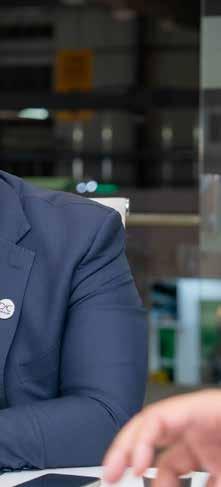

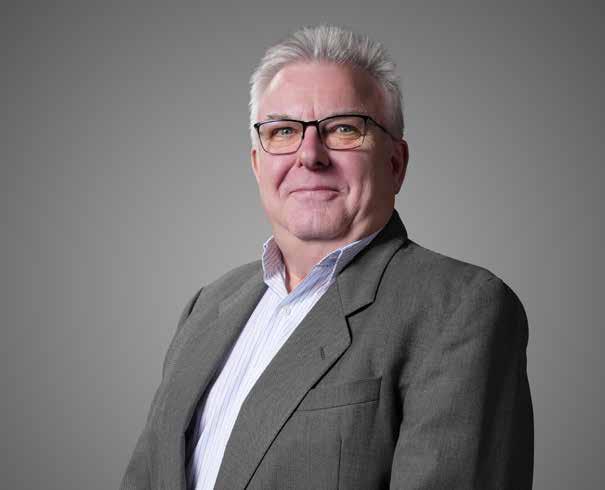
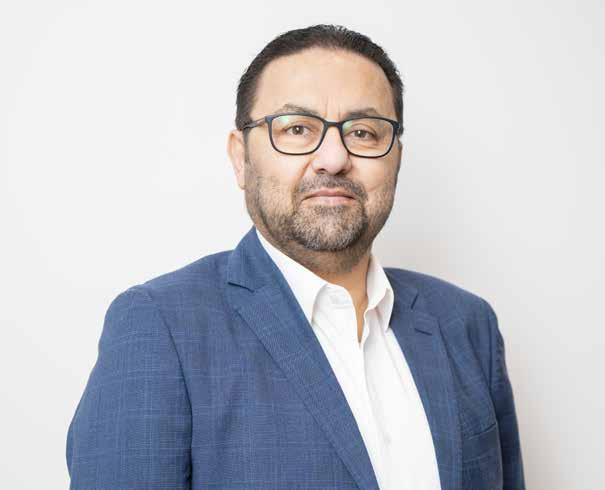
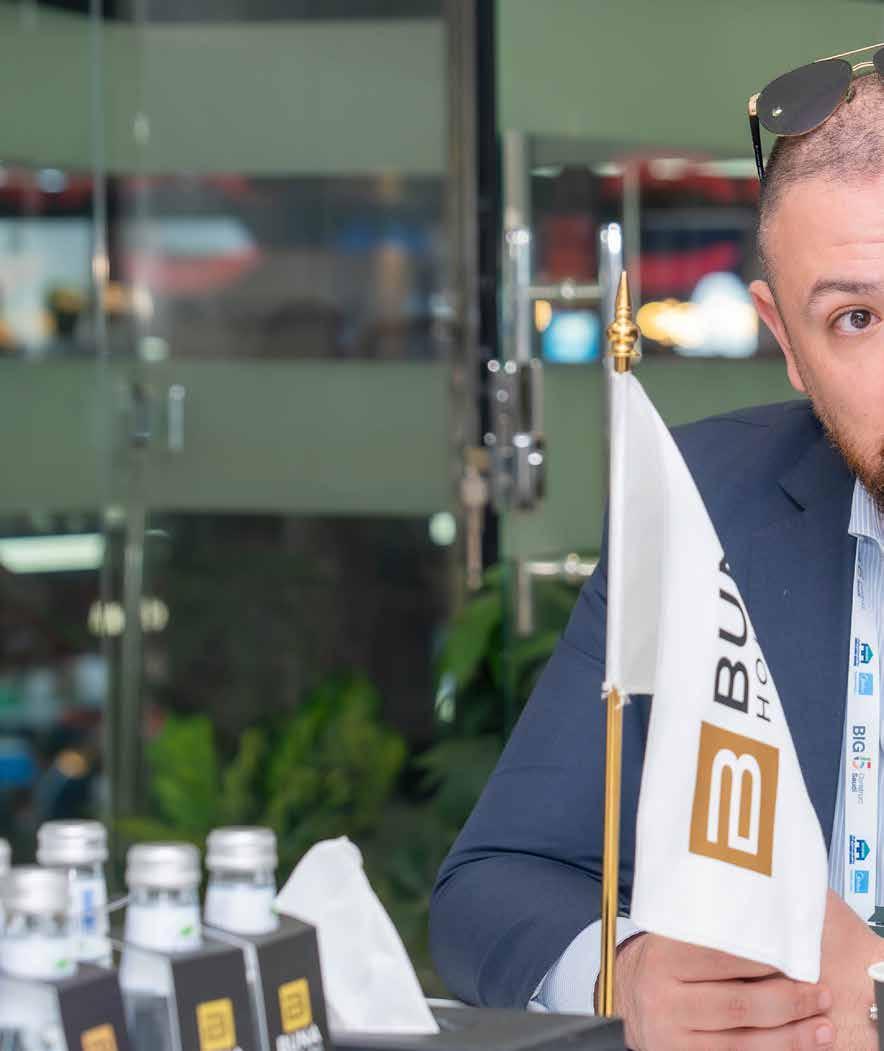
Saeed Hijjawi, Commercial Director at DAC Group discusses how DAC Group aligns with Vision 2030 and drives success.

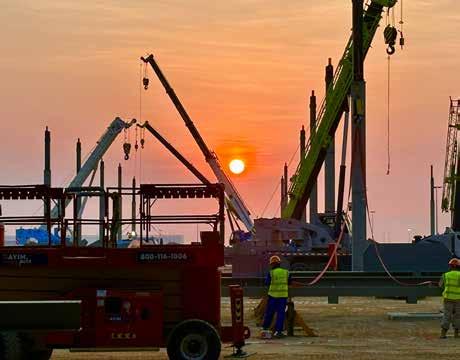
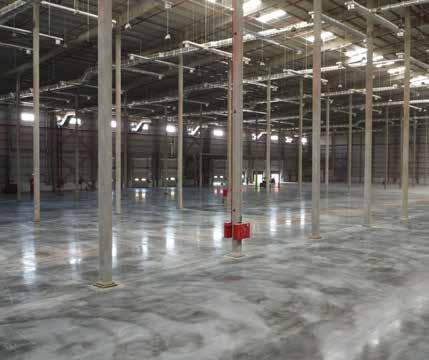
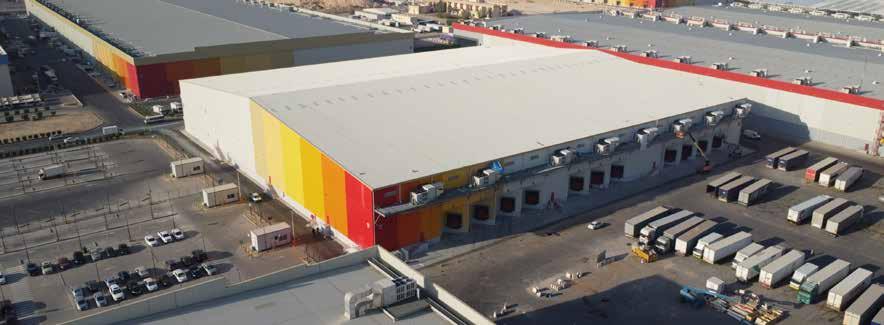
n this exclusive interview, Saudi Projects speaks with Saeed Hijjawi about his role in shaping the company’s commercial direction, driving revenue growth, and ensuring DAC Group remains a key player in the Kingdom’s evolving built environment.
As Saudi Arabia’s construction sector accelerates under the transformative goals of Vision 2030, the importance of strategic commercial leadership has never been greater. At the heart of DAC Group’s growth is Saeed Hijjawi, the company’s Commercial Director, whose expertise spans business development, strategic planning, and financial oversight.
SAUDI PROJECTS: Can you tell us about your role as Commercial Director at DAC Group and what your main priorities are in driving the company’s commercial strategy?
SAEED HIJJAWI: My main responsibility as Commercial Director at DAC Group is to oversee revenue generation activities including business development, client relationships, pricing strategy, and market expansion. Additionally, I ensure our commercial strategies are aligned with company growth objectives to position DAC Group as a market leader.
SAUDI PROJECTS: What are some of the key factors you consider when setting strategic
goals to ensure the company achieves sustainable growth?
SAEED HIJJAWI: I always take a holistic and data-driven approach. Key factors include competition in the target market, internal resources, profitability, market trends, and regulatory compliance.
SAUDI PROJECTS: You lead the business development team—how do you identify new opportunities and position DAC Group to capitalize on them in a highly competitive market?
SAEED HIJJAWI: It starts with understanding the market and customer needs. I work closely with the BD team to monitor market trends, new technologies, and regulatory changes. Once an opportunity is identified, we evaluate it based on profitability, scalability, and alignment with strategic objectives.
We differentiate ourselves as a value-added solutions provider, which strengthens client relationships and trust.
SAUDI PROJECTS: How do you balance short-term financial targets with long-term business success, especially in the context of Saudi Arabia’s rapidly evolving construction landscape?
SAEED HIJJAWI: In a dynamic market like Saudi Arabia, it's crucial to have a clear strategic roadmap while remaining agile. Shortterm goals often focus on cash flow and margin optimization, while long-term investments include strategic partnerships, high-tech equipment, and workforce upskilling.
SAUDI PROJECTS: What role does commercial foresight play in shaping the group’s project portfolio and client engagement strategy?
SAEED HIJJAWI: Commercial foresight is about being proactive rather than reactive. We anticipate market dynamics and trends— such as Vision 2030 initiatives—to guide our portfolio and client engagement. This ensures our growth is timely and aligned with national priorities.
SAUDI PROJECTS: In terms of revenue growth, what strategies have proven most effective for DAC Group, and how do you plan to build on them?
SAEED HIJJAWI: Our growth strategies are built on:
Providing value-added services
Operational excellence and differentiation
Strategic client targeting
Alignment with Vision 2030
We are expanding into high-potential regions and mega projects, particularly in PIF and industrial sectors. Additionally, investing in new technologies and forming joint ventures with both international and local partners enhances our competitive edge.
SAUDI PROJECTS: The Vision 2030 initiative is transforming the Kingdom’s infrastructure sector—how is DAC Group aligning its commercial strategy to support these national objectives?
SAEED HIJJAWI: Aligning our commercial strategy with Vision 2030 is central to our growth. We've redirected BD efforts toward mega projects and invested in local talent, supply chain development, and value-driven partnerships within the Kingdom.
Leading with agility in a dynamic industry
SAUDI PROJECTS: What are some of the biggest challenges you face in your role, and how do you approach overcoming them?
SAEED HIJJAWI: One of the biggest challenges is staying competitive in a fast-evolving market. We overcome this by building a high-intelligence BD team that ensures DAC Group is engaged in pre-tender stages through strong relationships, insights, and proactive stakeholder engagement. We aim to shape opportunities rather than just respond to them.
SAUDI PROJECTS: How do you measure success—both personally and professionally— when it comes to the commercial performance of the group?
SAEED HIJJAWI: Success, to me, is about longterm value creation and sustainable growth. I use KPIs such as revenue growth, gross margin improvements, conversion rates, and client
retention. If DAC Group is seen as a partner of choice by clients and consistently delivers value, that is true success.
SAUDI PROJECTS: Finally, what advice would you give to aspiring commercial leaders looking to make an impact in Saudi Arabia’s construction industry?
SAEED HIJJAWI: Lead with agility and understand the broader landscape. Success isn’t just about pricing or proposals—it’s built on trust, long-term engagement, and cultural understanding. Build local relationships, be credible, stay adaptable, and remain strategic.
With a sharp eye on market trends and a firm grip on strategic planning, Saeed Hijjawi continues to position DAC Group as a dynamic and forward-thinking force in Saudi Arabia’s construction sector. His commitment to aligning business objectives with national development goals highlights the value of visionary leadership in today’s competitive market. As the Kingdom’s construction industry enters a new era, Saeed’s commercial acumen will no doubt remain central to DAC Group’s continued success.
Building value through data-driven market
Anthony Cash, MEP Director at BUNA Al Khaleej on leadership, precision, and adaptability fuel BUNA’s success in MEP service delivery.


n this exclusive interview, Saudi Projects spoke with Anthony about the challenges, innovations, and responsibilities that came with leading MEP service delivery across some of the region’s most dynamic construction projects.
Anthony Cash, MEP Director at BUNA Al Khaleej, was at the forefront of delivering complex building systems that met the Kingdom’s ambitious standards for time, budget, safety, and quality.
SAUDI PROJECTS: Can you give us an overview of your role as MEP Director at BUNA Al Khaleej and what it entailed on a day-to-day basis?
ANTHONY CASH: I oversaw all MEP-related matters on all projects, from the initial inquiry stage through to construction. The goal was to develop clear strategies and plans to ensure a smooth transition from tender through design, procurement, and construction.
SAUDI PROJECTS: How did you ensure that MEP services were delivered on time, within budget, and to the highest standards of safety and quality?
ANTHONY CASH: The only way to ensure time, budget, and standards were met was by having suitably qualified staff in all positions and conducting regular review meetings to confirm that targets were being achieved or exceeded.
SAUDI PROJECTS: BUNA was involved in significant projects across the Kingdom, what was your biggest challenge to date, and how did you overcome it?
ANTHONY CASH: The biggest challenges always arose from issues on projects already under construction. Decisions made months or even years earlier sometimes proved unsuitable, and swift changes had to be made to avoid delays to the construction schedule.

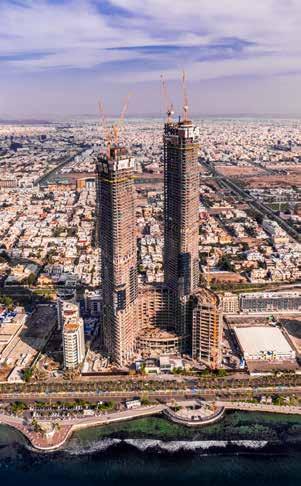

SAUDI PROJECTS: The MEP discipline is critical to the success of any development, how did you integrate these systems seamlessly with other trades on-site?
ANTHONY CASH: There was no magic involved, just hard work, coordination, and cooperation among all stakeholders. The only way to resolve space or clash issues is by discussion and cooperation, resulting in a solution. Everyone sitting back and blaming each other wastes time and effort and does not solve the issue at hand.
SAUDI PROJECTS: With the Kingdom's projects moving at pace, how did you align your delivery strategies to keep up with the momentum?
ANTHONY CASH: The company’s aggressive staff recruitment policy aimed to ensure qualified and experienced personnel were in

place at every level—from robust tendering teams to senior site staff and skilled technicians all delivering high-quality work within tight timeframes.
SAUDI PROJECTS: Quality assurance is a major factor in your field. What processes were in place to maintain and monitor quality throughout a project’s lifecycle?
ANTHONY CASH: We had a company-wide QA policy document that guided all procedures during design and installation. This policy was tailored on a project-by-project basis to address specific requirements unique to each job.
SAUDI PROJECTS: What role did technology play in modern MEP delivery, and how did BUNA embrace innovation to stay ahead?
ANTHONY CASH: The use of 3D BIM significantly improved installation detailing and speed over the past two decades. As AI-generated models became more common, human roles shifted toward oversight and validation. However, I still believed AI should not be relied upon to make every decision.
SAUDI PROJECTS: Safety on-site remained a top priority. How did you foster a culture of safety across multidisciplinary teams and contractors?
ANTHONY CASH: We worked to educate workers to expect safe conditions—not just accept hazards. This required investment in safety materials and practices, but just as important was cultivating personal responsibility. One careless act could undo weeks of safety planning.
SAUDI PROJECTS: Looking at Vision 2030, how did you see BUNA contributing to the transformation of Saudi Arabia’s built environment?
ANTHONY CASH: The future for both the Kingdom and BUNA looked bright. The key was to embrace available opportunities, grow the company’s capabilities, and prepare the next generation of engineers to lead into the future.
SAUDI PROJECTS: Finally, what advice would you give to young engineers aspiring to work in MEP and rise to leadership in Saudi Arabia’s construction sector?
ANTHONY CASH: My advice is simple:
Listen to your superiors and learn.
Adapt your ideas when better solutions arise.
In MEP, there’s never just one solution—stay flexible.
Never assume you know everything— engineering evolves daily.
With a clear focus on precision, performance, and progress, Anthony Cash exemplified the leadership driving Saudi Arabia’s construction sector forward. His work at BUNA Al Khaleej not only supported the delivery of landmark projects but also set a benchmark for MEP excellence.
As the Kingdom continues to grow, professionals like Anthony remain essential to ensuring that what lies behind the walls from power, water, air, and safety all works flawlessly in the cities of tomorrow.
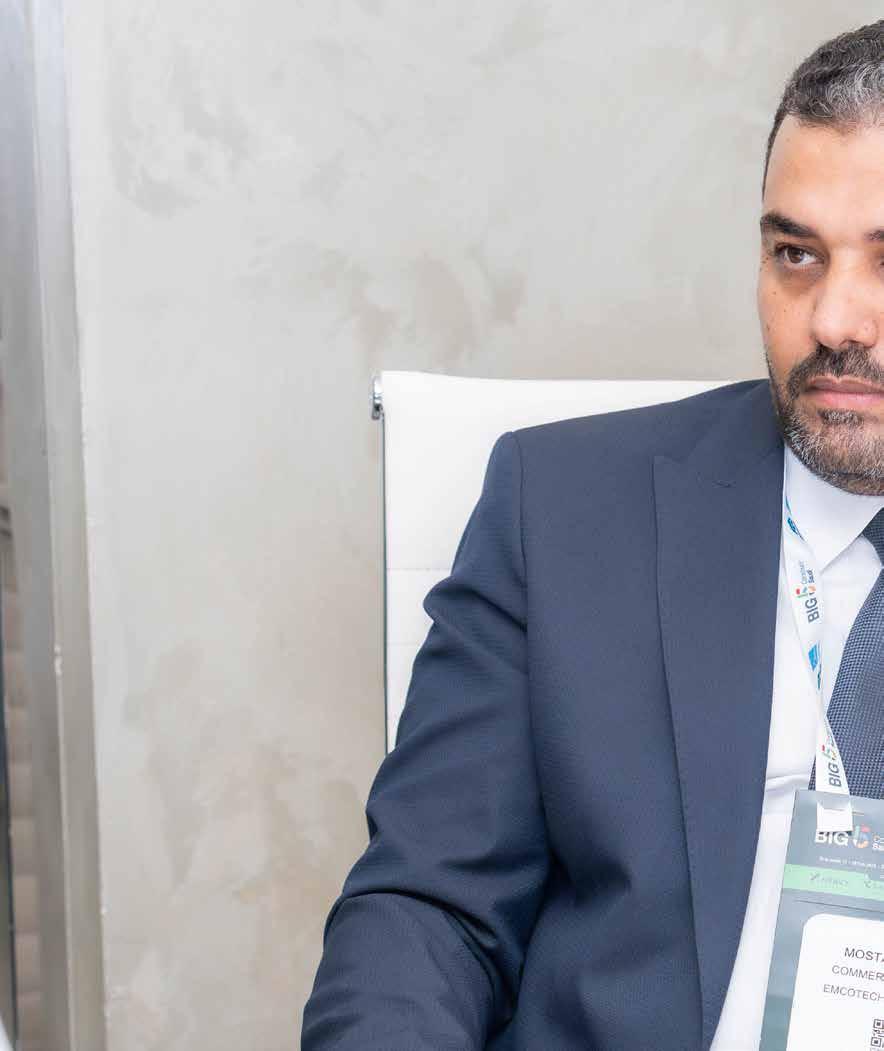

n this exclusive interview, Saudi Projects delves into his perspective on commercial strategy, collaboration, and value creation within the Kingdom’s dynamic construction industry.
At the heart of this transformation is Mostafa Younis, Commercial Manager at Emcotech (a BUNA Holding subsidiary and the MEP arm of the group), who plays a pivotal role in steering high-value construction projects through complex financial and operational landscapes.
With a deep understanding of risk, procurement, and strategic planning, Mostafa is responsible for ensuring each project meets its commercial objectives while delivering on quality, schedule, and compliance.
SAUDI PROJECTS: What does your role as Commercial Manager at Emcotech involve on a day-to-day basis within the BUNA Holding organization?
MOSTAFA YOUNIS: As Commercial Manager, I’m responsible for financial project oversight, identifying business opportunities, and leading bid preparation to secure new contracts. My role spans project phases—from feedback and contribution to procurement—while focusing on financial guarantees, quality assurance, and on-time delivery.
SAUDI PROJECTS: How do you approach project bidding and contract negotiation to ensure financial viability and competitive advantage?
MOSTAFA YOUNIS: I take an analytical approach that starts with understanding client requirements, followed by technical and commercial proposals grounded in realistic assessments. By mastering competitive bidding, we aim to drive growth, secure contracts, and deliver long-term sustainability for the company.
SAUDI PROJECTS: Can you share an example of a recent project where your commercial strategy made a significant impact on its success?
MOSTAFA YOUNIS: A prime example is the Sumou Towers project in Jeddah. Our

commercial strategy was crucial, leveraging value engineering, managing supply chains, controlling contracts, and maintaining schedule despite the challenges of high-rise logistics and complexity.
SAUDI PROJECTS: Risk assessment is a core part of your role. How do you identify and manage risks in the early stages of a construction project?
MOSTAFA YOUNIS: Pre-construction risk assessments are essential. We identify hazards early, secure data across the supply chain, collaborate closely across departments, and implement quality assurance plans, ensuring safe, efficient, and streamlined execution.
SAUDI PROJECTS: Collaboration is key in large-scale developments, how do you ensure
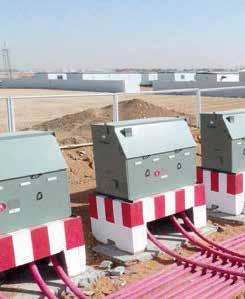
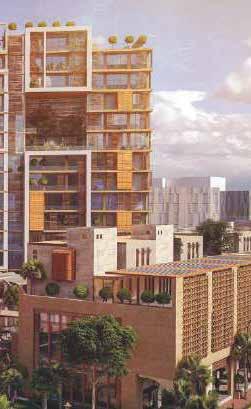
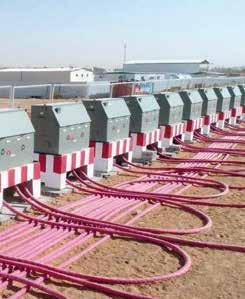
alignment between the commercial team and other departments like design, engineering, and operations?
MOSTAFA YOUNIS: Collaboration builds synergy. We hold regular coordination meetings to align communication from the outset. Teams work together—commercial, design, engineering, and operations—to create consistency that enhances construction quality.
SAUDI PROJECTS: How has Saudi Arabia’s evolving regulatory and business landscape influenced your commercial planning and project execution?
MOSTAFA YOUNIS: Vision 2030’s dynamic changes require constant flexibility. We closely monitor market shifts and adapt strategies to remain compliant and seize emerging opportunities.
SAUDI PROJECTS: Labor and supply chain planning can be unpredictable; how do you manage these aspects to maintain cost control and timelines?
MOSTAFA YOUNIS: Through accurate planning schedules, early forecasts, and collaboration with suppliers. We maintain strategic partnerships, ensure transparent communication, and prepare contingency plans to support continuity and minimize waste.
SAUDI PROJECTS: What technologies or digital tools have improved commercial efficiency or forecasting accuracy at Emcotech?
MOSTAFA YOUNIS: ERP systems and financial analysis tools have greatly improved efficiency, decision-making, and real-time financial monitoring. Automation reduces manual labor and provides instant access to data across projects.
SAUDI PROJECTS: As Vision 2030 unlocks more opportunities, how do you see the role of commercial managers evolving in Saudi Arabia’s construction sector?
MOSTAFA YOUNIS: The role is more strategic than ever. It goes beyond cost control, commercial managers now forge partnerships, identify growth, and help shape projects aligned with national goals.
SAUDI PROJECTS: What advice would you give to up-and-coming commercial professionals entering the Saudi construction market?
MOSTAFA YOUNIS: Build deep market knowledge, sharpen analytical and communication skills, and understand the value of teamwork. Success lies in creating value, not just managing numbers.
With a firm grasp of both the numbers and the nuances behind successful project delivery, Mostafa Younis exemplifies the strategic thinking and adaptability needed to thrive in Saudi Arabia’s fast-evolving construction environment.
As Emcotech Arabia continues to grow its project portfolio under the BUNA Holding umbrella, his expertise will remain vital in translating opportunity into long-term value. Whether navigating risk or driving stakeholder collaboration, Mostafa’s commercial leadership is helping to build more than structures, he’s helping build a sustainable, results-driven future for the Kingdom.
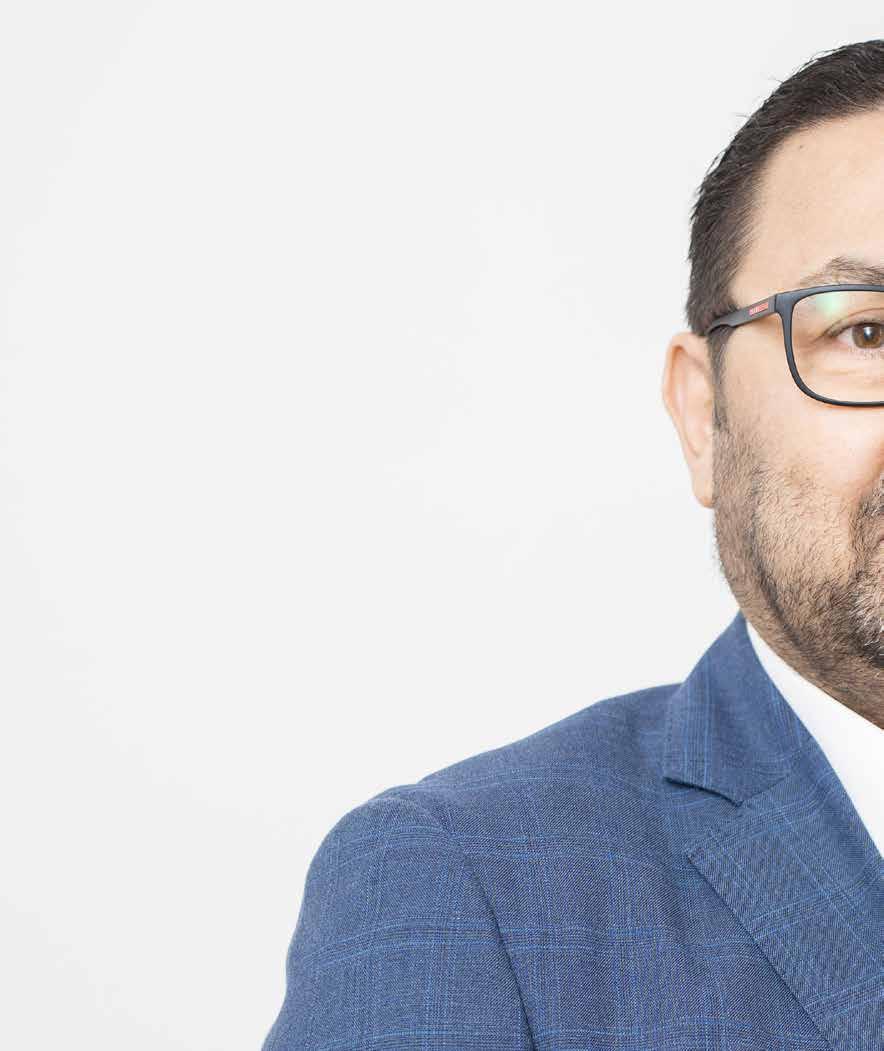
Rahif Al Jarkas, Finance Director at BUNA Holding explains how disciplined governance ensures BUNA’s financial strength and agility.
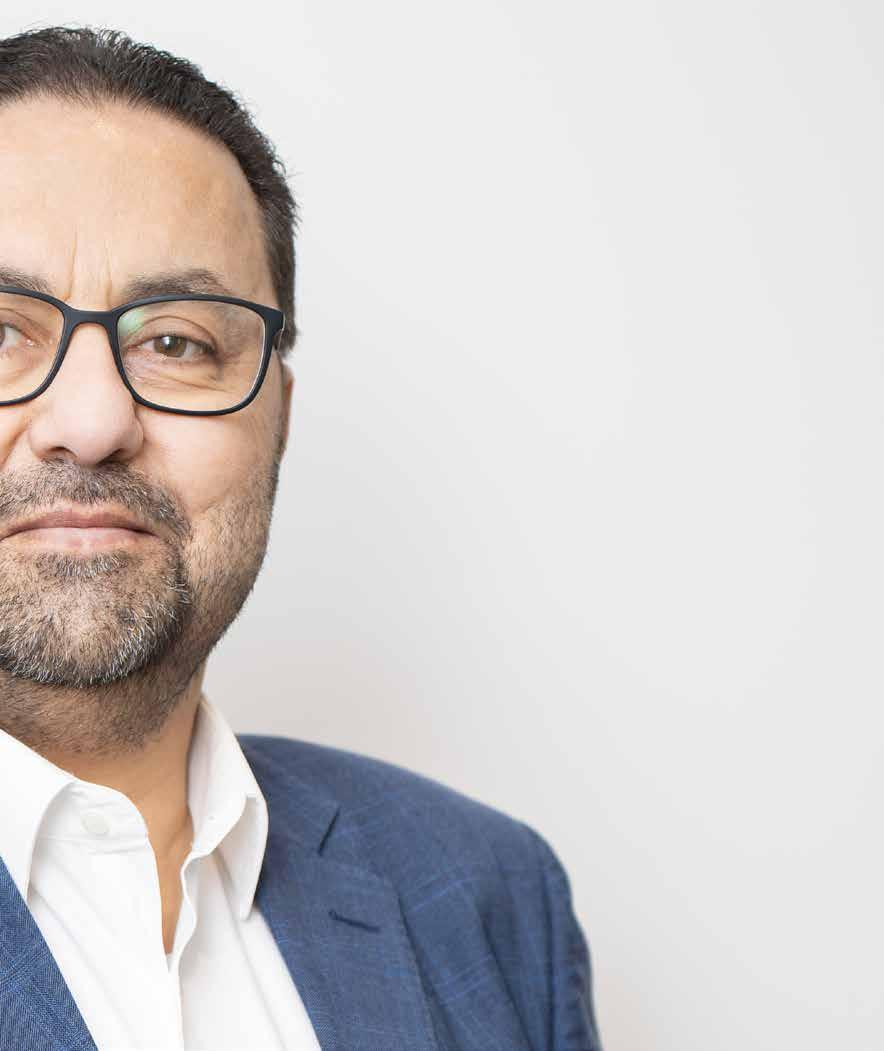
n this exclusive Saudi Projects interview, Rahif shares insights into how financial foresight and disciplined governance are helping BUNA thrive in one of the most dynamic construction markets in the world.
Rahif Al Jarkas, Finance Director at BUNA Holding, plays a key role in steering the company’s financial strategy, overseeing rigorous compliance protocols, and driving efficiency across its operations.
Rahif Al Jarkas’s role at BUNA Holding exemplifies the critical importance of robust financial stewardship in the success of largescale construction firms. His ability to blend strategic planning with operational oversight ensures BUNA remains financially sound, compliant, and primed for continued growth. As Saudi Arabia enters a new era of infrastructural development, professionals like Rahif are laying the financial foundations upon which the Kingdom’s future is being built.
SAUDI PROJECTS: Can you tell us about your role as Finance Director at BUNA Holding and how it contributes to the company’s broader strategic goals?
RAHIF AL JARKAS: As Finance Director at BUNA Holding, I play a crucial role in shaping financial strategy and ensuring long-term stability. In addition to overseeing day-to-day operations, we focus on regulatory compliance and implementing policies to safeguard company assets.
SAUDI PROJECTS: Financial forecasting and budgeting are key aspects of your responsibilities, what tools or methodologies do you rely on to ensure accuracy and agility in these processes?
RAHIF AL JARKAS: Forecasting and budgeting rely on a mix of methodologies and tools to ensure accuracy and adaptability. We tailor our forecasting based on business sector, market size, and the expertise we have in-house.
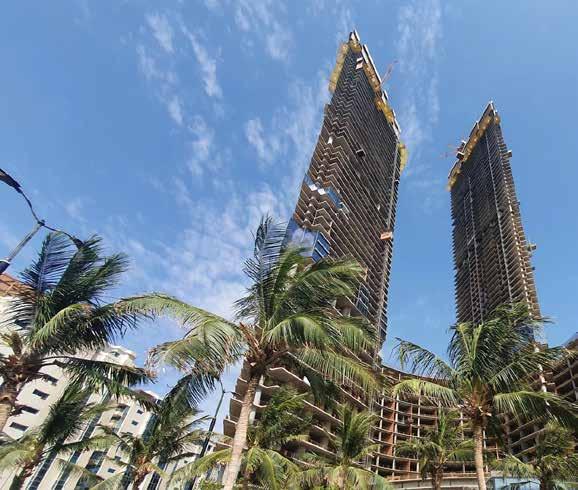
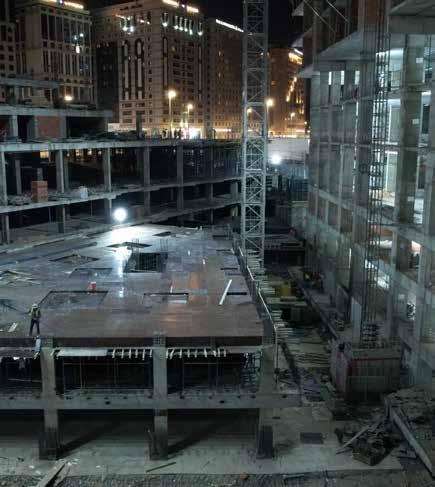


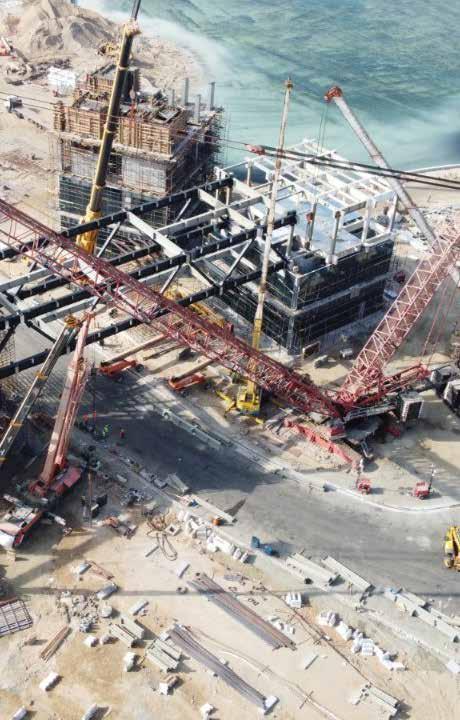
SAUDI PROJECTS: How do you approach risk management in a fast-paced industry like construction, where cost overruns and delays can significantly impact the bottom line?
RAHIF AL JARKAS: Risk management is essential in construction. We use ERP systems and project planning tools, enforce clear contract terms to allocate risks, and continuously monitor project milestones to proactively identify and address issues.
SAUDI PROJECTS: What steps do you take to ensure full compliance with Saudi Arabia’s evolving financial regulations and reporting standards?
RAHIF AL JARKAS: We stay current with all regulatory updates and review internal controls regularly. If any weaknesses are identified, we act promptly. Technology also plays a critical role in maintaining compliance.
SAUDI PROJECTS: Overseeing audits is a core part of your role. How do you maintain transparency and accountability across such a large and diverse organization?
RAHIF AL JARKAS: We follow a structured audit strategy, ensuring auditors maintain independence. We also have an audit committee that oversees financial reporting and internal controls, reinforcing credibility.
SAUDI PROJECTS: In terms of strategic financial planning, how do you align BUNA’s long-term investment decisions with market trends and national development initiatives?
RAHIF AL JARKAS: Since the launch of Vision 2030, we have monitored economic indicators, industry shifts, and emerging technologies to guide investment decisions. Aligning with government initiatives ensures sustainable growth.
SAUDI PROJECTS: How have rising material costs, global supply chain challenges, or economic fluctuations influenced your budgeting and forecasting over the past year?
RAHIF AL JARKAS: These challenges have negatively impacted budgeting and forecasting. We’ve adapted by adjusting cost projections and adopting agile financial planning to improve accuracy.
SAUDI PROJECTS: What role does digital transformation and automation play in BUNA’s financial management and reporting functions?
RAHIF AL JARKAS: Digital transformation is a game-changer. It enhances efficiency, accuracy, and supports better strategic decision-making.
SAUDI PROJECTS: How do you work with other departments, such as project management and procurement, to ensure financial discipline without compromising project delivery?
RAHIF AL JARKAS: We collaborate closely with all departments. This synergy ensures we maintain financial discipline while supporting smooth project execution.
SAUDI PROJECTS: Finally, what advice would you give to young finance professionals who aspire to lead the financial operations of major construction firms in the Kingdom?
RAHIF AL JARKAS: Master the fundamentals of financial planning, budgeting, and risk management to understand projects fully. Stay updated on local regulations and global financial technologies relevant to the construction industry.
Rahif Al Jarkas continues to reinforce BUNA Holding’s position as a financially disciplined, growth-driven organization. His insights demonstrate how strategic planning, compliance, and technology combine to drive long-term success in Saudi Arabia’s evolving construction landscape.
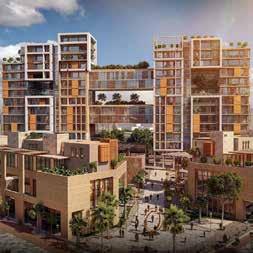

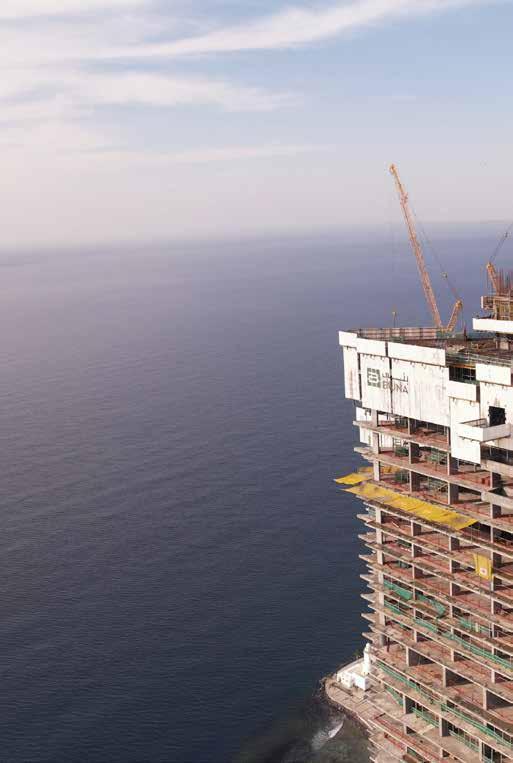
Expertly delivering complex projects with precision, performance, and a vision aligned with the Kingdom’s future.
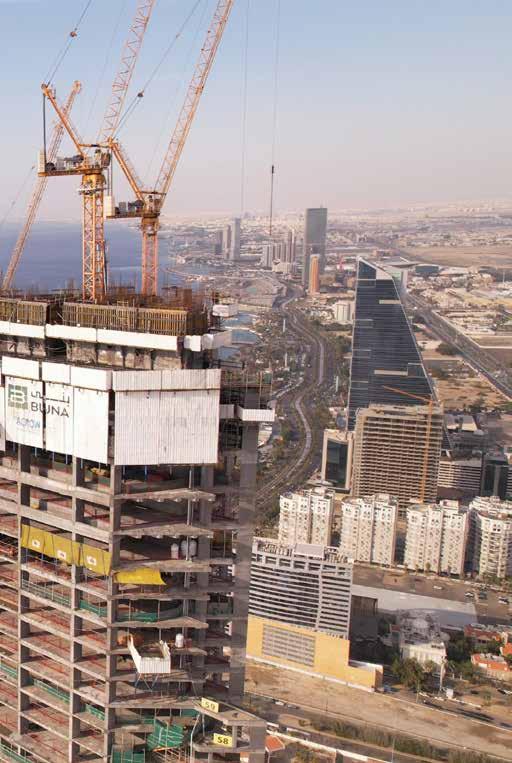
At BUNA Al Khaleej, we don’t just construct buildings, we deliver progress. As a leading General Contractor and Construction Management Services Organization, we specialize in mixed-use developments, highrise towers, industrial and commercial facilities, and complex, high-specification projects.
From groundbreaking to handover, we operate with a laser focus on quality, safety, timeline, and budget. Our integrated design & build capabilities ensure seamless project execution, while our experienced teams manage every detail with unmatched rigor.
Aligned with Vision 2030, BUNA is proud to contribute to the sustainable growth and transformation of Saudi Arabia through innovative, resilient, and future-ready infrastructure.
Partner with BUNA, where ambition meets execution.
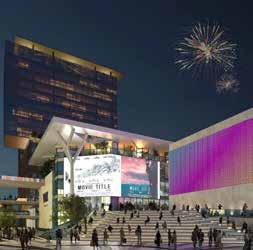
To explore our capabilities or connect with our team visit.
www.buna.sa
info@buna.sa
+966 12 658 6686
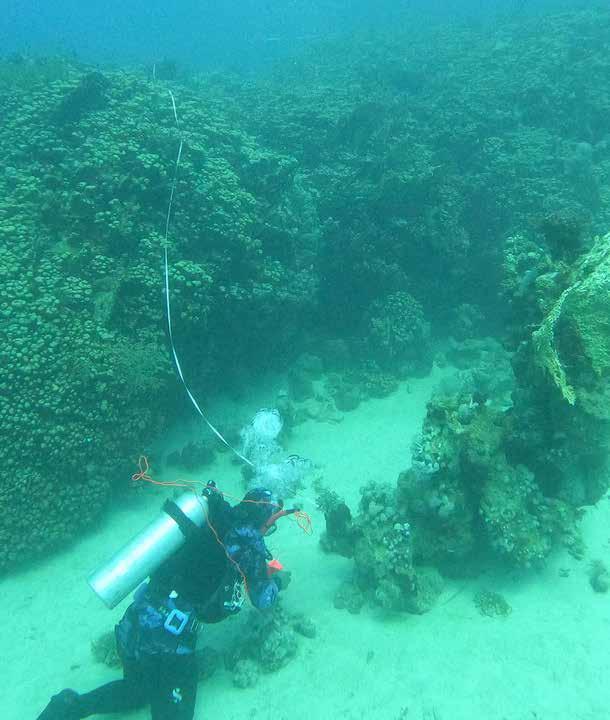
800-YEAR-OLD CORAL COLONY DISCOVERED AT AMAALA MAY REDEFINE MARINE SCIENCE AND TOURISM EXPERIENCES.
ed Sea Global (RSG), the visionary developer behind regenerative tourism destinations The Red Sea and AMAALA, has announced the discovery of a massive coral colony in the Red Sea, located in the waters surrounding AMAALA on Saudi Arabia’s northwestern coast.
The coral — identified as part of the Pavona genus — rivals the size of the current world record holder: a 32 x 34-meter colony discovered in the Pacific. This newly discovered coral spans approximately 26 to 36 meters in length and 21 meters in width — roughly the length of six to eight London buses placed end to end. It is now considered the largest coral colony of its type ever documented in the Red Sea.
Poised to become a major attraction for divers visiting AMAALA, the coral offers a rare underwater spectacle. In line with RSG’s sustainability-first approach, visitor access will be managed responsibly to ensure minimal environmental impact while still allowing guests to experience the extraordinary biodiversity of the Red Sea.
“The discovery of a coral of such extraordinary dimensions demonstrates the ecological significance as well as the pristine beauty of the Red Sea,” said Ahmed Alansari, RSG’s Head of Environmental Protection and Regeneration.
“These giants act as time capsules, holding clues about oceanic changes over centuries. Studying their survival may help us understand how to better protect reefs globally.”
Determining the age of such a colossal coral is challenging due to the invasive nature of precise measurement techniques. However, using size estimates, Pacific growth rate comparisons, and a 3D photogrammetry model stitched from over 3,000 images, researchers estimate the colony to be between 400 and 800 years old. If accurate, the coral began growing around the era of Genghis Khan, the rise of Islamic states in Southeast Asia, and the signing of the Treaty of Paris that ended the First Hundred Years’ War.

Larger than six London buses end to end
The age estimate would make this coral older than the current largest known coral (300–500 years old) recently found in the Solomon Islands. Further research in collaboration with KAUST (King Abdullah University of Science and Technology) will help determine a more precise age and examine the coral's environmental resilience.
Corals in the Red Sea have long been admired for their hardiness — naturally adapted to warmer waters and higher salinity over time. This specific colony will now be closely monitored and studied for clues to its longevity and tolerance to environmental stressors.
Rhonda Suka and Sylvia Jagerroos, the two RSG scientists who discovered the coral, are spearheading its documentation and mapping.
“Finding such an invaluable specimen was a truly mind-boggling experience,” said Suka. “Its resilience gives us hope for the continued survival of corals in the Red Sea.”
Jagerroos added, “A coral this massive is incredibly rare — like stumbling upon a northern white rhino in the wild. You know they exist, but seeing one firsthand is almost unbelievable.”
The find has been submitted to the global “Map the Giants” project, which catalogs giant coral structures over five meters in size. It’s the second such submission from RSG in recent months, underscoring the Red Sea’s ecological importance.
A key attraction for divers at AMAALA
The discovery comes as AMAALA prepares to welcome its first guests later this year. The destination aims to become the world’s most comprehensive health and wellness retreat, launching with over 1,400 hotel rooms across eight luxury resorts. Guests will enjoy worldclass wellness programs and immersive experiences, including rare opportunities to explore untouched marine environments.
This milestone follows the success of The Red Sea destination, which began welcoming guests in 2023 and now hosts five open hotels.
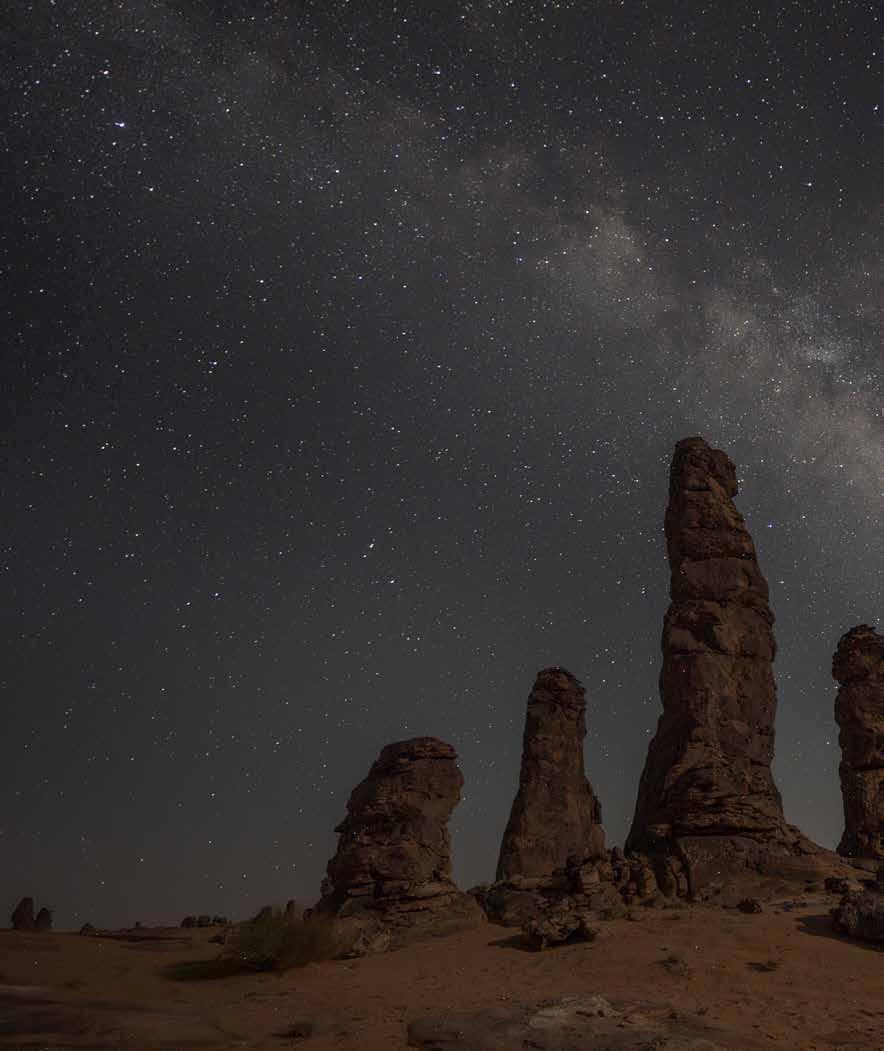
Saudi Projects interviews Rita Zeineddine, Executive Director at Red Sea Global, on leading world-class, sustainable developments aligned with Vision 2030.
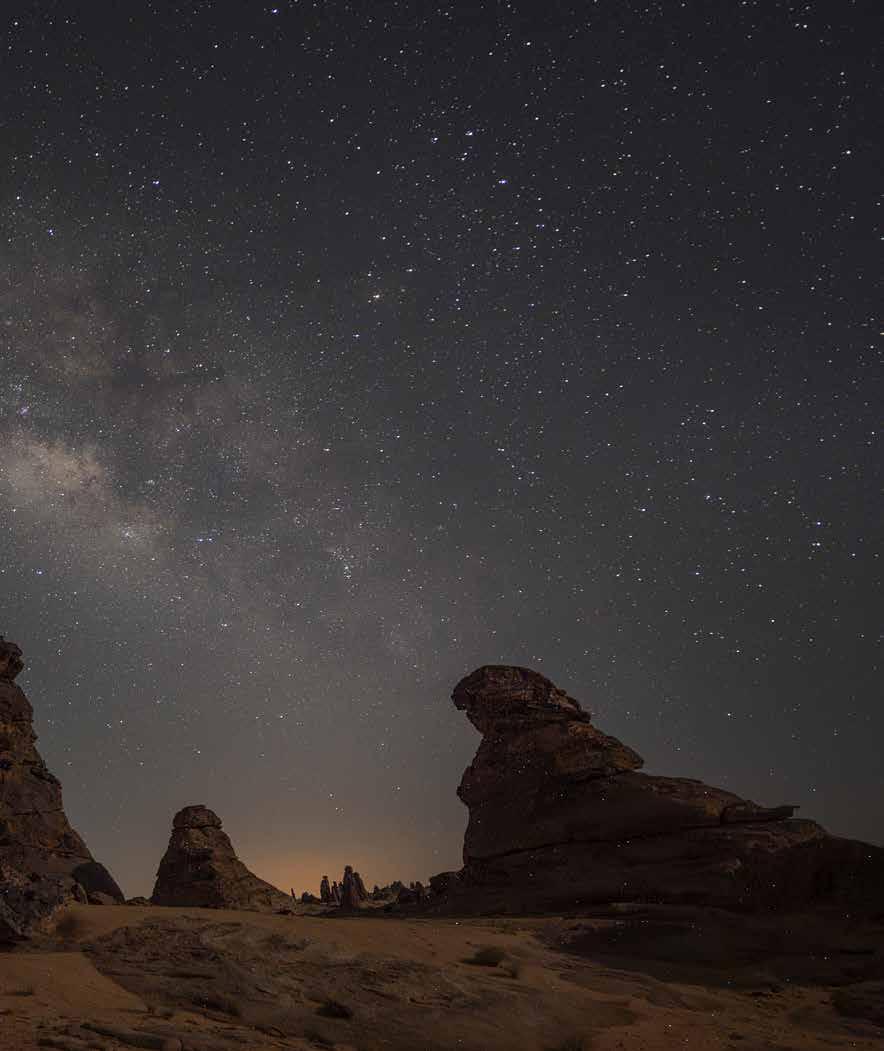
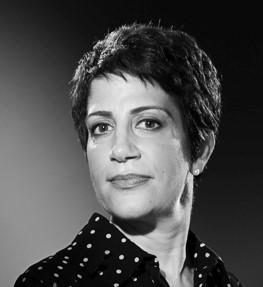
ith a career that spans over two decades in the architecture and engineering sectors, Rita Zeineddine is a dynamic leader shaping some of Saudi Arabia’s most ambitious and sustainable developments. As Executive Director at Red Sea Global, she oversees a multidisciplinary team driving the design and delivery of landmark projects such as The Red Sea Project and AMAALA—initiatives that are redefining luxury tourism and ecological stewardship in the Kingdom. Known for her visionary approach and commitment to sustainable innovation, Rita brings together technical excellence, cultural sensitivity, and bold creativity in every endeavor. Her leadership continues to inspire a new era of development aligned with Vision 2030.
SAUDI PROJECTS: As Executive Director at Red Sea Global, how would you describe your leadership philosophy when managing
large-scale, multidisciplinary teams?
RITA ZEINEDDINE: My leadership philosophy centers on empowerment, alignment, and accountability. I focus on fostering collaboration across disciplines, ensuring clarity of purpose, and creating a culture of trust and performance. By supporting teams with clear direction and space to lead, I enable efficient decision-making and high-quality delivery in complex, large-scale environments.
SAUDI PROJECTS: What have been some of your most rewarding challenges in leading architectural and engineering innovation at Red Sea Global?
RITA ZEINEDDINE: One of the most rewarding challenges has been leading innovation while meeting high sustainability and quality standards in complex, remote environments. From pioneering modular solutions to integrating off-grid infrastructure, these
experiences have strengthened my focus on agile, cross-disciplinary collaboration to deliver impactful, future-focused outcomes.
SAUDI PROJECTS: How do you balance creative ambition with technical execution across the diverse portfolio of projects under your direction?
RITA ZEINEDDINE: I balance creative ambition with technical execution by fostering early and continuous collaboration between design and technical teams. At Red Sea Global, we begin by aligning all disciplines around a clear vision, then translate that vision into deliverable outcomes through structured processes and technical rigor. A great example is Laheq Island, which was just announced last week. It reflects bold, design-led ambition while addressing the complex realities of remote development, environmental stewardship, and integrated infrastructure. This balance is achieved through disciplined coordination, agile problem-solving, and a shared commitment to excellence across all teams.
SAUDI PROJECTS: Red Sea Global is known for its commitment to sustainability. How does your team integrate environmental responsibility into every stage of design and development?
RITA ZEINEDDINE: At Red Sea Global, sustainability is embedded from the outset. We integrate it through early environmental assessments, passive design, renewable systems, and strict KPIs, ensuring every stage of development aligns with our commitment to environmental stewardship and long-term impact.
SAUDI PROJECTS: What role does smart technology and digital design play in shaping the next generation of tourism and infrastructure projects in the Red Sea region?
RITA ZEINEDDINE: Smart technology and digital design play a pivotal role in shaping nextgeneration tourism and infrastructure in the Red Sea region. At Red Sea Global, we leverage tools like BIM, digital twins, and AI to optimize design, improve construction efficiency, and enhance sustainability. These technologies also enable smarter guest experiences and infrastructure operations, aligning with Vision 2030 and

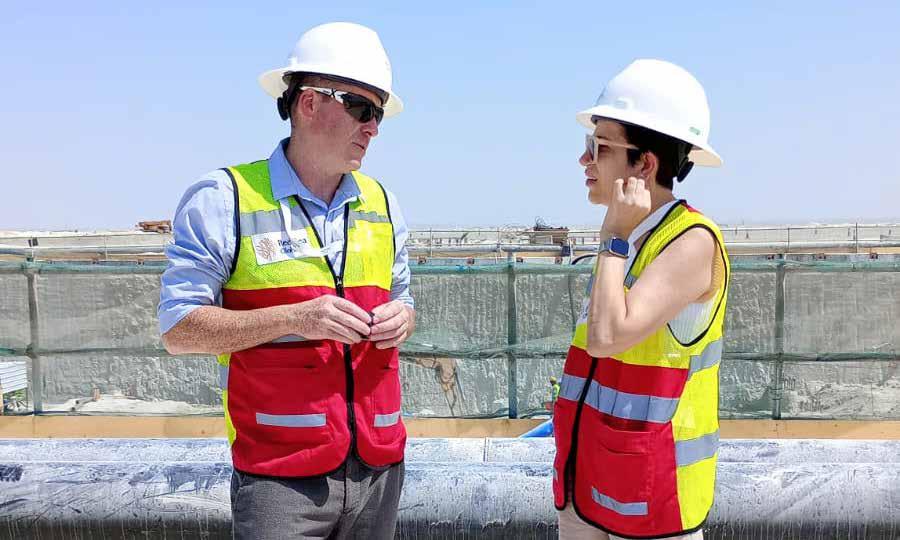
ensuring our developments are future-ready, resilient, and environmentally responsible
SAUDI PROJECTS: Can you share a few highlights from the major projects you’ve been directly involved in, such as The Red Sea Project or AMAALA?
RITA ZEINEDDINE: Over the past five years at Red Sea Global, I’ve led several iconic developments, including Laheq Island, where I managed the design of over 20 luxury assets, balancing sustainability and architectural excellence. At Southern Dunes, I oversaw the delivery of the region’s first desert resort powered by renewable energy, integrating complex logistics and engineering. I also led the P07 package on Shura Island, featuring Grand Hyatt, Intercontinental, and SLS hotels— successfully coordinating multidisciplinary teams to meet brand, sustainability, and schedule requirements. These experiences demonstrate my ability to deliver complex, highprofile projects with innovation and precision
SAUDI PROJECTS: What distinguishes the architectural and design language
of Red Sea Global from other largescale developments in the region?
RITA ZEINEDDINE: Our commitment to contextual sensitivity, sustainability, and innovation. Rather than imposing generic or monumental forms, we prioritize architecture that responds to the land—whether it's integrating with natural topography, respecting cultural heritage, or using locally sourced, sustainable materials.
Our projects, such as Laheq Island and Southern Dunes, demonstrate a design-first approach rooted in minimal environmental impact and guest experience, with architecture that complements rather than competes with the landscape. We also embrace cutting-edge design tools, digital twins, and parametric modeling to optimize performance and enhance constructability, while collaborating with globally recognized consultants and local partners to achieve excellence that is both globally benchmarked and regionally grounded.
SAUDI PROJECTS: How do you ensure that cultural heritage and the natural
environment are preserved while designing future-facing infrastructure?
RITA ZEINEDDINE: At Red Sea Global, preserving cultural heritage and the natural environment is a foundational principle embedded into every stage of our design and development process. We begin with in-depth site assessments, cultural mapping, and ecological studies to understand the land before any design work begins. Our designs are then guided by this context—ensuring that development avoids sensitive habitats, celebrates local heritage, and integrates traditional architectural language in a contemporary way.
We apply sustainable practices such as lowimpact construction, regenerative landscaping, and responsible material sourcing, while also working closely with environmental scientists, cultural advisors, and local communities. This holistic approach allows us to create futureready infrastructure that not only respects but also enhances the identity of the Red Sea region.
SAUDI PROJECTS: In your view, what trends are redefining architecture and
engineering in Saudi Arabia today?
RITA ZEINEDDINE: Saudi Arabia is experiencing a transformative period in architecture and engineering, driven by Vision 2030, where several key trends are redefining the industry:
Sustainability as a Standard: Environmental responsibility is no longer optional— it’s embedded in every project, from zero-carbon resorts to regenerative masterplans like those at Red Sea Global.
Digital Integration: The rise of BIM, digital twins, and AI-driven design tools is reshaping how we plan, execute, and manage assets across their life cycle, enhancing precision and collaboration.
Hyper-Customization and Luxury Experiences: Tourism-focused developments demand architecture that is both bespoke and immersive—delivering authenticity, cultural relevance, and world-class service.
Modular and Off-site Construction: Accelerated timelines and remote site access have made prefabrication, like bathroom pods or full modular villas, a game-changer in large-scale developments.
Cultural and Ecological Sensitivity: Projects now prioritize harmony with heritage and landscape—something we’ve championed through projects like Laheq Island and Southern Dunes
SAUDI PROJECTS: How do you envision Red Sea Global influencing the Kingdom’s broader design and development standards over the next decade?
RITA ZEINEDDINE: Red Sea Global is setting a new national benchmark by demonstrating that world-class development can coexist with environmental stewardship, cultural sensitivity, and cutting-edge innovation. Over the next decade, I envision RSG influencing the Kingdom’s broader design and development standards through:
Sustainability Leadership – Pioneering zero-carbon, regenerative tourism models that can be scaled across Saudi Arabia.
Design Excellence – Elevating architectural quality by embedding global best practices while celebrating local identity.
Innovation-Driven Delivery – Using smart technology, modular construction, and digital design tools as standard practice.
Human-Centric Planning – Shifting the focus toward experiential, walkable, and wellness-driven environments.
Capacity Building – Creating a ripple effect in talent development, pushing consultants and contractors to upskill and innovate.
Through these pillars, RSG is not just delivering projects—it’s shaping the future DNA of Saudi development.
SAUDI PROJECTS: As a woman in a highimpact leadership role in the construction and engineering sector, what advice would you give to the next generation of female architects and engineers?
RITA ZEINEDDINE: As a woman in a leadership role, my advice to the next generation of female architects and engineers is to embrace your unique perspective, seek continuous learning and mentorship, and build resilience and confidence. Create supportive networks and lead with integrity and empathy. By leveraging our strengths and fostering inclusivity, we can shape the future of architecture and engineering in impactful ways.
SAUDI PROJECTS: Are there any mentorship or talent development programs you’re particularly proud of within Red Sea Global’s design and engineering divisions?
RITA ZEINEDDINE: At Red Sea Global, we’re proud of our structured mentorship program, which pairs emerging talent with senior leaders to foster career growth and leadership skills. We focus on collaborative learning, crossfunctional workshops, and talent development, emphasizing diversity and inclusion. Our partnerships with universities and professional organizations also bring fresh talent and provide real-world experience on large-scale projects. These initiatives ensure continuous growth, empowerment, and a future-driven culture within our design and engineering divisions
As Executive Director at Red Sea Global, I lead with a philosophy grounded in empowerment, collaboration, and accountability, driving
the successful delivery of landmark tourism and infrastructure projects in line with Vision 2030. My work spans Laheq Island, Southern Dunes, and the P07 package on Shura Island, where I've steered multidisciplinary teams to deliver sustainable, design-led destinations despite complex logistical and environmental challenges.
I champion a holistic approach that balances creative ambition with technical execution, integrating smart technologies like BIM and digital twins to enhance efficiency, sustainability, and innovation. Red Sea Global’s commitment to contextual, environmentally responsible architecture sets it apart in the region, with every design rooted in cultural heritage, ecological sensitivity, and future-forward thinking.
Through active mentorship, a focus on talent development, and a strong belief in inclusive leadership, I aim to empower the next generation—especially women in architecture and engineering—to lead with confidence and purpose. Together, we’re not only building world-class destinations but reshaping the Kingdom’s development standards for generations to come.
24,000 workers trained remotely for Shell’s major Pearl GTL turnaround in Qatar.
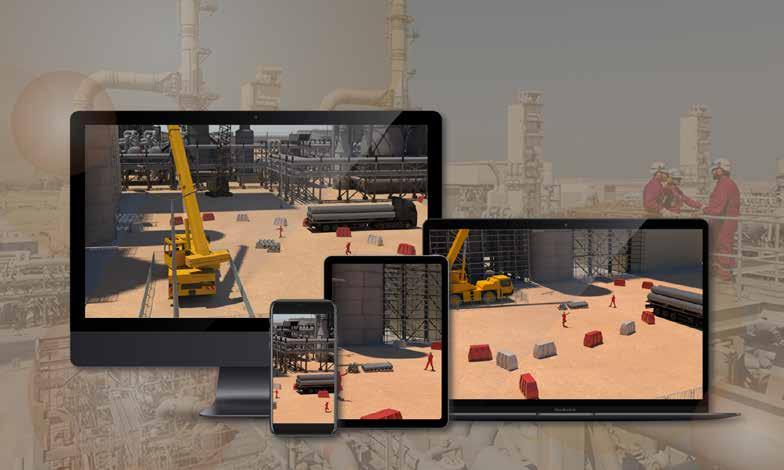
Qatar International Safety Centre (QISC), in collaboration with Intelligent Seas Group (ISG), has successfully delivered a landmark digital training initiative for Shell’s Major Turnaround 4 (MTA4) project at the Pearl GTL facility in Ras Laffan.
This large-scale digital learning solution trained 24,000 individuals, far surpassing the original target of 15,000 and played a critical role in preparing Shell’s international contractor workforce for deployment.
The advanced learning platform was created to support Shell’s global efforts to enhance workforce competency and ensure readiness for high-stakes operational environments.
By leveraging scalable digital tools and industry expertise, QISC and ISG provided a future-ready training model that delivers consistency, efficiency, and measurable results.
QISC and ISG were tasked with designing, hosting, and managing a Learning Management System (LMS) that could deliver engaging, accessible, and multilingual training content. The platform was developed with frontline workers and supervisors in mind, offering vital onboarding material before workers arrived in Qatar. This not only reduced local training bottlenecks but also ensured a uniform knowledge base across all contractors.
The system featured real-time analytics, multi-language support (including English and Hindi), and compatibility with all devices, especially smartphones. This enabled learners across the globe to complete mandatory training from their home countries, drastically improving efficiency and minimizing delays.
The training suite was designed as a blended learning experience, merging decades of operational insight with cutting-edge digital education. Self-paced, interactive, and highly immersive eLearning modules were built to meet Shell’s stringent safety and competency standards.

Tim Love, Founder of Intelligent Seas Group, explained: "The challenge was to develop toptier eLearning within a compressed timeline, optimized for multilingual learners and mobile devices. We focused on maximizing screen space and designing intuitive content that didn’t sacrifice engagement or impact."
The program’s success hinged on creating digital modules that were just as effective on smartphones as they were on larger screens, without compromising on the immersive learning experience. This was crucial, as most overseas workers relied on mobile devices to access training.
Einar Johannesson, Business and Operations Manager at QISC, commented: "We’re proud
of what we achieved with ISG and Shell. This solution not only meets Shell’s high standards, it redefines accessibility and effectiveness in safety training. Our knowledge of the Pearl GTL site and ISG’s tech innovation made this possible, even under tight timelines."
QISC’s long-standing relationship with Shell and intimate knowledge of the site enabled the team to customize the training program with precision. ISG’s digital expertise then brought the vision to life, ensuring that workers could access reliable, user-friendly training content no matter where they were.
The project was delivered on time, to full specification, and with zero system downtime. The LMS’s intuitive interface, multilingual support, and high-quality course content received widespread praise from Shell, its contractors, and the learners themselves.
Initially scoped for 15,000 users, the system
ultimately trained 24,000 individuals, demonstrating QISC and ISG’s ability to scale and adapt to evolving project demands. This overachievement highlights their joint commitment to innovation, quality, and client satisfaction.
By delivering this groundbreaking training solution, QISC and ISG have positioned themselves as trusted partners in the digital transformation of safety and workforce training. Their approach represents a powerful model for how technology and expertise can converge to enhance operational readiness across high-risk, high-complexity industries.
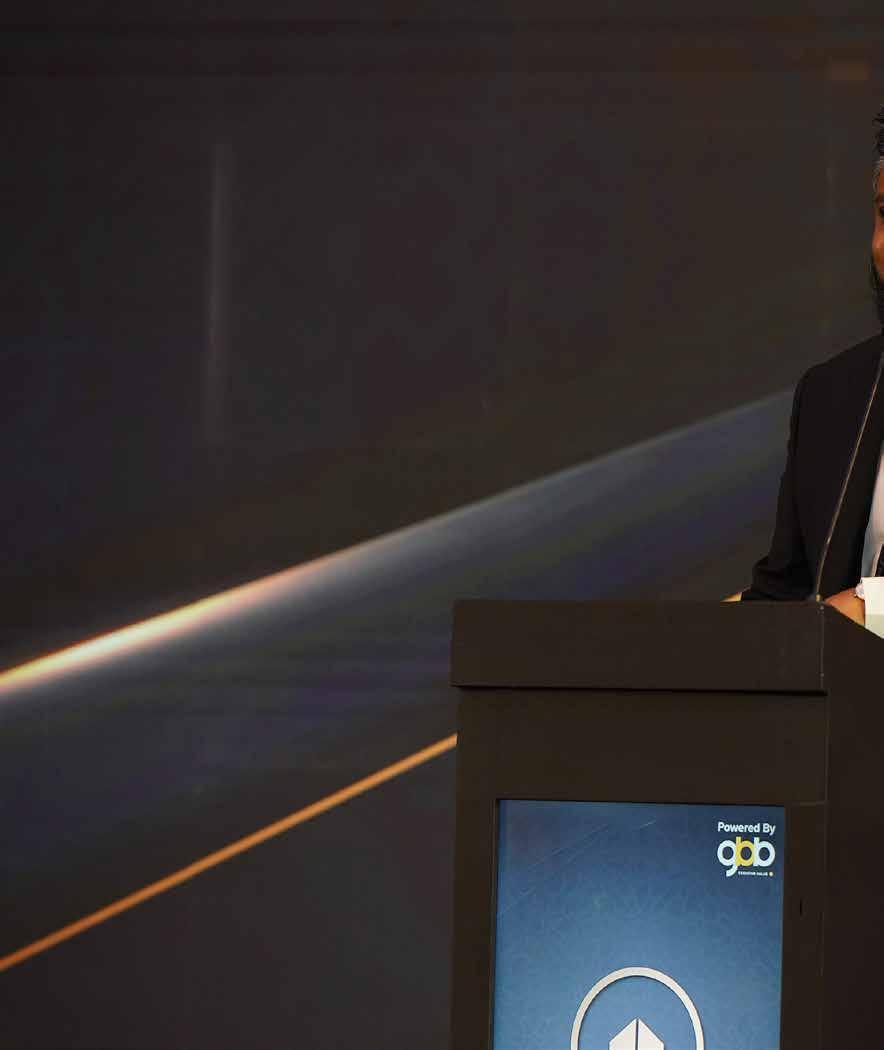
Global real estate leaders converge for innovation, strategy, and sustainable growth.
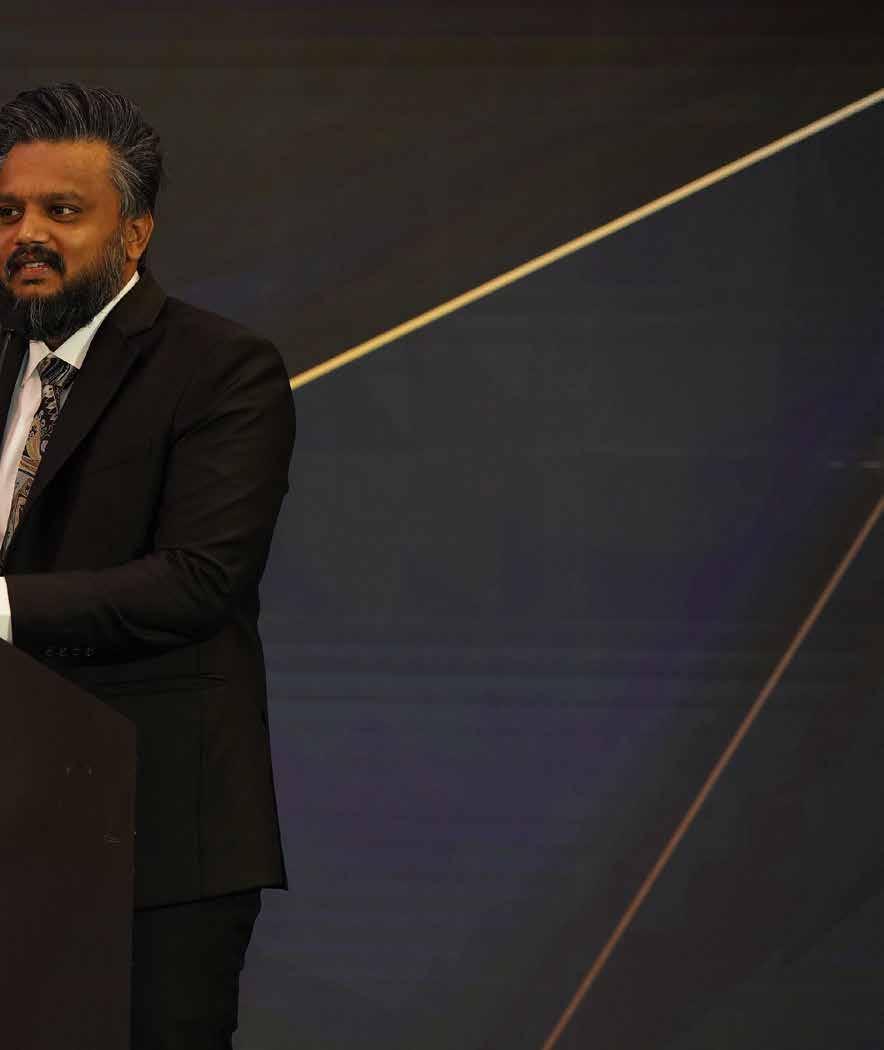
The 17th Real Estate Development Summit (REDS), Europe Edition, is set to take place on 25 to 26 June 2025 at the Lisbon Congress Centre, Rio Pavilion, Portugal. Organized by GBB Venture, this invite-only summit brings together decision-makers from across the globe, focusing on innovation, strategic partnerships, and investment opportunities in Saudi Arabia’s evolving real estate sector.
Ravi Kumar Chandran, Founder and Managing Director of GBB Events, is a seasoned event strategist with a passion for curating business ecosystems where meaningful partnerships flourish. With a rich legacy in creating industryspecific platforms, Ravi has positioned REDS as a must-attend summit for real estate influencers seeking to unlock the Middle East's potential, especially Saudi Arabia’s.
This edition promises to take the focused platform a notch higher with over 120 international solution providers, over 200 decision makers representing some of the top projects in Saudi Arabia and a stellar speaker line-up addressing some of the most exciting subjects and creative ideas.
Ron Bakker, Founding Partner – PLP Architecture will present EDGE, Amsterdam a unique project intelligently connecting people, creating a truly inspiring workplace. Ideas that can change the way greenery can contribute to real estate projects will be presented by Pablo Vidarte, CEO – BIOO. While Dott. Geol. Tetyana Kovalenko – CEO, Elite Stone Group will share how marble paves the way for sustainable building in Saudi Arabia and ME.
2 of Saudi Arabia’s notable real estate firms, OSUS and Rafal Real Estate Development Company will both share key presentations

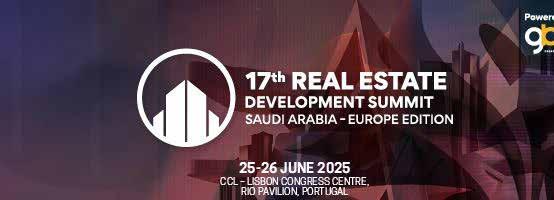
highlighting the industry growth, some key projects and the way forward. Ali Al Ghamdi, Transformation Consultant will represent OSUS while Elias Abousamra, CEO will represent Rafal and share the priorities shaping the industry landscape over the next 18 months.
Harmen de Jong, Regional Partner Head of Consulting at Knight Frank will take the stage to present some very interesting facts and stats on Saudi Arabia’s key market indicators, pipeline projects and trends in the industry. A panel of project heads and experts then


Bassam Boodai – Board Member, Al Mozaini Real Estate and Ahmed Abas – Director, MENA Sports Advisory, EY Parthenon will share their expert opinions on the subject moderated by Tala Michel Issa, Chief Reporter, Arabian Business.
delves into flexibility and adaptability of design and development process to deliver extraordinary projects defining the future of the Kingdom. This panel moderated by Daniel O’Brien, Director of Development at Qiddiya will host Paul Fraser, Director - Cities & Communities KSA - AtkinsRealis, Sanjay Tanwani – Regional Director, AECOM and Al.Motasem B. Attiyah – CEO, Clear Holding Co.
Further shedding light on some iconic projects are a set of most notable design leaders: Maximilian Zielinski – Senior Partner, Foster + Partners, Viggo Haremst – Partner & Design Director, Henning Larsen, Mark Kennedy – Head of Design, Magna – NEOM who will individually share their take on the design process of these futuristic projects. Christos Passas, Director - Zaha Hadid Architects will also be sharing recent work in sustainable high-rise design.
Finally, not to miss the extraordinary mega events and the future outlook of real estate and tourism industries in the Kingdom, Eng. Abdulaziz Al Zamil, CBDO – Tatweer, Dr. Adil Al-Qusadi, Advisor on Strategic Partnerships and International Cooperation - Saudi Arabia, Dr.
While there’s much learning and knowledge sharing anticipated at the summit, there’s also a bit of fun and quality networking in the process. A quick Energizing Session With Technogym gives time to stretch and relax. The highlight dinner is straight out of a storybook. Beginning with a beautiful coastal drive to the venue Arriba, the dinner itself is planned with a breath-taking view of the sea to one side and a fort on the other, it is a great place and time to let loose, enjoy and network in the amazingly charming Portuguese ambience.
Furthermore, the pre-arranged face-to-face meetings with the decision makers provide for undeterred attention to business networking where every individual requirement is prematched to ensure a high-success rate to all the meetings. This signature offering by GBB is a time-tested method to bring together people who mean business and can help build long-term partnerships.
The summit also ends with a delegateonly networking session allowing the
attendees yet more focused time to foster business relationships.
Gain first-hand insights into Saudi Arabia's giga and mega projects
Meet 200+ top owners, developers, operators, architects, designers and 120 global solution providers
Explore real-time business opportunities through pre-scheduled meetings
Experience value for time through a focused decision-makers only platform
With a proven track record of driving results and forging connections, REDS continues to be a leading summit at the intersection of vision, innovation, and opportunity.

ROSHN Group’s Brand Value Tops One Billion Dollars, Becomes Saudi Arabia’s Most Valuable Real Estate Brand.

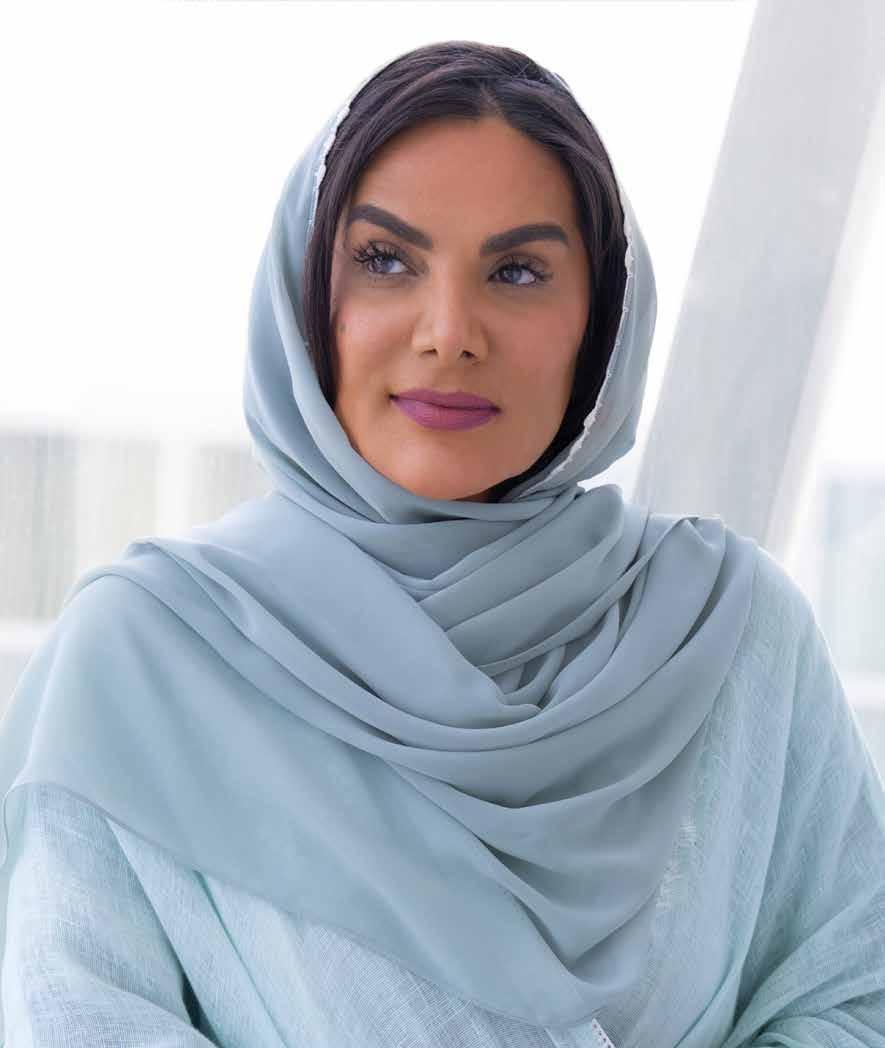
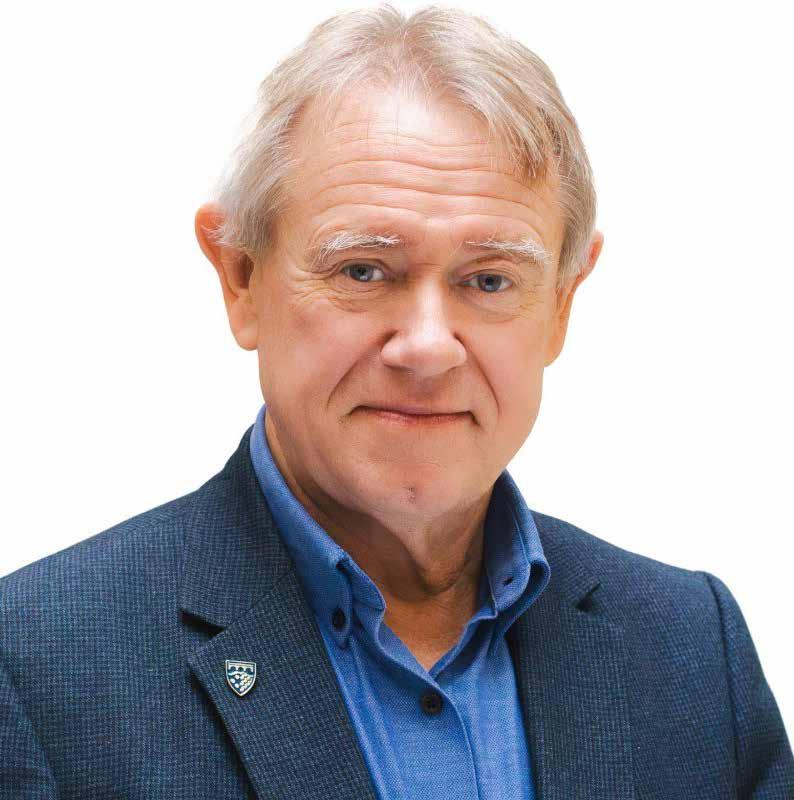
OSHN Group, Saudi Arabia’s leading multi-asset real estate developer and a Public Investment Fund (PIF) company, has been named the Kingdom’s most valuable real estate brand by Brand Finance, the world’s leading independent brand valuation consultancy. With a brand value exceeding $1 billion, ROSHN also ranks as the third most valuable real estate brand regionally and is among the top 20 brands across all sectors nationwide.
Founded less than five years ago with a mandate to contribute to Vision 2030, ROSHN Group has rapidly become a household name synonymous with innovation, sustainability, and integrated urban living. Its success mirrors the exponential growth of Saudi Arabia’s real estate sector, driven by Vision 2030’s emphasis on economic diversification and quality of life enhancements.
ROSHN Group's brand surpasses $1 billion valuation
According to Brand Finance, ROSHN’s brand ascent has been fueled by a bold new identity and strategic expansion into sectors such as education, healthcare, entertainment, and sports. Notably, ROSHN Group is constructing two stadiums that will host matches during the 2034 FIFA World Cup in Saudi Arabia—further raising the Group’s profile on the global stage.
“We are proud to see ROSHN crowned as the strongest real estate brand in the Kingdom—an
accomplishment achieved in less than five years,” said Ghada Alrumayan, Group Chief Marketing and Communications Officer at ROSHN Group. “This milestone reflects the success of our expansion strategy and new brand launch, embodying our clear vision and rapid growth as we reinforce the Group’s real estate leadership in Saudi Arabia. This recognition is a result of the growing trust in our brand and the added value we deliver, setting new benchmarks across the real estate sector.”
David Haigh, Chairman and CEO of Brand Finance, commented: “ROSHN Group’s exceptional rise to become Saudi Arabia’s most valuable real estate brand in just five years reflects the power of purposeled strategy and visionary execution. ROSHN Group is reshaping urban living in line with Saudi Vision 2030 through its integrated communities and innovative mixed-use developments, with a focus on sustainability and community investment.”
Brand Finance evaluates more than 6,000 brands annually across all sectors and geographies, providing insights into brand strength and financial value. Its recognition of ROSHN Group marks a pivotal moment for the Kingdom’s real estate industry and highlights ROSHN Group's emergence as a national champion and global contender.
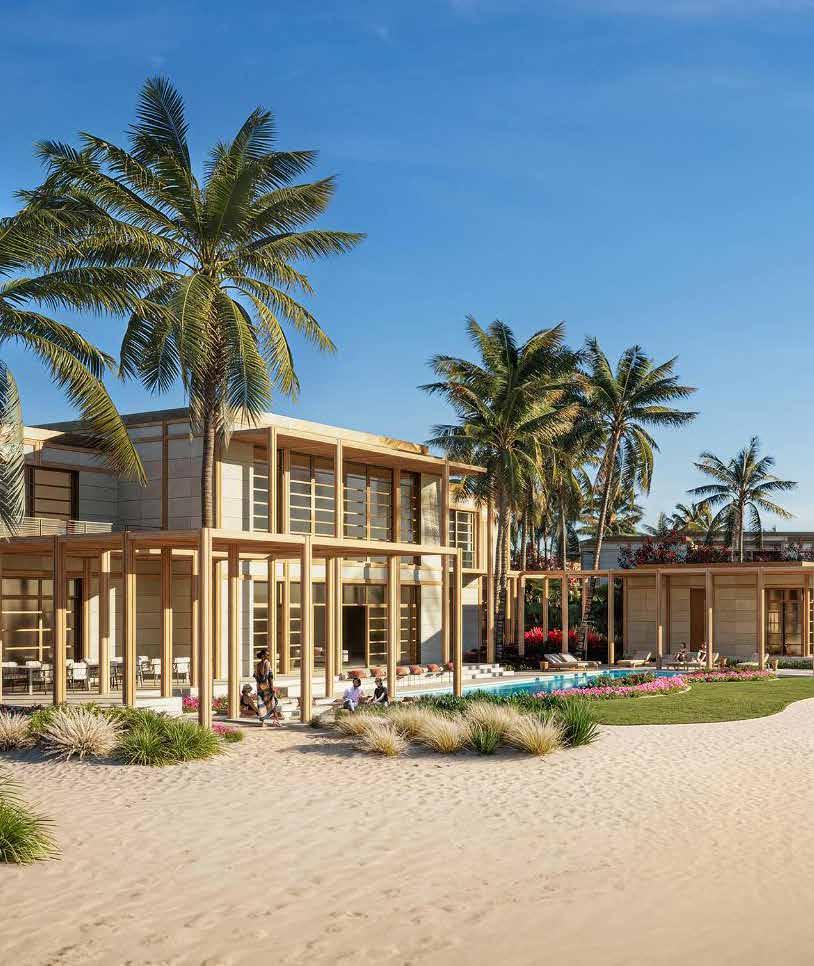
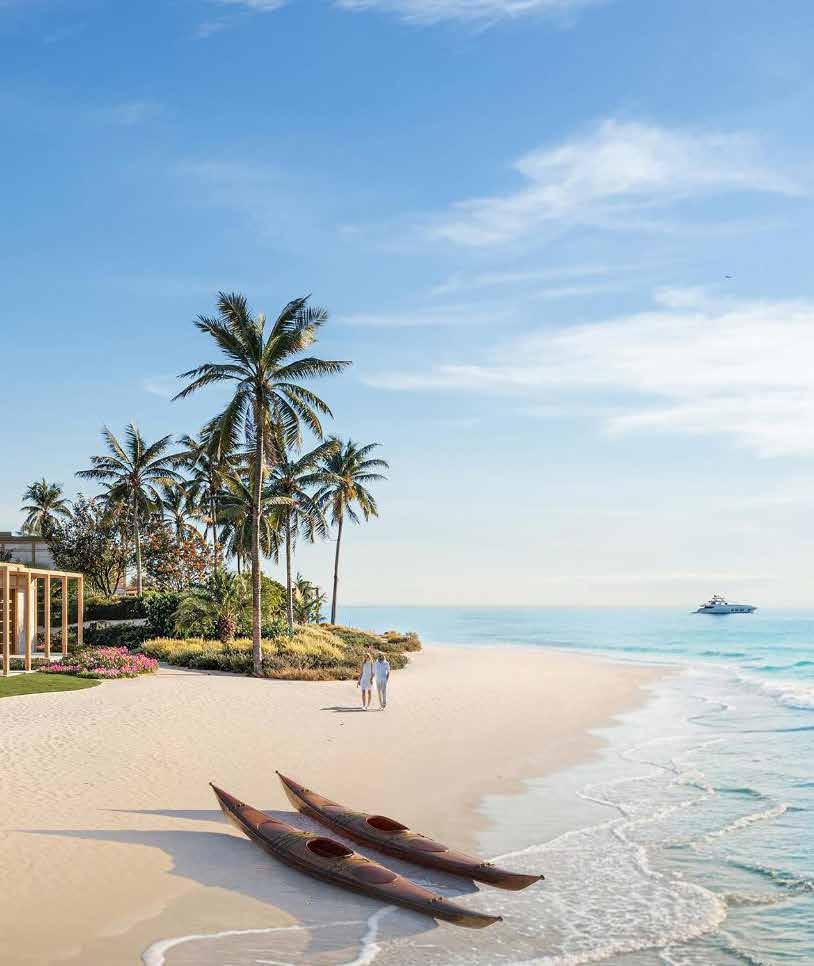

Red Sea Global (RSG), the developer behind The Red Sea and AMAALA, has unveiled Laheq Island, an extraordinary new residential community at The Red Sea. Laheq is the first island in this transformative project to focus on resort-style living and property ownership, bringing the dream of island life to Saudi Arabia.
The unveiling of Laheq marks the first plans revealed beyond Phase One of The Red Sea, which welcomed its first guests in 2023 and now has five hotels and a bustling international airport. Scheduled to open in 2028, Laheq promises an exceptional lifestyle with private ownership supported by world-class hospitality.
John Pagano, Group CEO of Red Sea Global, stated, “Whether it’s for guests visiting or residents who choose to own a piece of The Red Sea, at Laheq they will experience luxury living with an enriching resort community that brings people together and fosters life-long bonds.”
Set in an archipelago surrounded by the world’s fourth-largest barrier reef, Laheq Island is 400 hectares of white sand beaches, vibrant coral reefs, and crystal-clear waters. Private residences draw inspiration from the island’s natural surroundings, blending luxury and sustainability with beautiful, shaded canopies and elegant garden courtyards.
Laheq offers extensive amenities and activities for residents and guests, including a 115-berth marina, sailing and watersports schools, racket club, fitness center, sports field, an 18-hole golf course, and a bustling souq featuring curated products and essentials. Residents and guests can also indulge in premium beach clubs and dining experiences, showcasing local and international cuisine with fresh, high-quality ingredients.
Two luxury resort hotels will complement the private residences, one focusing on wellness and the other on a vibrant, adventurous lifestyle.

John Pagano added, “To date, we have established our reputation as a developer of regenerative tourism destinations, but we are more than that. We are a vertically integrated real estate developer and operator, creating luxury residences to make Saudi Arabia a top destination to live, work, and travel while driving economic diversification and job growth.”
Foster + Partners, one of the world’s leading architectural firms, led the design of Laheq Island. Their concept, called “Forever Garden,” uses abundant plant life and lush greenery. At the heart of Laheq is “The Ring,” an 800-meter diameter structure with luxury apartments, hotels, and retail, encircling the island’s pristine lagoon.
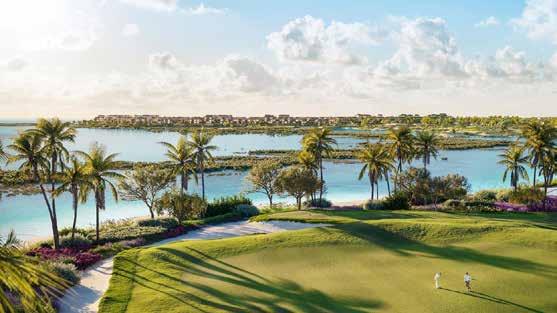

Norman Foster, Founder and Executive Chairman of Foster + Partners, said, “Our vision is grounded in a deep appreciation for Laheq Island’s outstanding natural beauty. Residents and visitors are invited into a serene garden that engages all the senses and offers panoramic views of the magnificent surroundings.”
Laheq’s development reflects RSG’s dedication to regenerative tourism, enhancing natural surroundings rather than just preserving them. RSG has committed to planting 50 million mangroves and protecting coral habitats, with The Red Sea set to become the world’s largest destination powered entirely by renewable energy.
Upon full completion in 2030, The Red Sea will include 50 resorts, 8,000 hotel rooms, and over 1,000 residential properties across 22 islands and six inland sites, all easily accessible through Red Sea International Airport.
Laheq is a key part of RSG’s growing residential portfolio, managed by Red Sea Residences.
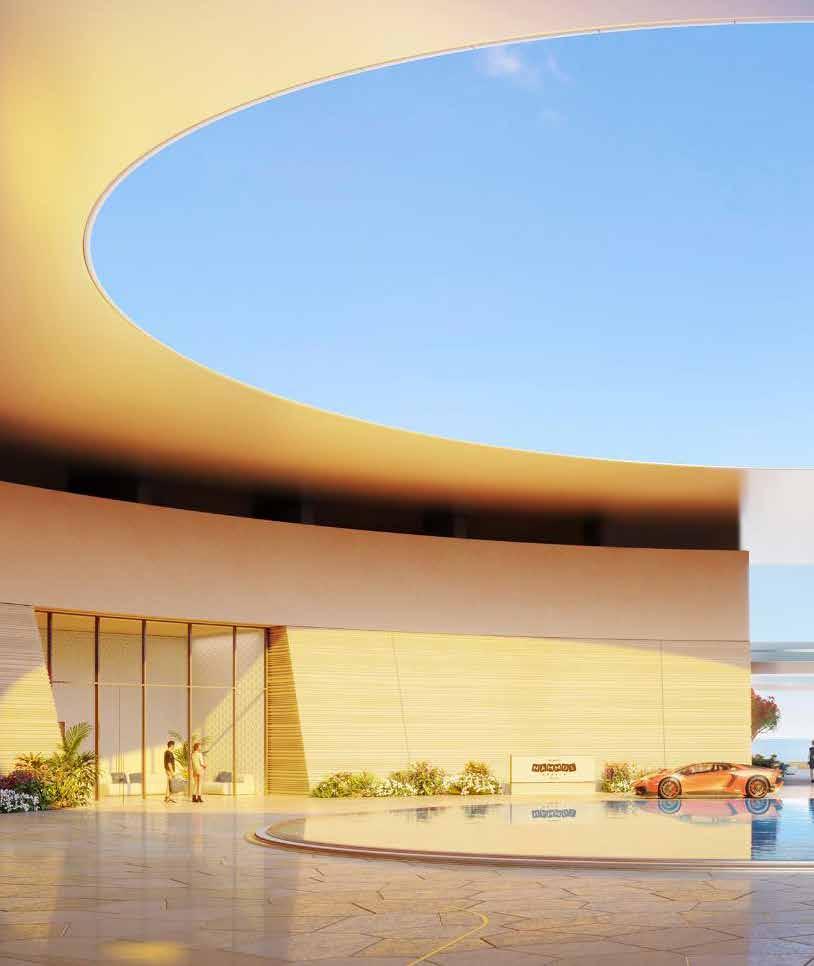
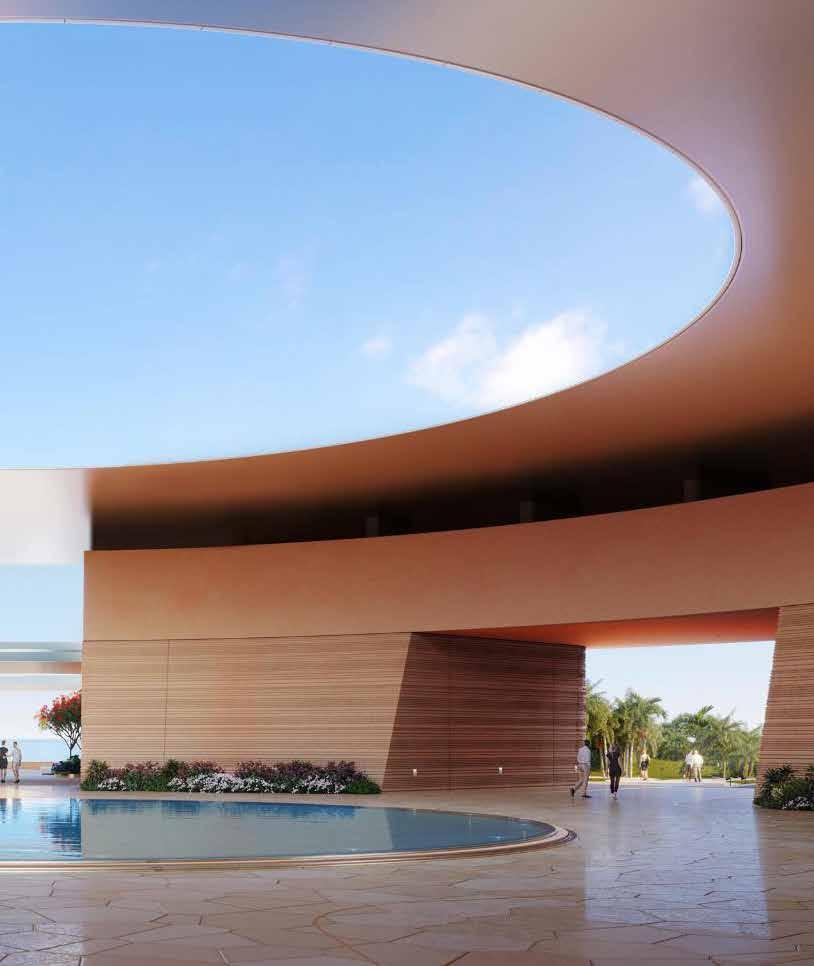
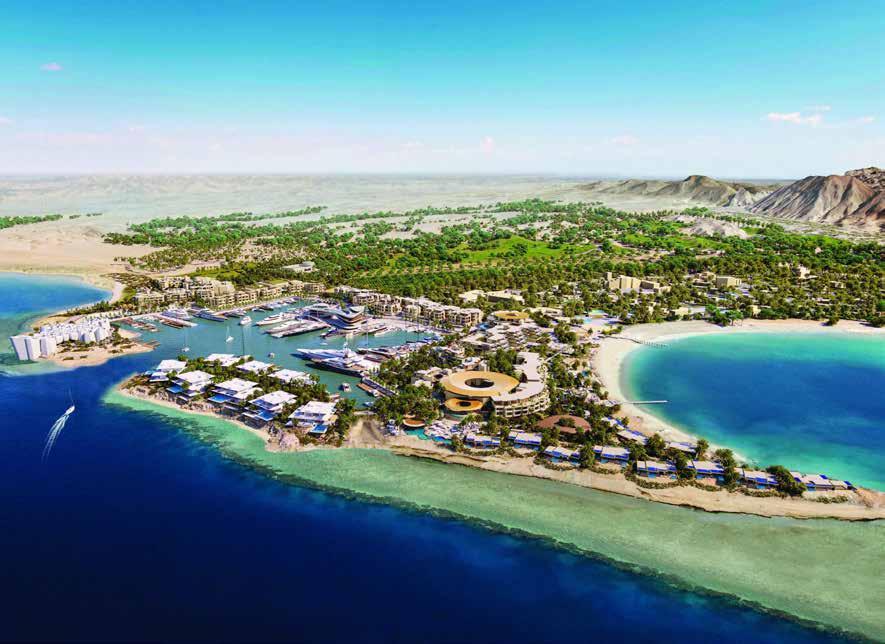
Red Sea Global (RSG), the developer behind the regenerative tourism destinations AMAALA and The Red Sea, has announced Nammos Resort AMAALA, an iconic new benchmark for luxury living and hospitality in the Red Sea region. This project marks Nammos Hotels & Resorts’ first venture outside of Greece, bringing its iconic Cycladic elegance and world-class hospitality to Saudi Arabia.
Located in the picturesque Triple Bay, the resort will offer sweeping ocean and Hijaz Cove views when it opens later this year. Nammos Resort AMAALA promises an unparalleled experience with sophisticated design, exceptional amenities, and a seamless fusion of Mykonian and Hijazi influences.
As the second resort under the Nammos Hotels & Resorts portfolio and part of ADMO Lifestyle Holding, a joint venture between Alpha Dhabi Holding and Monterock International, this expansion aligns perfectly with ADMO’s vision of redefining luxury dining and lifestyle experiences.
“This project represents a milestone for both Red Sea Global and ADMO Lifestyle Holding. We are proud to introduce Nammos Resort AMAALA as one of eight resorts opening in AMAALA’s first phase,” said John Pagano, Group CEO of Red Sea Global.
The property features 110 ocean-view keys and 20 branded residences overlooking the AMAALA Marina and Corallium Marine
Life Institute. It offers a luxury spa, stateof-the-art fitness center, and a Children’s Club for family-friendly experiences.
Designed by Foster + Partners, the resort’s exterior reflects traditional Hijazi architecture, while interiors by Lazaro Rosa Violan Studio (Spain) and Elastic Architects (Greece) embrace the timeless elegance of Mykonos’ Cycladic style. Signature elements include Terrazzo flooring, textured walls, archways, and a refined color palette of aquamarine, white, and gold, complemented by soft marble and tarnished gold accents.

The property includes four exceptional dining venues:
Horizon Bar with Red Sea sunset views
Nammos Restaurant
Nalu Restaurant, blending Latin American and Asian flavors, and
Omnia Restaurant, featuring a rotating lineup of guest chefs and culinary brands
Located on the exclusive Hijaz Island, the beachfront Nammos Restaurant AMAALA is accessible by boat and promises ultimate privacy with luxurious cabanas and an infinity pool that seems to float over the Red Sea.
Petros Stathis, Chairman of Nammos World and Vice Chairman of ADMO Lifestyle Holding,

shared: “This milestone marks a full-scale, all-encompassing resort experience in one of the world’s most anticipated luxury destinations. We are honored to be part of this extraordinary journey and look forward to the remarkable chapters ahead at Red Sea.”
Sanjay Nandi, CEO of ADMO Lifestyle Holding, added: “Nammos Resort AMAALA is a significant milestone in ADMO’s global expansion, reinforcing our commitment to luxury and exceptional experiences in the premium hospitality sector.”
Triple Bay, the first masterplan of AMAALA, will welcome its first guests in 2025, featuring 1,400 keys across eight hotels.
Upon full completion, AMAALA will offer:
Approximately 4,000 hotel rooms in 30 hotels
1,200 luxury residential villas, apartments, and estate homes
Vibrant marinas, high-end retail, fine dining, wellness facilities, and recreational Amenities
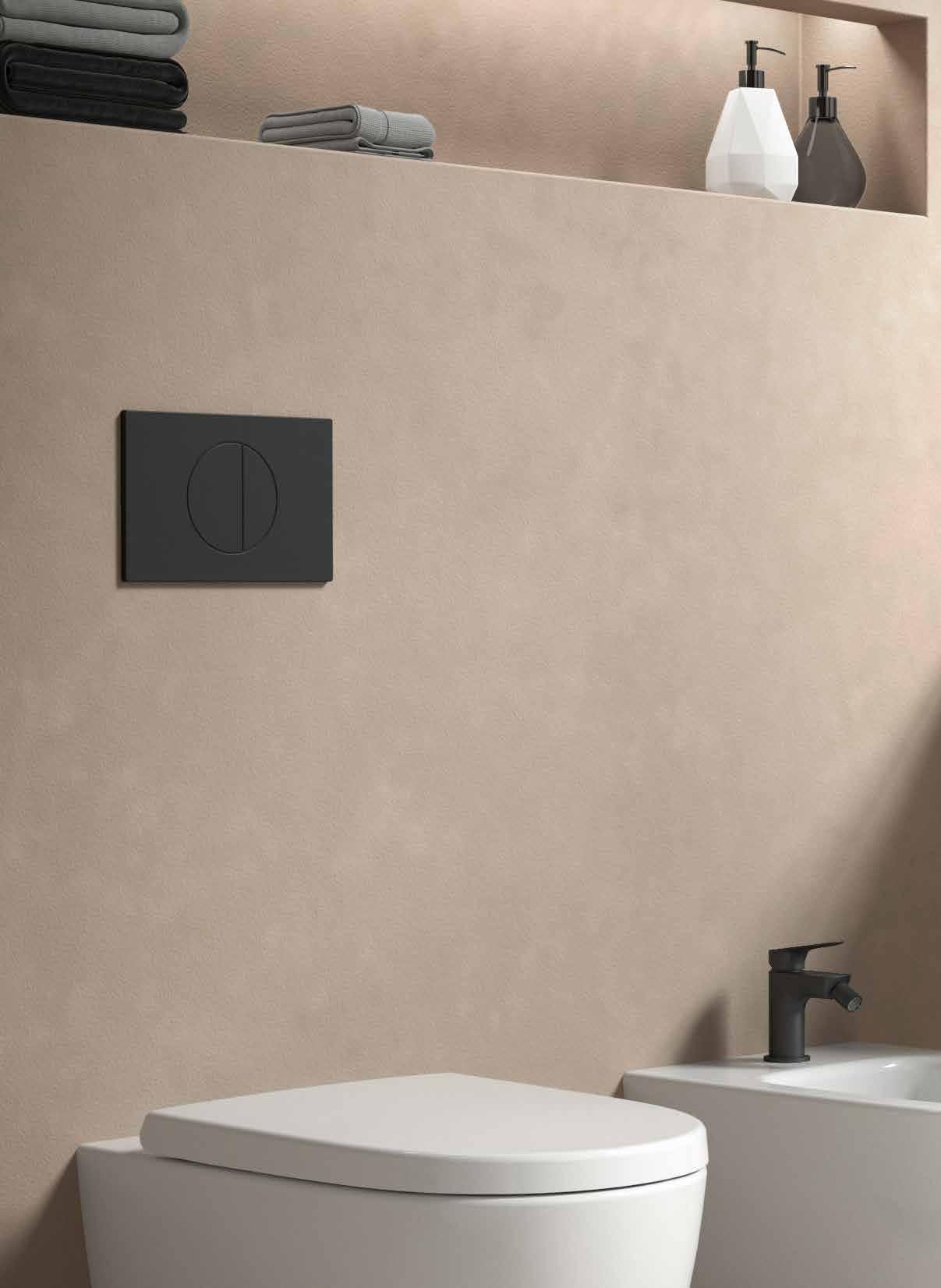
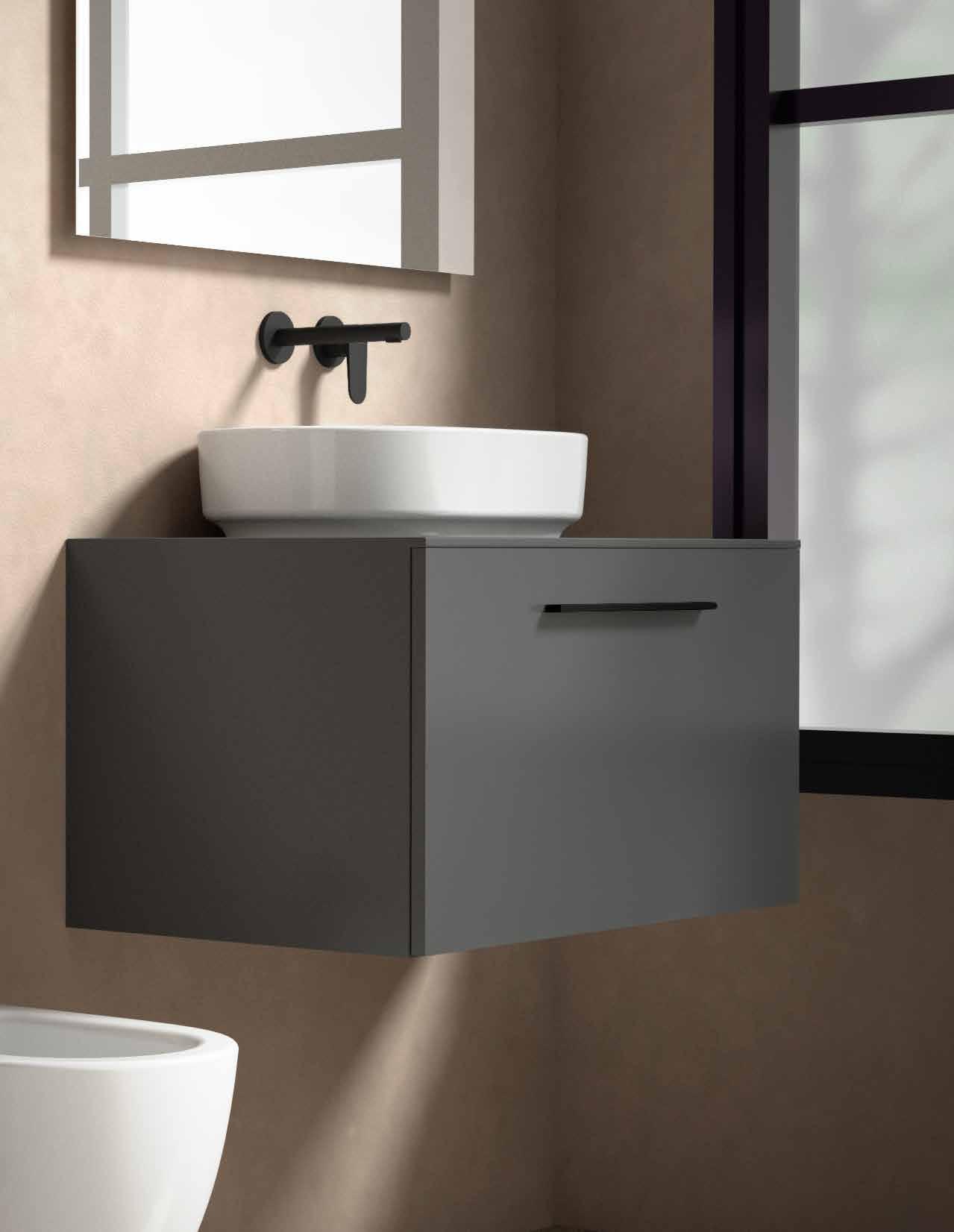
HydroTwist® uses just 4.5 liters per flush
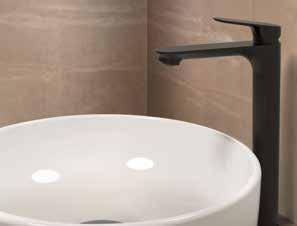
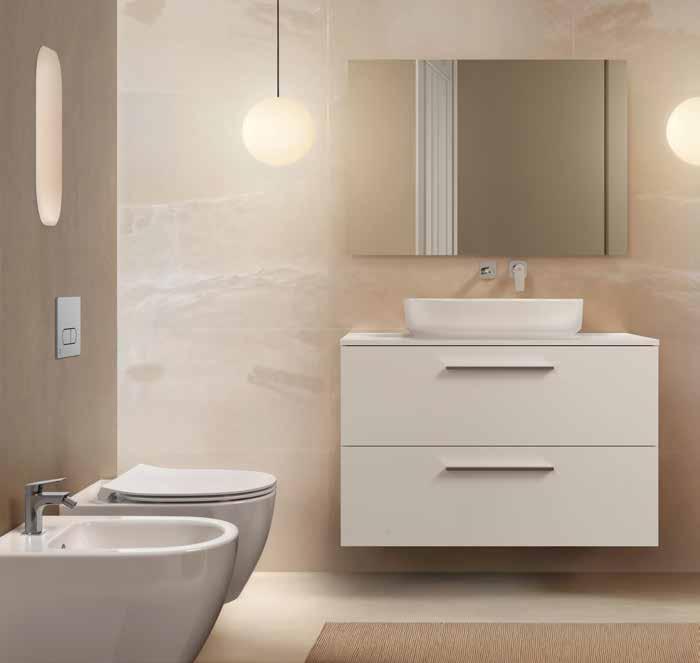
Ideal Standard, part of the Villeroy & Boch Group’s Bathroom and Wellness Division, is launching its latest collection, i.life O. Expanding on the existing i.life A, B, and S ranges, this new collection – designed by renowned architect Roberto Palomba – offers a complete selection of toilets, bidets, and vessel basins. With its soft, flowing curves, i.life O brings a sense of
fluidity and balance, creating a modern yet inviting aesthetic. Its versatile, lightweight design harmonizes effortlessly with various interior styles, making it an ideal choice for both homeowners and designers. i.life O also integrates seamlessly with the wider i.life portfolio and pairs perfectly with Ideal Standard’s new Ceralife O mixer taps.
Seamless, rimless design makes cleaning effortless
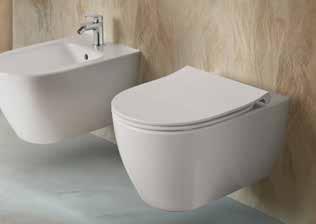

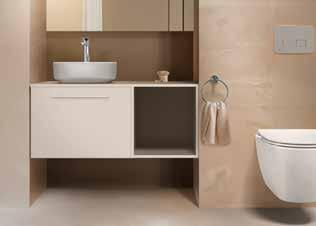
At the heart of the collection is HydroTwist®, an advanced technology that redefines hygiene and efficiency by channeling water into a powerful vortex. Using just 4.5 liters, it surpasses European flushing standards, ensuring a thorough, residuefree clean in a single flush – eliminating the need for a second. Its completely rimless design, with no overhanging edges, makes cleaning effortless. The smooth, open shape allows for a fast and thorough wipe-down in a single motion.
The collection’s vessel basins further enhance the bathroom experience, bringing a spa-like atmosphere into the home. Available in round and oval shapes, their slim, tapered design fits seamlessly on smaller worktops and furniture units. Options with or without overflow and tap decks provide added flexibility to meet diverse needs.
Reflecting Ideal Standard’s ongoing commitment to sustainability, i.life O helps reduce environmental impact. HydroTwist®’s efficient water usage lowers overall consumption, while its powerful flush minimizes reliance on detergents, reducing the chemical load in wastewater. Ideal Standard also recycles approximately 70% of its ceramic waste in collaboration with third parties and continues to implement decarbonization initiatives in its production plants to actively reduce embodied carbon.
Roberto Palomba commented: “The round shape is an evergreen choice in interior design, symbolizing harmony and balance. With i.life O, we have reinterpreted this timeless form to create a modern look that brings a sense of softness and serenity to contemporary bathrooms.”
Part of the Villeroy & Boch Group’s Bathroom & Wellness Division, Ideal Standard is a world-leading brand for high-quality residential, commercial, and healthcare bathroom solutions. Its portfolio combines expertly crafted bathroom products including ceramics,
taps & fittings, bathtubs, furniture, and accessories — delivering a holistic range of cross-category solutions.
The Villeroy & Boch Group is one of the global leaders in premium dining, lifestyle, bathroom, and wellness products. Founded in 1748 and headquartered in Mettlach, Germany, the company stands for innovation, design, and quality. The Group employs more than 12,000 people and is present in over 125 countries.
With its strong brand portfolio, the Bathroom & Wellness Division offers a wide range of sanitary products and fittings for residential and commercial buildings. The combined portfolio gives consumers, customers, and partners worldwide a broad choice of individual products and complete bathroom solutions. More than 300 engineers in design and innovation centers in Germany and Italy develop concepts that stand out for their quality, functionality, and leading design.
The i.life O collection launches in July 2025.
Vessel basins bring spa-like comfort home
Crafted for modern living and sustainable design


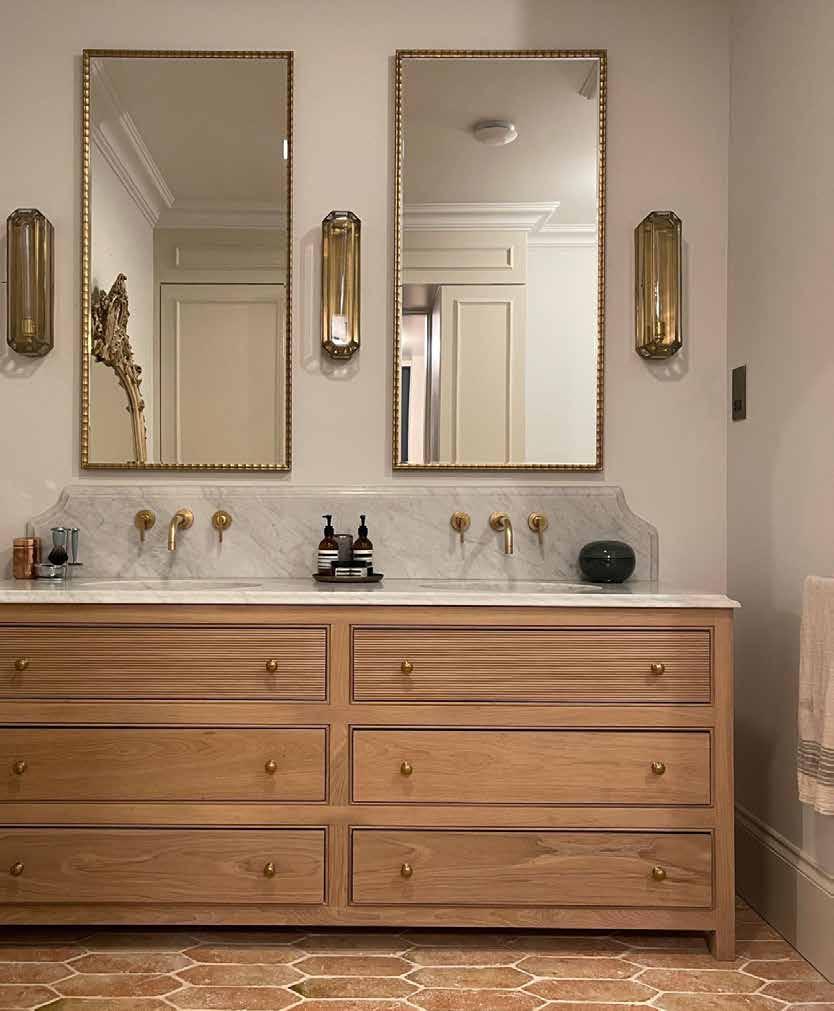
Parker Howley & Co, based in Yorkshire, UK, is renowned for crafting bespoke handmade furniture that combines traditional craftsmanship with contemporary design. Their commitment to quality and attention to detail have positioned them as a preferred partner for luxury interiors worldwide, including the Gulf Cooperation Council (GCC) region.
Luxury bespoke furniture handcrafted in Yorkshire, UK
Trusted partner for high-end interiors in the GCC
The company's portfolio encompasses a wide array of handcrafted furniture pieces tailored to individual client needs. Their offerings include:
• Bespoke Bathroom Vanity Units: Renowned as the UK’s leading bespoke handmade vanity unit supplier. Combining functionality with elegance, these units are designed to enhance bathroom aesthetics.
• Other Bathroom Products: A curated selection of bathroom furnishings, crafted to complement various interior styles, from wall cabinets, mirrors, tall boys to stand alone storage units.
• Custom Furniture Pieces: From Kitchen islands to bedroom furniture to hallway consoles and other storage solutions, each piece is meticulously crafted to meet specific design requirements.
Parker Howley & Co collaborates with esteemed brands to offer comprehensive interior solutions. Their suppler partnerships include:
• House of Rohl: Providing access to premium bathroom fixtures and fittings.
• Victoria + Albert Baths: Offering a range of luxurious freestanding bathtubs and basins.
• Perrin & Rowe: Supplying high-quality brassware and sanitary fittings.
• Francone / Bespoke Taps: A marriage made in heaven, supplying high-quality brassware and sanitary fittings.
• Crosswater: Supplying quality bathroom products from showers to baths to basins to sanitaryware and brassware.
• Armac Martin: Handmade handles with the largest array of finishes in the UK.
• Artisans of Devices: Classed as the leading Tile supplier in the UK with huge ranges of famously designed flooring and wall tiles.
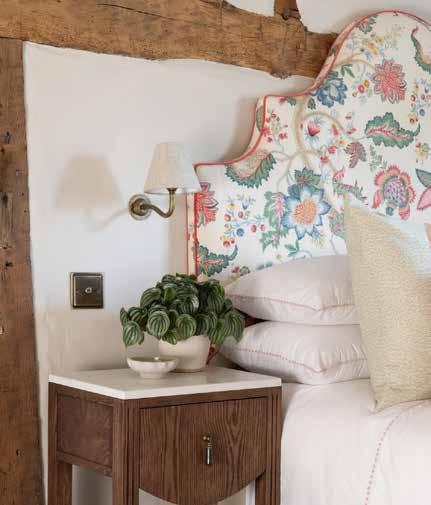


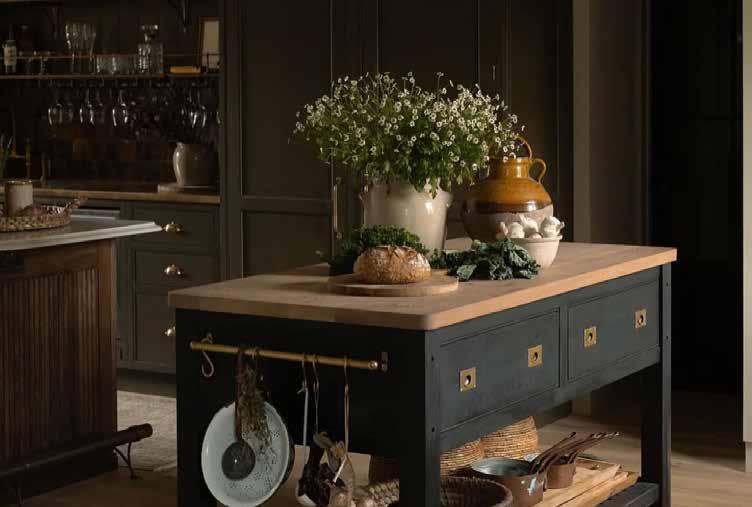

Exclusive collaborations with top global interior designers
• Other brands include: London 1916, BC designs, Corston Architectural, Vitra, Heritage Brass, Vitra, Origins Living, Thomas Crapper, Villeroy & Boch, but to name a few.
Famous Interior Designer Collaborations:
Parker Howley & Co collaborates with two of the leading interior designers worldwide, designing their own collection of unique designs including vanity units and accessories, exclusively available from Parker Howley & Co, these interior designers work regularly in the Middle East and around the world themselves on exclusive property projects:
• House Nine Design: Authentic, Timeless & Liveable. Creating spaces that embody a sense of home. Founded by Jojo Barr, House Nine is a full-service multidisciplinary interior design outfit.
• Sophie Paterson Interiors: Sophie Paterson Interiors is a London and Surrey based design studio specialising in luxury residential interiors internationally.
Presence in the GCC and Worldwide While headquartered in the UK, Parker Howley & Co has extended its reach to the GCC region through strategic partnerships and collaborations. Their bespoke furniture pieces have been featured in various highend residential and commercial projects
across the Middle East. The company offers trade accounts to commercial clients, including interior designers, developers, hoteliers, architects, and retailers, facilitating seamless integration into diverse projects.
Showrooms and Accessibility
To provide clients with a tangible experience of their craftsmanship, Parker Howley & Co has established retail partners in select locations. These spaces showcase their range of bespoke furniture, allowing clients to explore design options and consult with experts at their retail partners. Also offering video calls to showcase a larger range of their products within their own showroom and workshop is a great way to see the product from far afield.
Emphasising sustainable practices, Parker Howley & Co sources materials locally and ensures that all products are crafted in-house. Their dedication to environmental responsibility is evident in their choice of natural materials and eco-friendly production methods.
Parker Howley & Co's fusion of traditional craftsmanship, innovative design, and strategic collaborations has solidified their reputation in the bespoke handmade furniture industry. Their expanding presence in the GCC and commitment to quality make them a valuable partner for projects seeking timeless elegance and functionality.
Sustainably made using locally sourced natural materials
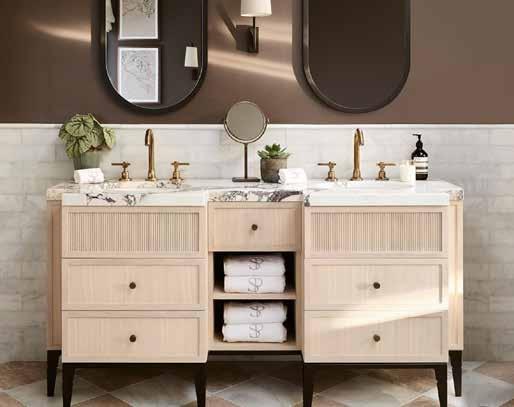

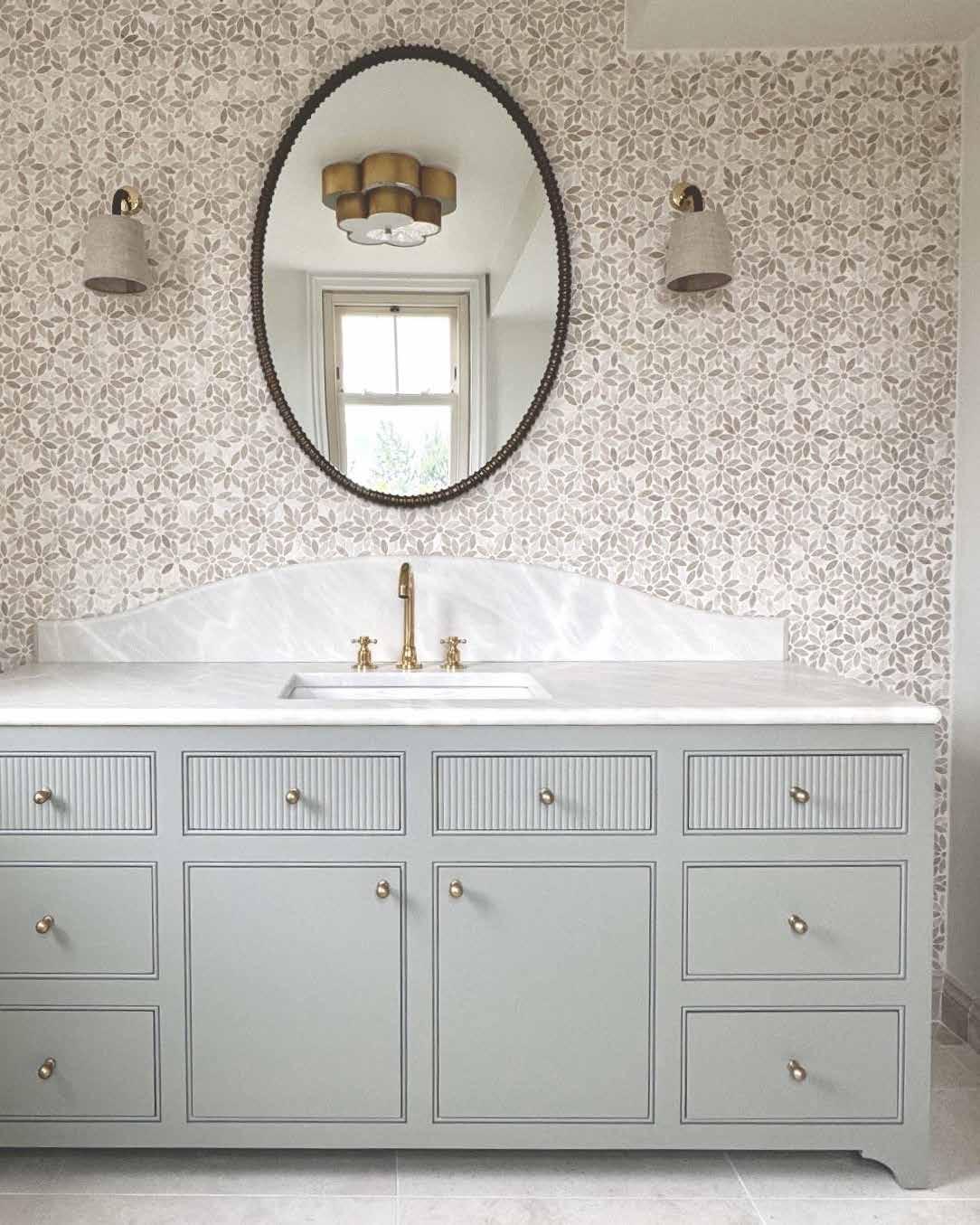
VITRA’S INNOVATIONS THAT RESHAPING THE BATHROOM EXPERIENCE.

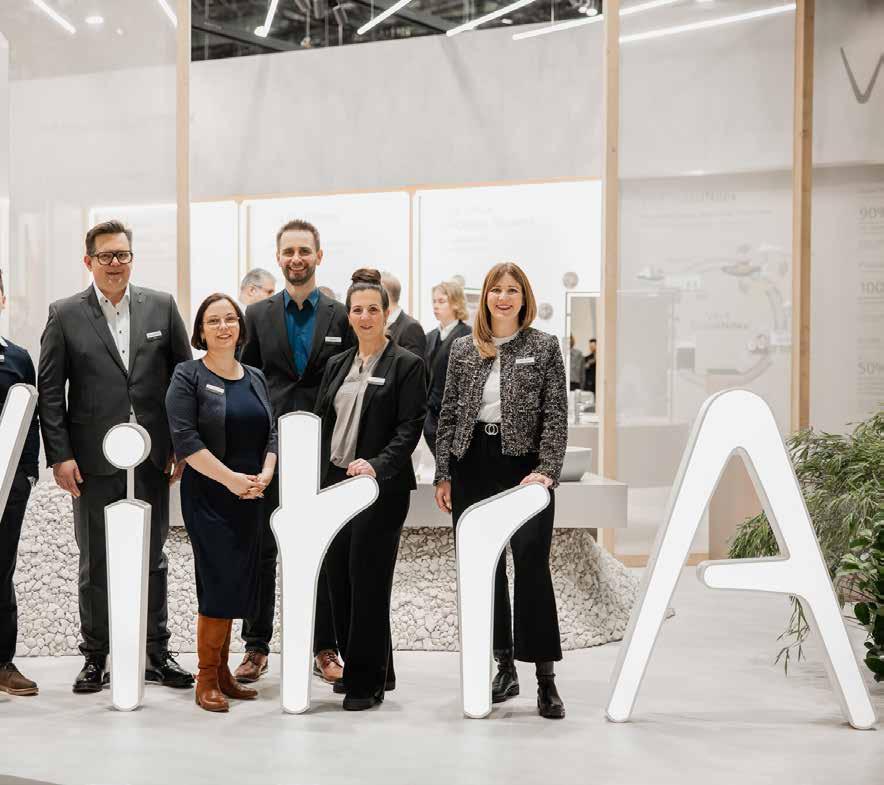
SustaINdex launched to assess product impact
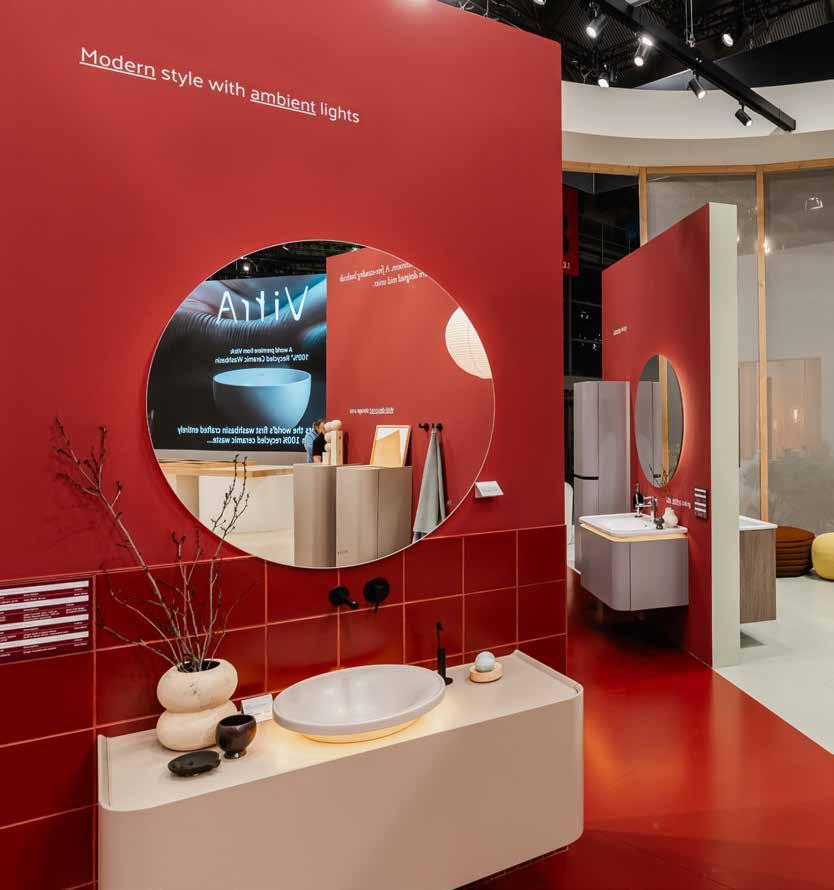
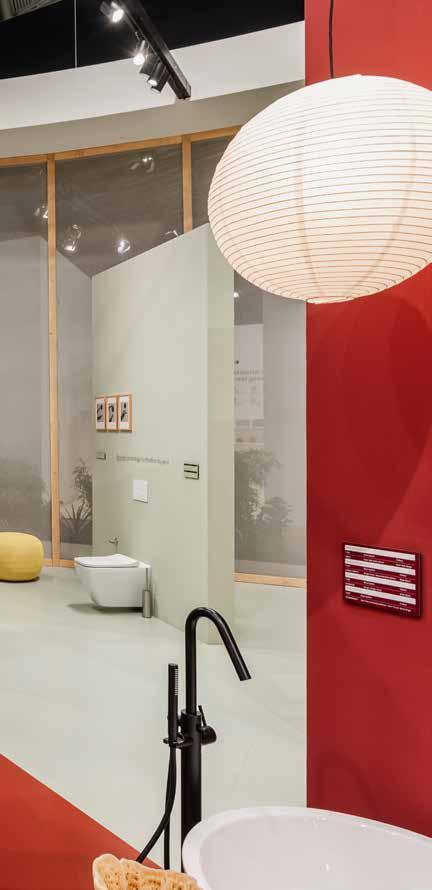
VitrA Grid offered mixand-match versatility
ISH, the world’s largest trade fair for building products was held in Frankfurt in March 2025, brought together industry leaders and cutting-edge innovations. Eczacıbaşı VitrA, participating for the 21st time, unveiled its VitrA Grid product portfolio, acclaimed for its ‘mix-and-match’ versatility. Visitors to the VitrA stand also discovered the latest washbasins, fittings, and bathroom furniture.
This year, VitrA’s ISH stand brought its ‘Design for Life’ philosophy to life through the theme of ‘again,’ inviting visitors to reimagine, rethink, and reshape the role of design in the bathroom. The SustaINdex project—an industry first in sustainability—also made its debut at ISH, underscoring VitrA’s commitment to forward-thinking innovation.
Reshaping life in the bathroom
Designed in four distinct sections, the VitrA stand highlighted the brand’s strengths—its extensive product range, innovation capabilities, and design expertise. VitrA Grid, which reshaped bathroom planning, streamlined space design by offering a wide range of stylish, functional, and adaptable solutions that catered to different styles, spaces, and needs. With a thoughtfully structured approach, it enabled seamless coordination both within and across collections.
VitrA Signature, a series of timeless collections developed in collaboration with leading international designers, reimagined aesthetics in the bathroom. Combining deep design expertise with exceptional craftsmanship, it transformed bathrooms into inspiring living spaces.
At ISH, VitrA invited visitors to rethink the bathroom experience in the innovation area of its stand. Inspired by consumer insights, cutting-edge products redefined wellness and hygiene in the bathroom. Visitors explored the Sense Hybrid washbasin and kitchen faucet, hand and overhead showers, and bath and shower faucets designed to stay cool to the touch—each one enhancing comfort and convenience.
World’s first 100% recycled ceramic washbasin*
A first for the industry; SustaINdex was launched at ISH
VitrA’s new messaging, ‘We are remeasuring the future,’ was showcased in the sustainability-focused area of its stand at ISH. Staying at the forefront of global advancements in products and sustainability, VitrA introduced the SustaINdex project for the first time at ISH—a groundbreaking initiative born from in-house entrepreneurial spirit and developed in collaboration with universities.
A first for the industry, SustaINdex pioneered a calculation methodology that holistically assessed the social and environmental impact of products throughout their entire life cycle. Using this approach, VitrA evaluated, graded, and continuously enhanced the sustainability profile of its product portfolio.
New products that created a buzz
Other standout innovations unveiled at VitrA’s ISH stand included the V-Care smart toilet family, which seamlessly blended design and comfort, QuantumFlush technology, which harnessed the power of water for enhanced hygiene, and V-Fit, a newly developed installation set for concealed cisterns.
VitrA also showcased the world’s first and only 100% recycled ceramic washbasin, presented alongside a toilet seat made from 92% recycled raw materials, which generated 80% fewer carbon emissions than standard products. Among the faucet collections, Minimax Round & Square drew attention with a variety of size options and an extensive color palette.

*Approximately 100% of the content is derived from waste generated and reclaimed during the production process.
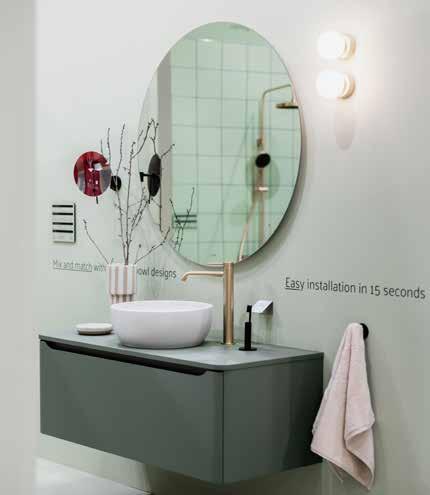
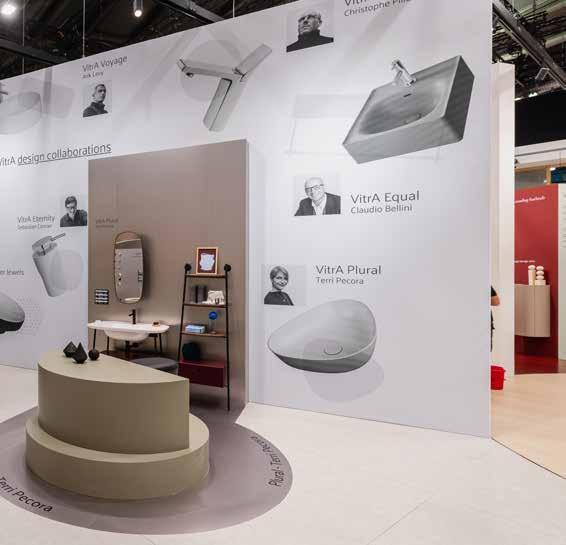
VitrA also presented its latest bathroom furniture at ISH, featuring collections that combined contemporary design with practicality. The new Integra Round & Square collection refreshed bathroom spaces with its modern aesthetic, an extensive product range, and on-trend colors. Offering versatility, it included vanity units and countertop modules, allowing for flexible and personalized use. The new Gala collection introduced spacious storage solutions for makeup units, enhanced by integrated LED lighting and a new tall cabinet concept, transforming bathrooms into stylish yet highly functional spaces. Meanwhile, the Plural collection, designed by the acclaimed Terri Pecora, expanded storage capacity in luxury bathroom furniture with newly integrated solutions, ensuring both elegance and practicality.
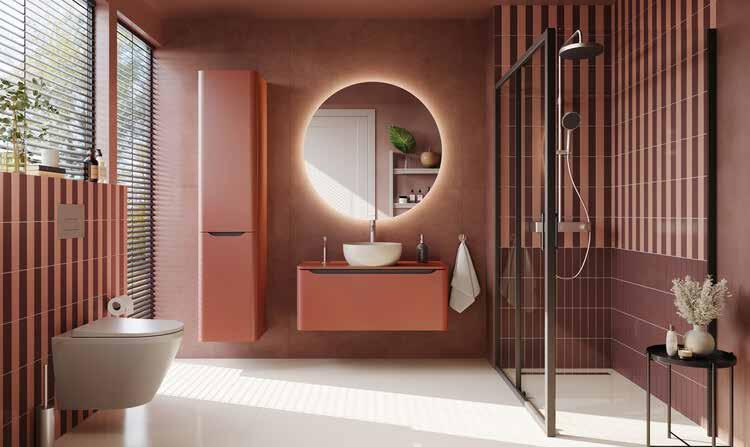

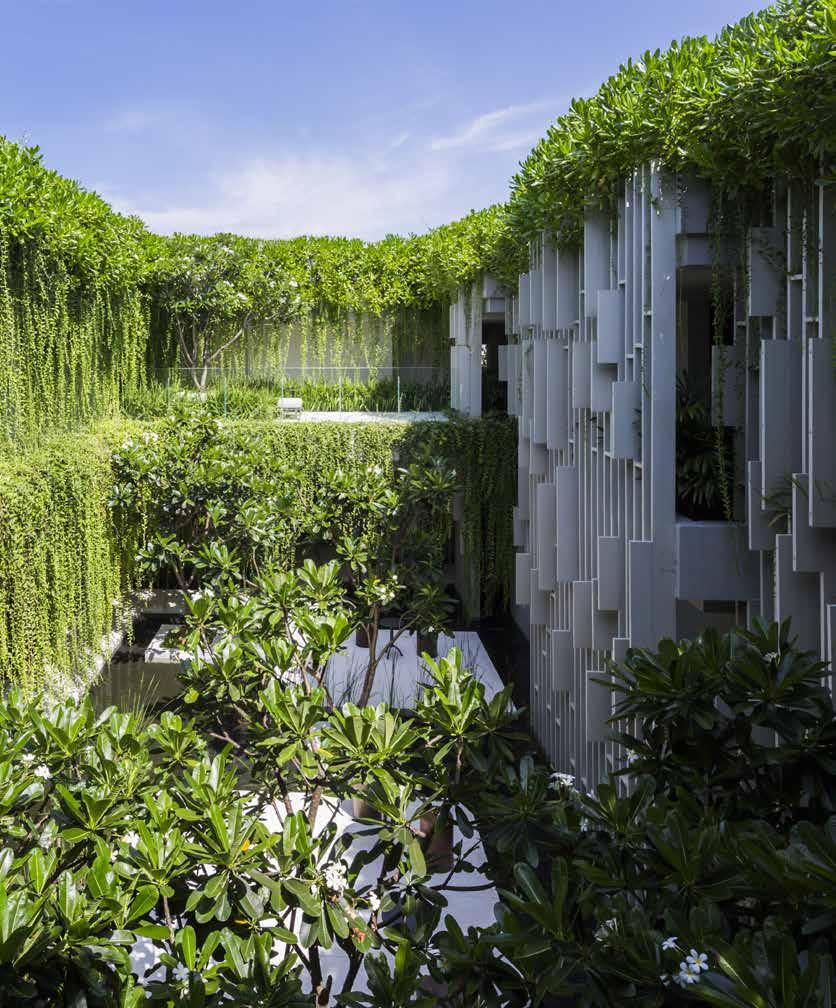
MIA Design Studio is actively expanding into the Middle East, particularly Saudi Arabia, aligning its sustainable and culturally sensitive design philosophy with the Kingdom’s Vision 2030 initiatives. While specific completed projects in the region have not been publicly disclosed, the firm’s focus on luxury hospitality and commercial developments positions it as a valuable partner for developers seeking innovative and sustainable architectural solutions.
MIA Design Studio’s approach involves respecting local culture, heritage, climate, and natural conditions, ensuring that each project reflects a harmonious blend of tradition and modernity. This philosophy aligns with the Kingdom’s emphasis on sustainable development and cultural preservation.
In a world where architecture must balance innovation with sustainability, MIA Design Studio has emerged as a leader. Based in Ho Chi Minh City, this Vietnam-based firm is celebrated for its minimalist, ecofriendly designs that blend seamlessly with natural landscapes. With dedicated team of architects and designers, the studio has built a reputation for creating awardwinning projects that harmonize modernism with nature and cultural heritage.
Founded by Nguyen Hoang Manh, MIA Design Studio’s philosophy goes beyond aesthetics, focusing on environmentally conscious architecture that respects the local context. Each project leverages natural resources, climate, and traditional design elements while incorporating contemporary sensibilities. This balanced approach has earned MIA accolades from the World Architecture Festival, Architecture MasterPrize, Architizer and other global platforms celebrating design excellence.
In an interview with Saudi Projects, Founder and CEO Manh Nguyen emphasized the studio’s commitment to integrating cultural heritage, sustainability, and innovation in its designs. He noted that Saudi Arabia’s ambitious goals mirror MIA Design Studio’s strengths in sustainable and culturally relevant design, making this an opportune time for the firm’s expansion into the Saudi market.



Nature-Inspired MinimalismA Signature Approach
What truly sets MIA Design Studio apart is its philosophy of letting nature lead. Their minimalist designs eliminate unnecessary elements, focusing on simplicity, light, and natural materials. This ethos comes to life in the Naman Retreat Pure Spa—a tranquil wellness sanctuary where openair platforms, lotus ponds, and vertical gardens create a seamless dialogue between architecture and nature.
Instead of imposing on the environment, MIA’s designs integrate with it. Natural ventilation, shaded courtyards, and open-air circulation reduce energy consumption, particularly vital in tropical climates. The iconic green façades and vertical gardens not only enhance aesthetics but also improve insulation, biodiversity, and air quality.
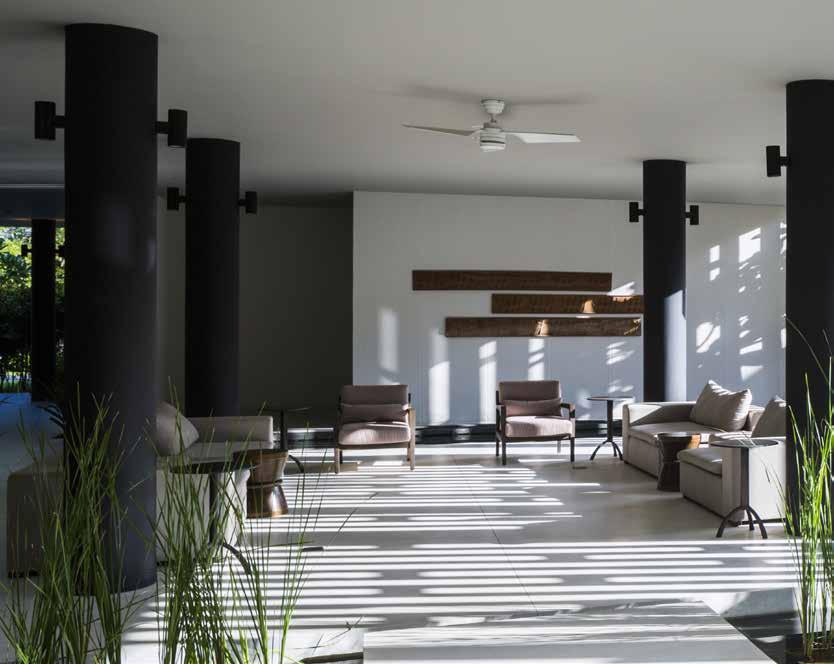
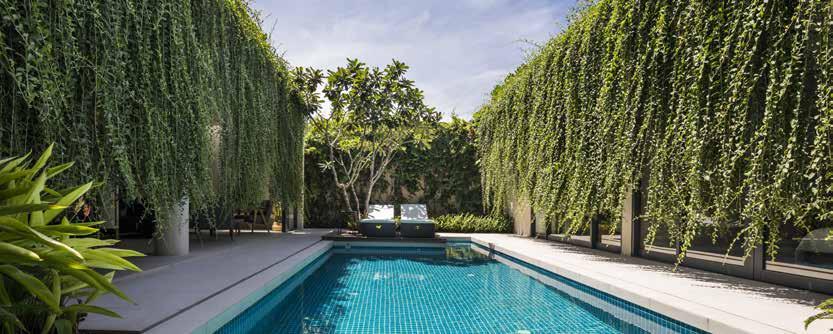

One of MIA’s most distinctive projects, Wyndham Garden Phu Quoc, exemplifies its nature-driven philosophy. Lacking ocean views, the resort was reimagined as a lush garden retreat, inspired by Vietnamese village life. Clusters of villas form intimate hamlets with winding bamboo-lined paths, while each villa opens seamlessly to nature—without interior doors, but with private courtyards and green curtains cascading from the rooftops. The one-storey structures, built with rustic, ecofriendly materials, offer serene views to the sky and surroundings, creating a deep sense of privacy and connection to the landscape.. It’s a prime example of architecture that fosters positive behaviors while blending seamlessly with nature.
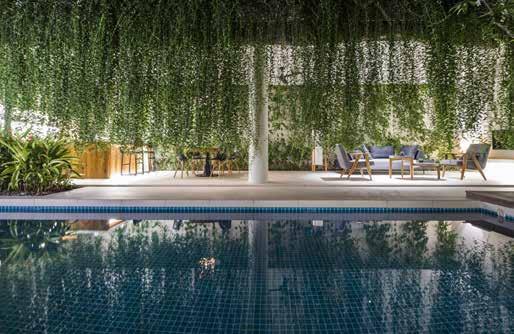



MIA Design Studio also pays homage to Vietnamese architectural traditions by reinterpreting elements like shaded verandas, breezeways, and internal courtyards. This thoughtful blend of modernism and tradition ensures that their structures are not just functional but culturally significant, offering a sense of belonging and place.
Known for sustainable hospitality projects, MIA’s designs prioritize low environmental impact without sacrificing luxury. The Naman Retreat, for example, uses locally sourced materials and passive cooling to create a tranquil, eco-friendly escape. MIA Design Studio understands that true sustainability is rooted in respecting existing natural and cultural resources rather than relying solely on technology.
At its core, MIA Design Studio’s mission is to craft sustainable, thoughtful spaces that give back to communities and the environment. As the world faces rapid urbanization and climate challenges, their work offers a blueprint for how architecture can honor both progress and tradition.
Developers in the Middle East can expect MIA Design Studio to deliver projects that not only meet aesthetic and functional requirements but also contribute positively to the environment and community. The firm’s expertise in creating spaces that foster a deep connection between people and nature positions it as a strategic partner for developments aiming to achieve longterm sustainability and cultural resonance.
To explore MIA Design Studio’s innovative projects, visit www.miadesignstudio.com.
Sustainable Luxury with Minimal Environmental Impact

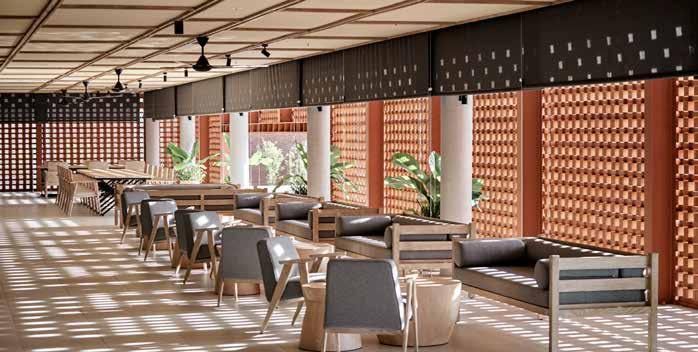
Context- sensitive design & Nature-Led Architecture for a Greener Future
